What are the normal levels of liver enzymes. Understanding Liver Enzyme Levels: Normal Ranges, Causes of Elevation, and Treatment Options
What are the normal levels of liver enzymes. How do doctors interpret elevated liver enzyme results. When should patients be concerned about abnormal liver function tests. What treatment options are available for elevated liver enzymes.
What Are Liver Enzymes and Why Are They Important?
Liver enzymes are proteins produced by liver cells that play crucial roles in various metabolic processes. The two most commonly measured liver enzymes are:
- Alanine transaminase (ALT)
- Aspartate transaminase (AST)
These enzymes are normally found inside liver cells. When liver cells are damaged or die, ALT and AST are released into the bloodstream. Elevated levels of these enzymes in blood tests can indicate liver injury or disease.
Why are liver enzyme tests important? They serve as a valuable screening tool to detect liver problems early, often before symptoms develop. Regular monitoring of liver enzymes can help identify potential liver issues, guide further testing, and inform treatment decisions.
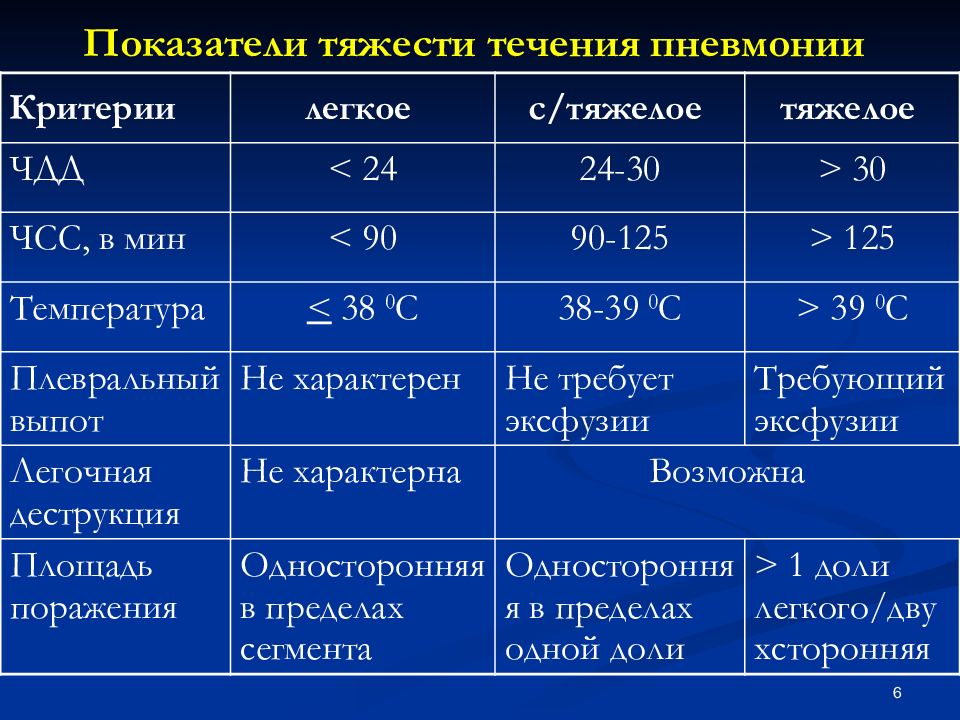
Normal Ranges for Liver Enzyme Levels
The normal ranges for liver enzymes can vary slightly between different laboratories and testing methods. However, generally accepted normal ranges are:
- ALT: 7-56 units per liter (U/L)
- AST: 10-40 units per liter (U/L)
Are slightly elevated liver enzymes always a cause for concern? Not necessarily. Mild elevations (less than 2-3 times the upper limit of normal) are common and often resolve on their own. About 30% of people with mildly elevated liver enzymes will have normal levels when retested in 2-4 weeks.
Factors Affecting Liver Enzyme Levels
Several factors can influence liver enzyme levels, including:
- Age
- Gender
- Body mass index (BMI)
- Medications
- Alcohol consumption
- Recent physical exertion
Healthcare providers consider these factors when interpreting liver enzyme test results to determine if further evaluation is necessary.
Common Causes of Elevated Liver Enzymes
Elevated liver enzymes can result from various conditions affecting the liver. Some of the most common causes include:
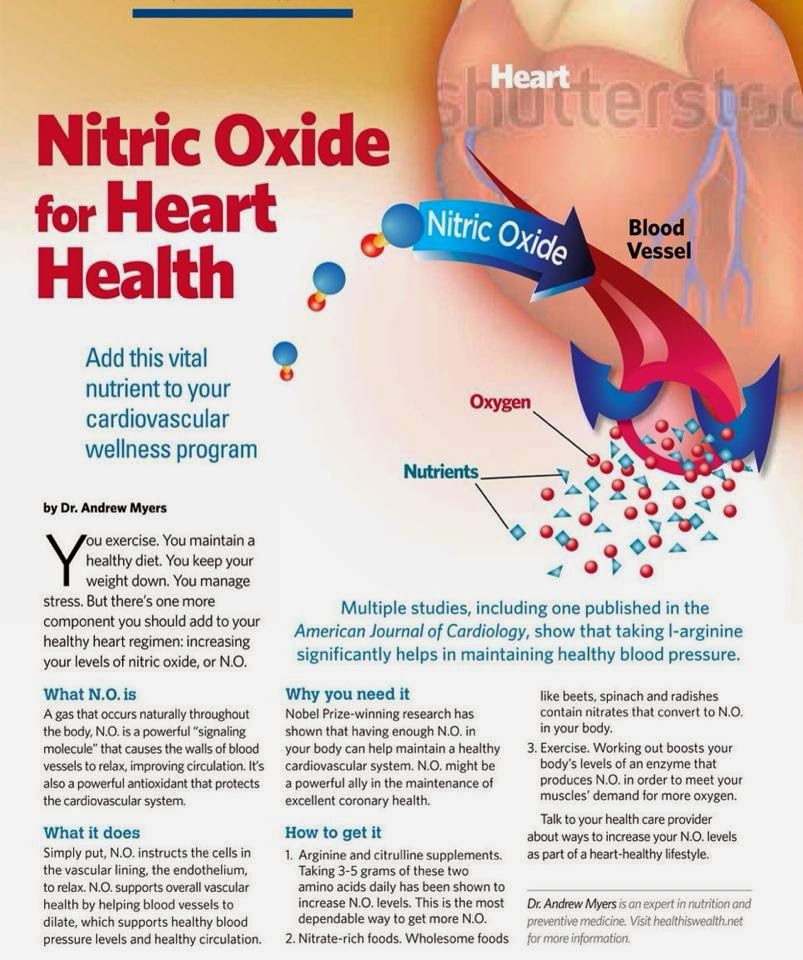
- Nonalcoholic fatty liver disease (NAFLD)
- Alcoholic liver disease
- Viral hepatitis (e.g., hepatitis B and C)
- Medications (e.g., acetaminophen, statins)
- Metabolic syndrome
- Autoimmune liver diseases
- Hemochromatosis
How do doctors determine the underlying cause of elevated liver enzymes? They typically start with a thorough medical history, physical examination, and additional blood tests. In some cases, imaging studies or liver biopsy may be necessary for a definitive diagnosis.
Symptoms Associated with Elevated Liver Enzymes
Do patients with elevated liver enzymes always experience symptoms? Not necessarily. Many people with mildly elevated liver enzymes have no noticeable symptoms. However, as liver damage progresses, some individuals may experience:
- Fatigue
- Abdominal pain or discomfort
- Nausea
- Loss of appetite
- Jaundice (yellowing of the skin and eyes)
- Dark urine
- Pale stools
It’s important to note that the presence or absence of symptoms doesn’t always correlate with the severity of liver damage. Some people with significant liver disease may be asymptomatic, while others with mild elevations may experience symptoms.

Diagnostic Approach for Elevated Liver Enzymes
When liver enzyme tests reveal abnormal results, healthcare providers follow a systematic approach to determine the underlying cause and assess the extent of liver damage. This typically involves:
- Detailed medical history
- Physical examination
- Review of medications and alcohol consumption
- Repeat liver function tests
- Additional blood tests (e.g., viral hepatitis markers, autoimmune antibodies)
- Imaging studies (e.g., ultrasound, CT scan, or MRI)
- Liver biopsy (in some cases)
How long does it take to diagnose the cause of elevated liver enzymes? The timeline can vary depending on the complexity of the case. Some causes may be identified quickly, while others may require more extensive testing and specialist consultation.
Risk Stratification
Healthcare providers often use risk stratification to guide their diagnostic approach. Factors considered include:
- Degree of enzyme elevation
- Presence of symptoms
- Patient’s age and overall health
- Presence of other abnormal liver function tests
This risk-based approach helps determine the urgency and extent of further evaluation needed.
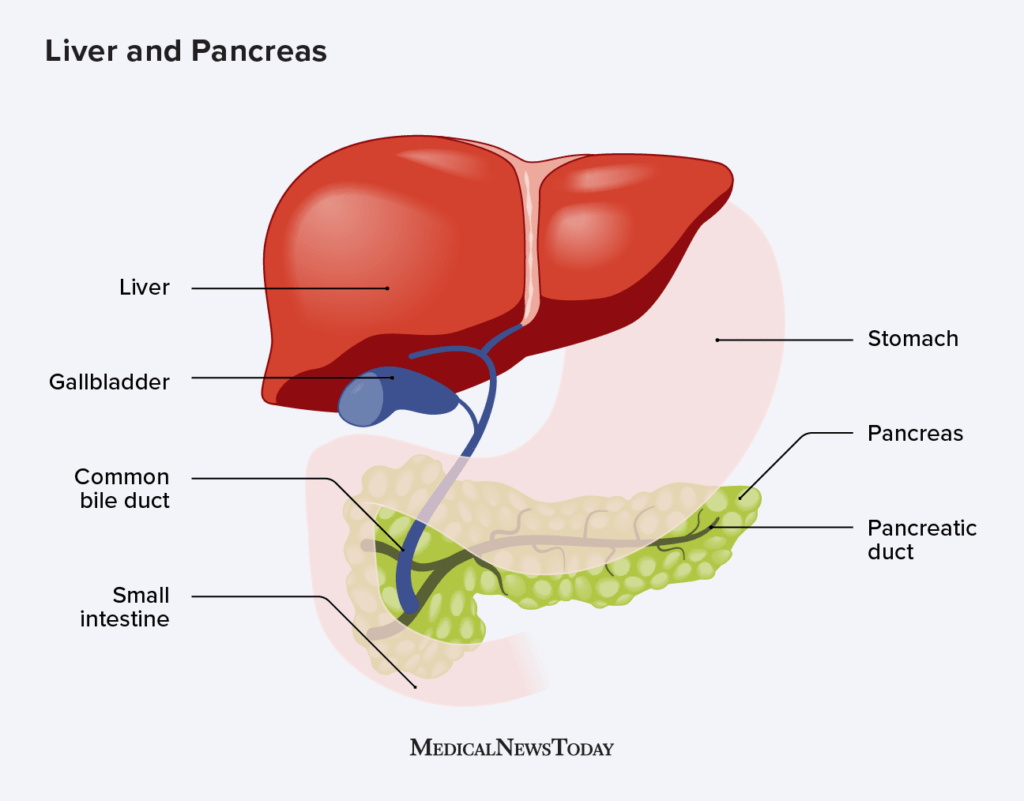
Treatment Options for Elevated Liver Enzymes
The treatment for elevated liver enzymes depends on the underlying cause. Some common approaches include:
- Lifestyle modifications (e.g., weight loss, exercise, alcohol cessation)
- Dietary changes
- Management of underlying conditions (e.g., diabetes, hypertension)
- Antiviral medications for viral hepatitis
- Discontinuation or adjustment of hepatotoxic medications
- Liver-protective supplements (in some cases)
Can elevated liver enzymes be reversed? In many cases, yes. With appropriate treatment and lifestyle changes, liver enzyme levels often return to normal, especially if the underlying cause is addressed early.
Monitoring and Follow-up
Regular monitoring is essential for patients with elevated liver enzymes. This typically involves:
- Periodic liver function tests
- Assessment of treatment response
- Adjustment of management strategies as needed
The frequency of follow-up depends on the severity of liver enzyme elevation and the underlying condition.
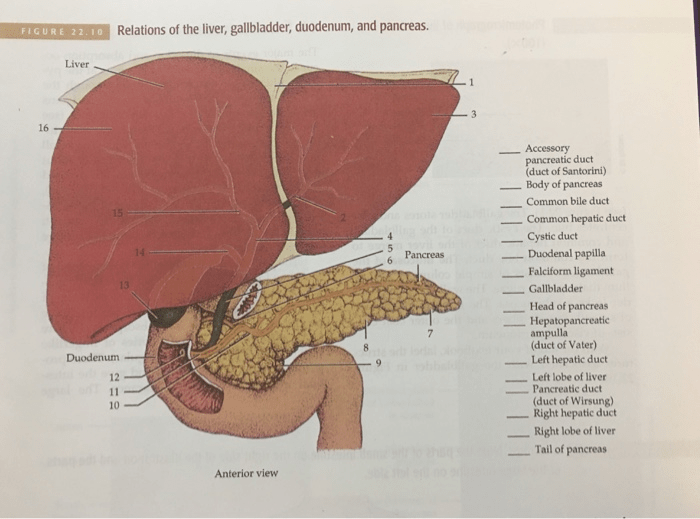
Nonalcoholic Fatty Liver Disease (NAFLD): A Growing Concern
Nonalcoholic fatty liver disease (NAFLD) is becoming increasingly prevalent, affecting an estimated 25-30% of adults in Western countries. It is closely associated with obesity, diabetes, and metabolic syndrome.
What are the stages of NAFLD? The condition progresses through several stages:
- Simple fatty liver (steatosis)
- Nonalcoholic steatohepatitis (NASH)
- Fibrosis
- Cirrhosis
Early detection and intervention are crucial to prevent progression to more severe stages of liver disease.
Management of NAFLD
The primary treatment for NAFLD focuses on lifestyle modifications:
- Weight loss (7-10% of body weight)
- Regular exercise (150 minutes of moderate-intensity exercise per week)
- Healthy diet (Mediterranean diet is often recommended)
- Management of associated conditions (e.g., diabetes, hypertension)
In some cases, medications may be prescribed to address specific aspects of NAFLD or its associated conditions.
When to Seek Specialist Care for Liver Enzyme Abnormalities
While many cases of mildly elevated liver enzymes can be managed in primary care, certain situations warrant referral to a hepatologist or gastroenterologist:
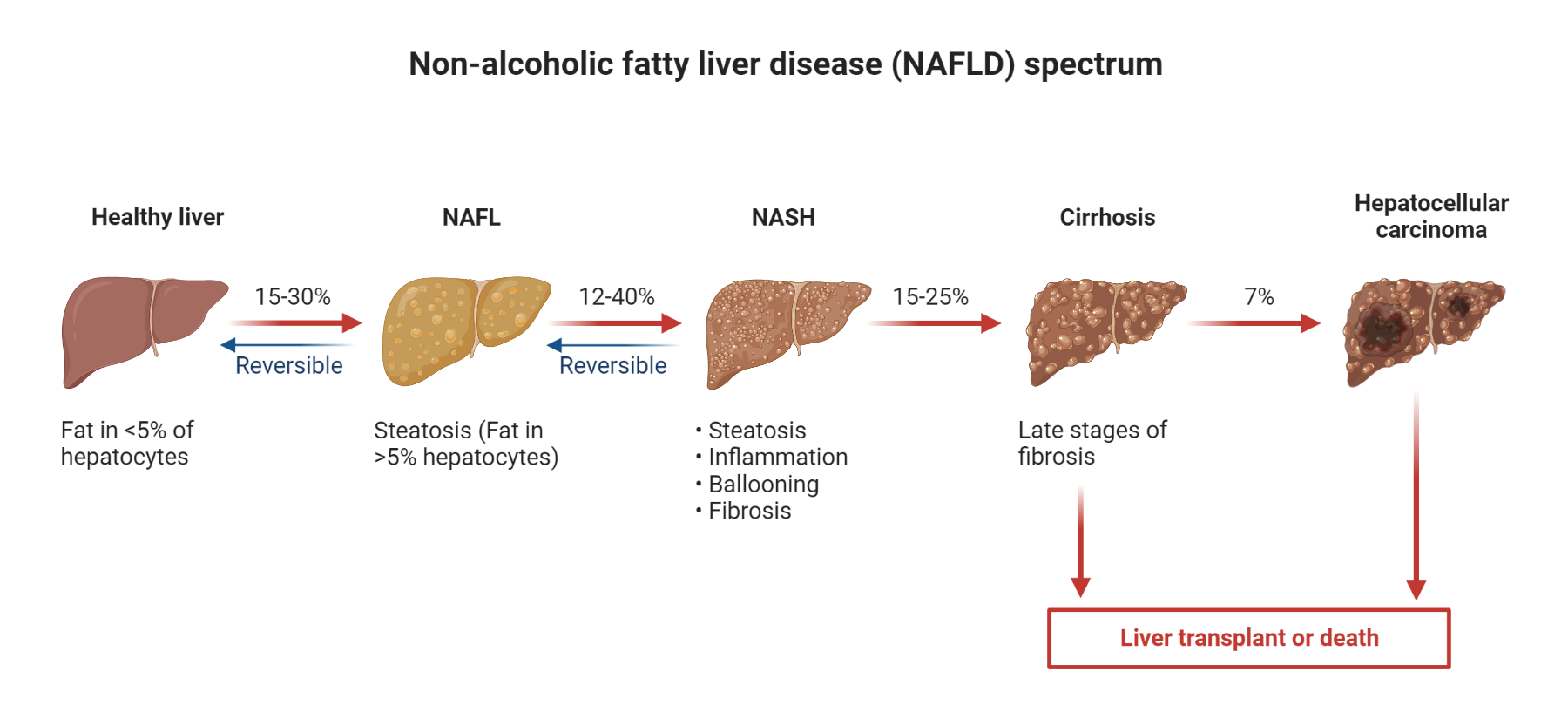
- Persistent elevation of liver enzymes despite initial management
- Severe elevation of liver enzymes (more than 5 times the upper limit of normal)
- Signs of advanced liver disease (e.g., ascites, hepatic encephalopathy)
- Suspected autoimmune liver disease
- Complicated cases of viral hepatitis
- Need for liver biopsy
How quickly should patients with abnormal liver enzymes be referred to a specialist? The urgency of referral depends on the severity of enzyme elevation, presence of symptoms, and overall clinical picture. In some cases, same-day or emergency referral may be necessary.
Role of Liver Biopsy
Liver biopsy remains the gold standard for diagnosing and staging many liver diseases. It may be recommended when:
- The cause of liver enzyme elevation remains unclear after non-invasive testing
- Staging of liver fibrosis is needed to guide treatment decisions
- There’s suspicion of multiple concurrent liver diseases
However, with advances in non-invasive testing methods, such as FibroScan and serum biomarkers, the need for liver biopsy has decreased in recent years.

Understanding liver enzyme levels and their implications is crucial for early detection and management of liver diseases. By recognizing the significance of abnormal results, healthcare providers can initiate appropriate diagnostic workups and interventions to prevent progression of liver damage. Patients, too, play a vital role in maintaining liver health through lifestyle choices and adherence to recommended treatments and follow-up care.
Elevated Liver Enzymes – American Family Physician
Please note: This information was current at the time of publication. But medical information is always changing, and some information given here may be out of date. For regularly updated information on a variety of health topics, please visit familydoctor.org, the AAFP patient education website.
Information from Your Family Doctor
Am Fam Physician. 2011 Nov 1;84(9):1010.
See related article on mildly elevated liver transaminase levels.
What are liver enzymes?
The liver releases several substances when it is injured. Two of these are enzymes called alanine transaminase (ALT) and aspartate transaminase (AST).
What causes elevated ALT and AST levels?
There are many causes of mildly elevated ALT and AST levels. About three out of 10 people will have normal levels again if blood tests are repeated in two to four weeks. Medical conditions such as hepatitis (swelling of the liver), nonalcoholic fatty liver disease, the metabolic syndrome, and alcoholic liver disease are the more common causes. Certain medicines can also cause elevated liver enzymes.
Medical conditions such as hepatitis (swelling of the liver), nonalcoholic fatty liver disease, the metabolic syndrome, and alcoholic liver disease are the more common causes. Certain medicines can also cause elevated liver enzymes.
What are some of the symptoms of elevated ALT and AST levels?
People with mild elevations usually do not have any symptoms.
What will my doctor do?
Your doctor will ask you questions and examine you to try to find out why your enzymes are elevated. He or she may do another blood test to make sure the results weren’t wrong. If these tests are also positive, your doctor will do other tests to find out what is causing the problem.
How is it treated?
Treatment depends on what is causing your liver enzymes to be elevated. If your doctor thinks you have nonalcoholic fatty liver disease or the metabolic syndrome, you will need to watch your diet, stop drinking alcohol, lose weight, and control your cholesterol.
What if my liver enzymes stay elevated?
If your liver enzymes are still elevated after six months, your doctor may do more blood tests or an ultrasound.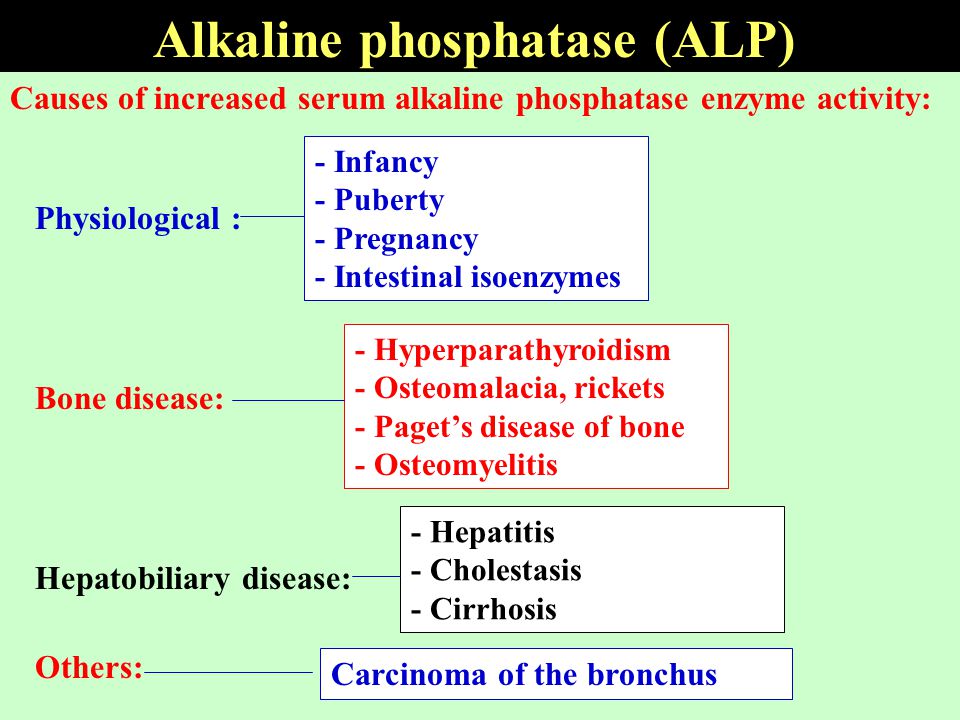 He or she also might want you to see another doctor who specializes in the digestive system. This doctor will check for other causes and may also do a liver biopsy.
He or she also might want you to see another doctor who specializes in the digestive system. This doctor will check for other causes and may also do a liver biopsy.
To see the full article, log in or purchase access.
This handout is provided to you by your family doctor and the American Academy of Family Physicians. Other health-related information is available from the AAFP online at http://familydoctor.org.
This information provides a general overview and may not apply to everyone. Talk to your family doctor to find out if this information applies to you and to get more information on this subject.
Copyright © 2011 by the American Academy of Family Physicians.
This content is owned by the AAFP. A person viewing it online may make one printout of the material and may use that printout only for his or her personal, non-commercial reference. This material may not otherwise be downloaded, copied, printed, stored, transmitted or reproduced in any medium, whether now known or later invented, except as authorized in writing by the AAFP. Contact
Contact
[email protected] for copyright questions and/or permission requests.
Liver blood tests: how to interpret abnormal results | Implementing guidelines
Read this article to learn more about:
- when to request liver blood tests and how to interpret the results
- actions to take if results of liver blood tests are abnormal
- approaches to common conditions, including non-alcoholic fatty liver disease.
Key points
GP commissioning message
Guidelines Learning
After reading this article, ‘Test and reflect’ on your updated knowledge with our multiple-choice questions. Earn 0.5 CPD credits.
For many major causes of death, including chest, neoplastic, and vascular disease, mortality is falling.1 However, deaths due to liver disease are rising rapidly; between 1970 and 2010 the UK standardised mortality rate for liver disease increased by over 400%. 1 The mortality rate for patients under 65 years of age increased by almost 500% over the same period,1 and liver disease is now the fifth most prevalent cause of premature death in England and Wales.2
1 The mortality rate for patients under 65 years of age increased by almost 500% over the same period,1 and liver disease is now the fifth most prevalent cause of premature death in England and Wales.2
Liver disease in adults has three major causes: alcohol misuse; chronic viral hepatitis; and obesity/metabolic syndrome, which may lead to non-alcoholic fatty liver disease (NAFLD).3 Much liver disease is preventable and if it is diagnosed early, clinical interventions and lifestyle changes may slow or stop disease progression.3
In its early stages, liver disease is often asymptomatic—approximately 50% of patients with cirrhosis are first diagnosed when admitted to hospital with a decompensating event, such as ascites, bleeding varices, or hepatic encephalopathy.4
Primary care has a major role to play in the prevention and early detection of liver disease, and liver blood tests are an important aspect of this. In November 2017, the British Society of Gastroenterology (BSG) published Guidelines on the management of abnormal liver blood tests. The guideline is designed to be used in both primary and secondary care and includes recommendations on:3
In November 2017, the British Society of Gastroenterology (BSG) published Guidelines on the management of abnormal liver blood tests. The guideline is designed to be used in both primary and secondary care and includes recommendations on:3
- what constitutes an abnormal liver blood test
- how to respond to abnormal liver blood test results
- when liver blood tests should be performed
- what comprises a standard liver blood test panel.
Although traditionally referred to as liver function tests (LFTs), typical testing panels include measurement of hepatobiliary enzymes in addition to true measures of liver function. For this reason, the BSG guidance refers to liver blood tests rather than LFTs to capture more accurately the relevance to clinical practice.3
The need for guidance
There is no standardised panel for liver blood tests and testing varies between hospitals.3
Liver blood tests can be a challenge to interpret; results may be normal or near normal even in advanced liver disease, and, when abnormal, the degree of abnormality may not reflect disease severity—liver blood tests may be abnormal even when there is no significant liver disease. 3 Standard liver blood test panels may be used routinely when patients have unexplained or non-specific symptoms and in these circumstances abnormal results are found in around 20% of patients.5 The significance of these results is often unclear and patients are frequently subject to further cycles of investigation, yet most patients referred to hospital with abnormal liver blood tests do not have significant liver disease.5
3 Standard liver blood test panels may be used routinely when patients have unexplained or non-specific symptoms and in these circumstances abnormal results are found in around 20% of patients.5 The significance of these results is often unclear and patients are frequently subject to further cycles of investigation, yet most patients referred to hospital with abnormal liver blood tests do not have significant liver disease.5
When to perform liver blood tests
Non-specific symptoms
Liver disease can develop with few signs or symptoms, but using liver blood tests to investigate non-specific symptoms that may indicate liver disease, such as anorexia, fatigue, or nausea, may identify a hepatic condition that can be effectively treated.3 Using routine liver blood tests to investigate vague symptoms that do not point to possible liver disease may not be clinically helpful.
Evidence of chronic liver disease
Liver blood tests, including international normalised ratio (INR), should be used to assess and monitor liver function in patients who have symptoms or signs of cirrhosis, portal hypertension, or liver failure. Signs and symptoms include ascites, peripheral oedema, spider naevi, and hepatosplenomegaly.3
Signs and symptoms include ascites, peripheral oedema, spider naevi, and hepatosplenomegaly.3
Conditions associated with a risk of developing liver disease
Patients with other autoimmune diseases are known to be at increased risk of developing autoimmune liver disease. Liver blood tests may, therefore, be appropriate if patients with autoimmune diseases develop symptoms that suggest liver disease, such as pruritus in primary biliary cholangitis.3
Additionally, patients with inflammatory bowel disease have just under a 10% risk of developing primary sclerosing cholangitis and should be considered for liver blood test monitoring.3
Use of hepatotoxic drugs
Because a wide variety of drugs have been associated with liver disease, liver blood tests may be recommended to monitor liver function in patients prescribed certain medications such as carbamazepine, methyldopa, minocycline, macrolide antibiotics, nitrofurantoin, statins, sulphonamides, terbinafine, chlorpromazine, and methotrexate. 3
3
Although statins can lead to drug-induced liver injury this is rare, and studies have demonstrated that statins are generally suitable for use in patients with pre-existing abnormal liver enzymes.3
Family history of liver diseases
Patients who have relatives with familial diseases, including haemochromatosis or Wilson’s disease, should be screened for these conditions with relevant tests.3
Alcohol misuse
Liver enzymes are of little value in assessing the extent of alcohol misuse, and are a poor guide to the development of progressive fibrosis in alcohol-related liver disease (ARLD). Elevated enzymes may, however, be useful in motivating behaviour change, with elevated gamma-glutamyltransferase (GGT) being the best predictor of mortality.3 NICE Guideline (NG) 50 on Cirrhosis in over 16s: assessment and management recommends screening for cirrhosis using transient elastography in patients who have been drinking at harmful levels (in excess of 50 units per week and 35 units per week for men and women, respectively) for several months. 6
6
Viral hepatitis
Chronic viral hepatitis may be associated with non-specific symptoms, including fatigue, but most patients are symptom-free. Tests for hepatitis B and/or hepatitis C are recommended when risk factors are identified and as part of a liver aetiology screen when liver blood tests are abnormal. Risk factors for hepatitis include:3
- birth or upbringing in a high-prevalence country
- a history of injecting drugs
- close household contact with someone with viral hepatitis
- time spent in prison.
Risk factors for non-alcoholic fatty liver disease
Normally suspected following abnormal liver blood tests or an echobright liver on ultrasound scan, non-alcoholic fatty liver disease (NAFLD) is, in part, a diagnosis of exclusion. When fatty change is seen on ultrasound, other causes including alcohol misuse and viral hepatitis, should be considered.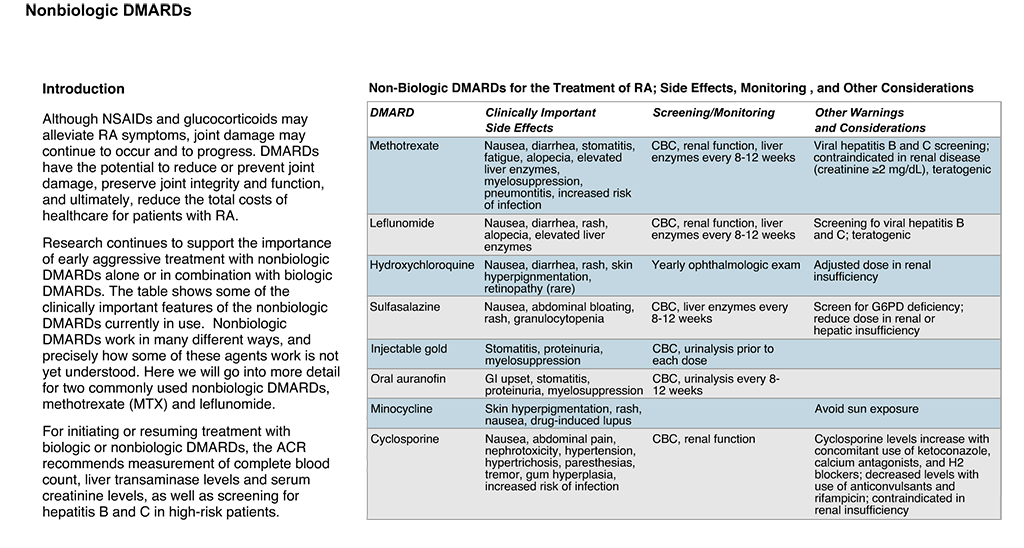 3 NICE Guideline 49 on Non-alcoholic fatty liver disease (NAFLD): assessment and management recommends that liver bloods tests should not be used to rule out NAFLD in those with risk factors such as obesity and metabolic syndrome.7
3 NICE Guideline 49 on Non-alcoholic fatty liver disease (NAFLD): assessment and management recommends that liver bloods tests should not be used to rule out NAFLD in those with risk factors such as obesity and metabolic syndrome.7
Interpreting test results
The BSG guidelines3 include information on a range of different liver blood tests, providing guidance on how test results should be interpreted and making recommendations for further investigations that may be appropriate.
Bilirubin
Most laboratories report total bilirubin, which will be raised by an elevation of either the conjugated or the unconjugated form. In adults, the most likely cause of an isolated raised unconjugated bilirubin, once haemolysis has been excluded, is Gilbert’s syndrome—an inherited metabolic disorder characterised by impaired conjugation, which is not associated with liver disease.3 Raised conjugated bilirubin is seen in obstruction of the hepatobiliary system or in parenchymal liver disease, such as hepatitis from any cause or advanced cirrhosis.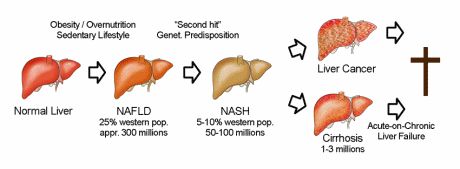 3
3
Interpretation of hyperbilirubinaemia in neonates and infants requires specialist support because of the risk of kernicterus and the need to diagnose with urgency conditions such as biliary atresia.8
Albumin
Albumin is a protein synthesised by the liver that can serve as a marker of synthetic liver function. Albumin concentration may, however, be reduced in other clinical situations, including sepsis, systemic inflammatory disorders, nephrotic syndrome, malabsorption, and gastrointestinal protein loss.3
Alkaline phosphatase
Alkaline phosphatase (ALP) is predominantly a liver enzyme but is also found in bone and in smaller quantities in the intestines, kidneys, and white blood cells. Levels of ALP are higher in childhood and in pregnancy, where it is associated with bone growth and placental production, respectively.3 Consequently, pathologically increased levels of ALP may be found not only in cholestatic liver disease (e. g. common bile duct obstruction, intrahepatic duct obstruction [including by metastases], primary biliary cholangitis, primary sclerosing cholangitis, and drug-induced cholestasis) but also in bone disease (metastatic bone disease, vitamin D deficiency, Paget’s disease, and bone fractures). Raised ALP may also result from cholestasis caused by hepatic congestion due to right-sided heart failure.3
g. common bile duct obstruction, intrahepatic duct obstruction [including by metastases], primary biliary cholangitis, primary sclerosing cholangitis, and drug-induced cholestasis) but also in bone disease (metastatic bone disease, vitamin D deficiency, Paget’s disease, and bone fractures). Raised ALP may also result from cholestasis caused by hepatic congestion due to right-sided heart failure.3
If ALP is elevated in isolation, measurement of GGT (see below) can help to provide some indication as to whether or not the origin is hepatic, and, if doubt remains, electrophoresis can be used to differentiate hepatic from non-hepatic ALP.3
Aspartate aminotransferase and alanine aminotransferase
Elevated levels of aspartate aminotransferase (AST) and alanine aminotransferase (ALT) are the most common abnormalities seen in liver blood tests. Both AST and ALT are enzymes present in hepatocytes that are released into the blood following hepatocyte injury or death. 3 Alanine aminotransferase is present at low concentrations in non-hepatic tissue and elevations that are not liver-related are uncommon. In contrast, AST is present in cardiac, smooth, and skeletal muscle and may be elevated in myocardial infarction or myositis. Although AST is not as liver-specific as ALT, it may be a more sensitive indicator of liver cell injury.3
3 Alanine aminotransferase is present at low concentrations in non-hepatic tissue and elevations that are not liver-related are uncommon. In contrast, AST is present in cardiac, smooth, and skeletal muscle and may be elevated in myocardial infarction or myositis. Although AST is not as liver-specific as ALT, it may be a more sensitive indicator of liver cell injury.3
In children, creatine kinase measurement may help to determine whether an isolated rise in either of these two enzymes is due to an underlying skeletal muscle disorder, such as muscular dystrophy.3
Gamma-glutamyltransferase
Abundant in the liver and also present in the intestines, kidneys, pancreas, and prostate, but not in bone, GGT can be useful in determining whether elevated ALP is of bone or liver origin. Levels of GGT may be elevated by factors that are not liver-related, including obesity, excess alcohol consumption, and certain drugs. In spite of this low specificity, GGT is one of the best predictors of mortality in liver disease. 3
3
As ALP is not a reliable indicator in children, GGT can be used to establish the likelihood of biliary disease, for example congenital abnormalities of the biliary tract and genetic disorders of bile metabolism.3
Coagulation tests
Prothrombin time (PT) and international normalised ratio (INR) are measures of blood clotting. Clotting factors are synthesised in the liver and, when there is significant liver damage (usually >70% loss of synthetic function), their production is reduced, which may be demonstrated by prolonged PT or INR. Prolonged PT or INR can, therefore, indicate acute or chronic liver dysfunction, but can also be caused by vitamin K deficiency in fat malabsorption and chronic cholestasis.3
Platelets
Platelet reduction is an indicator of advanced liver disease, although platelets may be reduced in a wide variety of medical conditions. In liver morbidity, platelet reduction is associated with splenic enlargement secondary to portal hypertension with consequent platelet sequestration; a reduction in thrombopoietin levels; and reduced platelet production. 3
3
Abnormal test results
When results of liver blood tests are abnormal, the clinical response should include: obtaining a thorough clinical history; performing examinations; and, in appropriate patient groups, considering primary sclerosing cholangitis and viral hepatitis (see Box 1 and Figure 1).3
Box 1: Clinical responses to abnormal liver blood tests
3
- Obtain a thorough clinical history, including:
- age
- country of birth
- any liver-related symptoms, such as abdominal pain, jaundice, pruritus, weight loss, etc
- presence of co-morbidities (e.g. heart failure, autoimmune conditions, inflammatory bowel disease, malignant disease) and features of metabolic syndrome, such as central obesity, hypertension, diabetes/insulin resistance, and dyslipidaemia
- use of any prescribed, over-the-counter, herbal, illicit, or injected drugs
- recent travel
- occupation
- tick bites
- muscle injury
- alcohol history
- family history—
- in children this should include maternal, neonatal, nutritional, and developmental history
- Perform an examination, considering:
- ascites
- body mass index
- hepatosplenomegaly
- other signs of chronic liver disease
- Consider hepatitis A, hepatitis E, and cytomegalovirus infection if marked elevation of ALT (>1000 U/litre)
- In patients with raised cholestatic liver enzymes and either a personal or family history of autoimmune disease or a personal history of inflammatory bowel disease consider primary sclerosing cholangitis.

ALT=alanine aminotransferase
Show Fullscreen
Approaches to common conditions
Non-alcoholic fatty liver disease
Non-alcoholic fatty liver disease is most commonly suggested by an echobright liver on ultrasound and other causes of fatty changes in the liver, including alcohol misuse, must be excluded in order to establish the diagnosis.3
Once NAFLD has been diagnosed, the BSG guideline recommends screening for advanced fibrosis using a non-invasive, algorithm-based assessment that brings together serum and other biomarkers. Examples include Fibrosis-4 (FIB-4) or NAFLD fibrosis score (NFS).3 NICE Guideline 49 recommends considering the enhanced liver fibrosis (ELF) test for this purpose.7
Patients with NAFLD who do not have advanced fibrosis can be managed in primary care, with treatment focusing on:3
- long-term weight loss through reduced calorie intake and increased physical activity
- management of co-morbidities, including diabetes, dyslipidaemia, and hypertension.

Where tests indicate advanced fibrosis the patient should be referred to a hepatologist.3
Alcohol-related liver disease
Alcohol-related liver disease is the most common cause of liver-related mortality in western populations. Most patients with ARLD drink heavily, but ARLD is not limited to those who are dependent on alcohol. A relationship also exists with obesity—the risk of liver disease doubles for any given alcohol intake when body mass index exceeds 35 kg/m2.3
Prevention and treatment of ARLD is focused on helping patients to stop drinking harmfully.3 Brief alcohol interventions in primary care are effective at lower levels of alcohol misuse, but those who are unable to address their drinking or who are dependent on alcohol should be referred to alcohol services.
Conclusion
Primary care clinicians have an important role in the prevention, early diagnosis, initial investigation, and referral of patients with liver disease.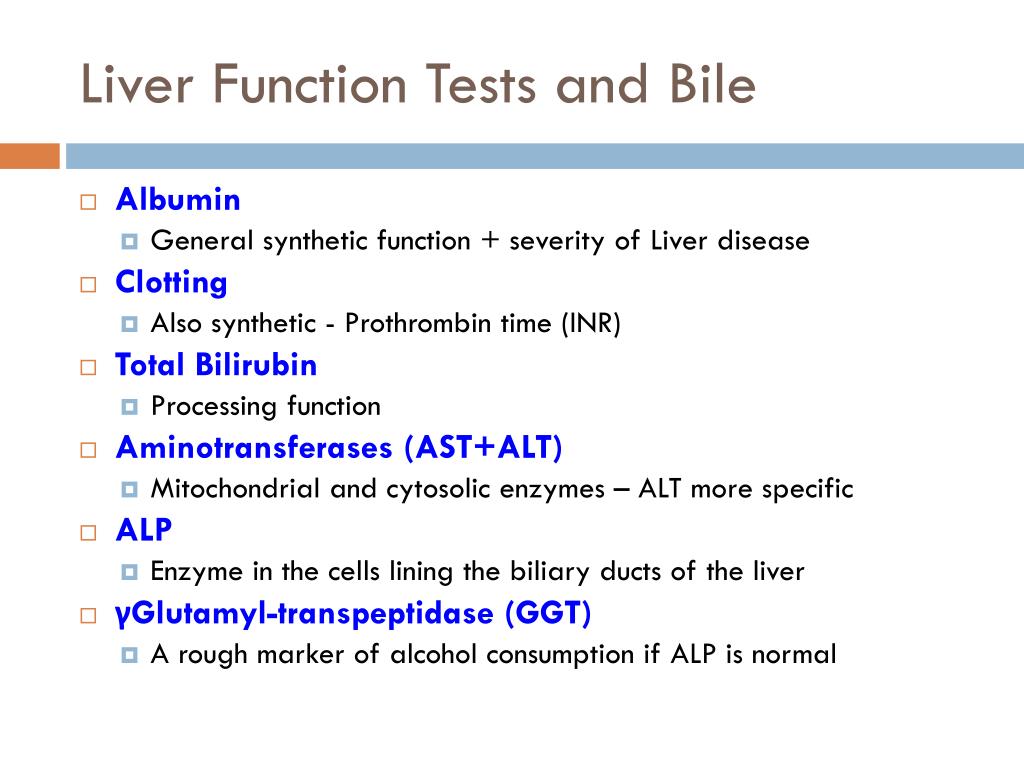 There are, however, challenges associated with this, including:
There are, however, challenges associated with this, including:
- the large number of patients with risk factors for developing liver disease
- limited time available for GPs and practice nurses
- lack of confidence in delivering brief interventions for alcohol and obesity
- availability of referral pathways for patients who misuse alcohol or who are obese
- investigations, including ELF and transient elastography testing, being difficult to access.
Appropriate use of liver blood tests can support early diagnosis and the identification of risk factors for liver disease. This in turn enables the use of early interventions to stop liver disease developing, or prevent early liver disease progressing to cirrhosis. The BSG guidance on liver blood tests provides recommendations on choosing appropriate liver blood tests, interpreting the results, and subsequent actions, which it is hoped will support the important role of primary care in preventing and identifying liver disease. For sources of further information, see Box 2.
For sources of further information, see Box 2.
Box 2: Information for patients, carers, and practitioners
- As part of the Liver disease priority programme, the British Liver Trust and Royal College of General Practitioners are working in partnership to develop a toolkit containing information and resources for GPs, practice nurses, and patients, which is available at: www.rcgp.org.uk/clinical-and-research/toolkits/liver-disease-toolkit.aspx
- The website of the British Liver Trust (www.britishlivertrust.org.uk) also provides comprehensive information both for healthcare professionals and for patients with liver disease.
Dr Jez Thompson
RCGP/British Liver Trust Clinical Champion for Liver Disease Clinical Director, Bevan Healthcare
Guidelines Learning
After reading this article, ‘Test and reflect’ on your updated knowledge with our multiple-choice questions.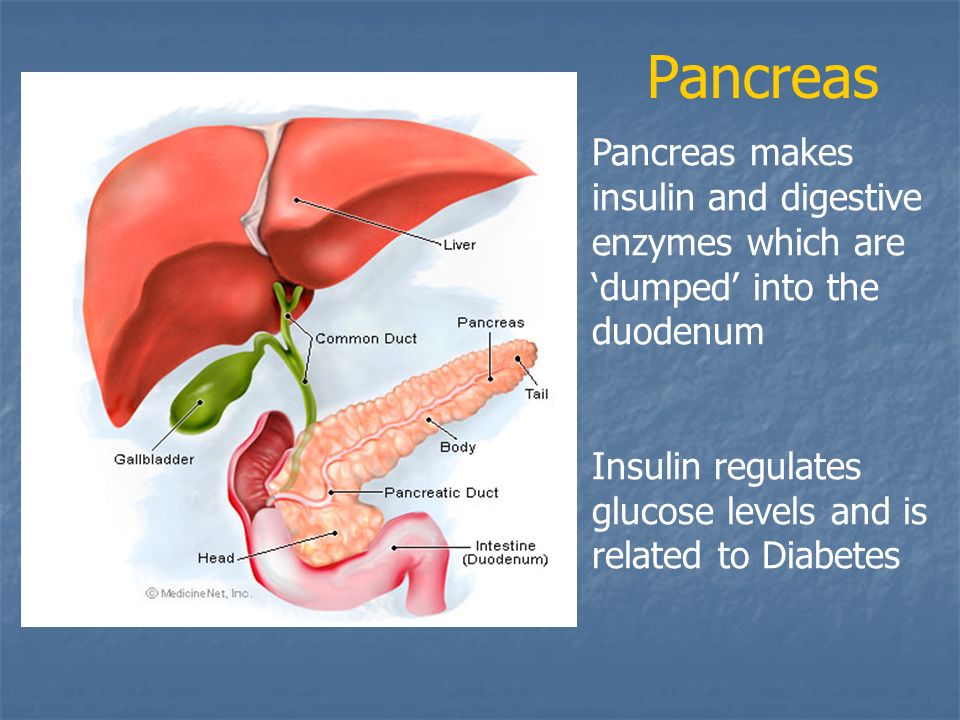 Earn 0.5 CPD credits.
Earn 0.5 CPD credits.
Key points
- Liver blood tests may be normal even in advanced liver disease and are not infrequently abnormal in the absence of liver disease:
- interpreting liver blood tests in isolation may be ineffective in diagnosing or excluding liver disease
- Investigation of non-specific symptoms that may indicate liver disease, such as fatigue, nausea, or anorexia, may lead to identification of a hepatic condition that can be effectively treated
- Using liver blood tests to investigate vague symptoms that do not point to possible liver disease may not be clinically helpful
- Liver enzymes are a poor guide to the development of alcohol-related liver disease but, if elevated, can be useful in promoting behaviour change
- NAFLD is most commonly suggested by fatty change seen on ultrasound scan and investigation must include exclusion of other causes, including alcohol misuse
- Primary care has an important role in the prevention, early diagnosis, initial investigation, and referral of patients with liver disease, and appropriate use of liver blood tests can support this.

NAFLD=non-alcoholic fatty liver disease
Commissioning messages
written by Dr David Jenner, GP, Cullompton, Devon
- Abnormal liver blood test results are commonly encountered in primary care and can be important markers of serious liver disease
- Commissioners should agree local pathways—based on the tables and advice in the BSG guidance—for the investigation and management of liver disease and abnormal liver blood tests
- Local algorithms for the investigation and management of NAFLD should be published on local referral guideline sites
- Practices could incorporate the specified blood tests from the pathway into templates on their clinical software systems
- Awareness in primary care of the FIB-4 and NFS screening tests is low; these tests could be included on the pathway site or on primary care clinical systems, ideally where the required pathology results are autopopulated from the notes (as for QRISK®).

BSG=British Society of Gastroenterology; NAFLD=non-alcoholic fatty liver disease; FIB-4=fibrosis-4; NFS=NAFLD fibrosis score
References
- Williams R, Aspinall R, Bellis M et al. Addressing liver disease in the UK: a blueprint for attaining excellence in health care and reducing premature mortality from lifestyle issues of excess consumption of alcohol, obesity, and viral hepatitis. Lancet 2014; 384 (9958): 1953–1997.
- British Liver Trust website. Facts about liver disease. www.britishlivertrust.org.uk/about-us/media-centre/facts-about-liver-disease/ (accessed 15 January 2018).
- Newsome P, Cramb R, Davison S et al. Guidelines on the management of abnormal liver blood tests. Gut 2018; 67 (1): 6–19.
- Ratib S, Fleming K, Crooks C et al. 1 and 5 year survival estimates for people with cirrhosis of the liver in England, 1998–2009: a large population study.
 J Hepatol 2014; 60 (2): 282–289.
J Hepatol 2014; 60 (2): 282–289. - Donnan P, McLernon D, Dillon J et al. Development of a decision support tool for primary care management of patients with abnormal liver function tests without clinically apparent liver disease: a record-linkage population cohort study and decision analysis (ALFIE). Health Technol Assess 2009; 13 (25): iii–iv, ix–xi, 1–134.
- NICE. Cirrhosis in over 16s: assessment and management. NICE Guideline 50. NICE, 2016. Available at: www.nice.org.uk/ng50
- NICE. Non-alcoholic fatty liver disease (NAFLD): assessment and management. NICE Guideline 49. NICE, 2016. Available at: www.nice.org.uk/ng49
- Children’s Liver Disease Foundation website. Biliary Atresia. Available at: www.childliverdisease.org/information/medical-stuff/information-on-liver-diseases/biliary-atresia (accessed 15 January 2018).
Liver Enzyme – an overview
4.
 3 Liver Enzymes as Alcohol Biomarkers
3 Liver Enzymes as Alcohol Biomarkers
Liver enzymes are one of the first described alcohol biomarkers. Breakdown of hepatocytes results in the release of aminotransferases (also referred to as transaminases) such as ALT and AST into the blood. ALT is a cytosolic enzyme and more specific for liver disease. AST is primarily a mitochondrial enzyme that is also found in heart, muscle, kidney, and brain. ALT has a longer half-life than that of AST. In acute liver injury, AST levels are higher than ALT levels; however, after 24–48 hr, ALT levels may be higher than those of AST. ALT is considered a more specific marker for liver injury. Because alcohol has toxic effects on the liver, liver enzymes are elevated in individuals who consume excessive amounts of alcohol. GGT is a membrane-bound glycoprotein located on the cell surface membrane of most cell types, including hepatocytes. Although GGT is present in many tissues, only liver GGT is detectable in serum. Of all liver enzymes, GGT is the most often used enzyme in clinical settings as an alcohol biomarker [5].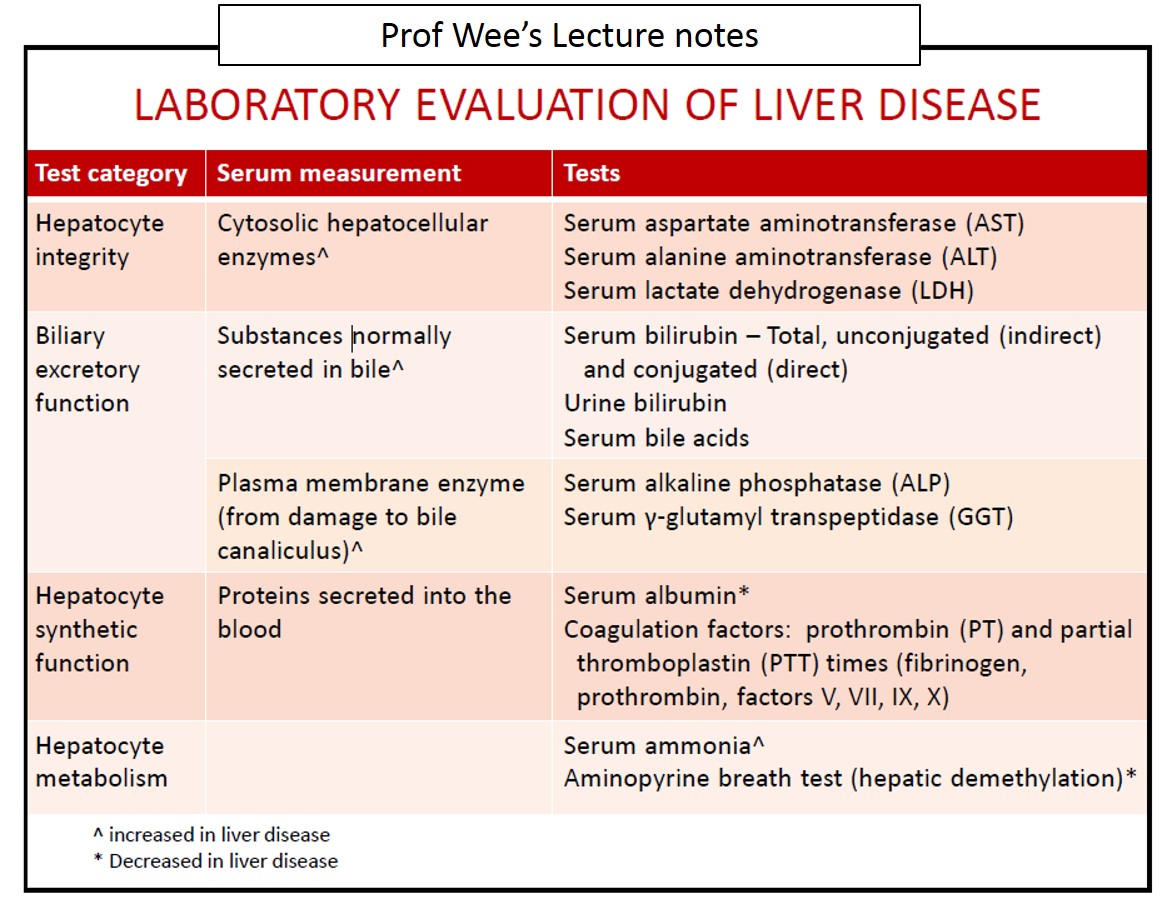
Increased activity of GGT in serum may be due to increased synthesis as a result of enzyme induction by alcohol or release from hepatocytes due to damage caused by excessive alcohol use. However, elevation of GGT in response to alcohol consumption varies widely among individuals, and levels correlate only moderately with the amount of alcohol consumed. In general, sustained alcohol consumption is needed for elevation in GGT levels, but if a person has a history of alcohol abuse, GGT may be elevated if drinking resumes. Consumption of 60 g or more of alcohol for 3–6 weeks is generally necessary to observe significant increases in serum GGT levels. Regular consumption is more likely to increase GGT levels rather than episodic drinking. The sensitivity and specificity of GGT vary widely among different populations and also depending on cutoff level. Arndt et al. reported a sensitivity of 64% and specificity of 72% at a 30 U/L cutoff [6]. However, other authors have reported relatively poor sensitivity of GGT because only 30–50% of patients who are excessive drinkers can be identified by elevated GGT in the general community or family practice setting.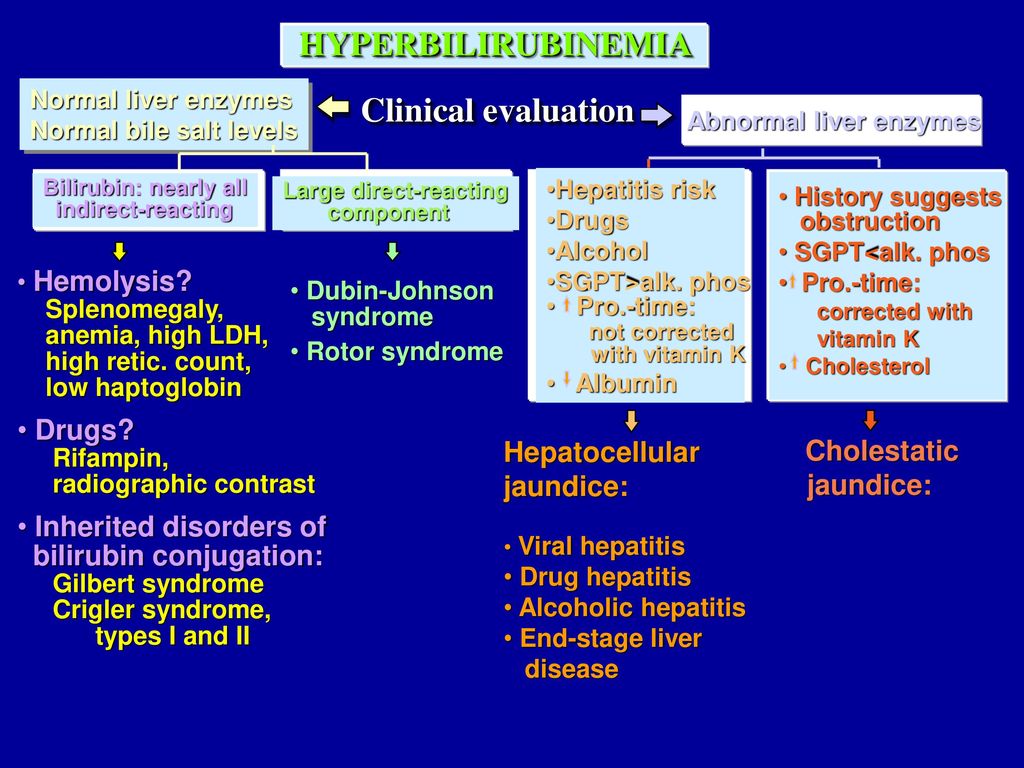 In this setting, specificity may vary from 40 to 90%. However, in residential alcohol rehabilitation programs, sensitivity may be higher (50–90%) with reasonable specificity (65–90%). A wide range of values (35–80 U/L) has been proposed as a cutoff for GGT. Therefore, it is difficult to compare sensitivity and specificity described in different reports because the reference range of GGT may be different [7]. Gender-specific cutoff (33 U/L for females and 56 U/L for males) had also been proposed. Although average GGT levels are significantly higher in current and former drinkers compared to lifetime abstainers, one study observed that in men, daily drinking showed the highest levels of GGT, whereas in women the highest levels of GGT were observed in weekend drinkers. Women who consumed alcohol without food exhibited higher GGT levels compared to women who consumed alcohol with food. However, no such relationship was observed in males [8].
In this setting, specificity may vary from 40 to 90%. However, in residential alcohol rehabilitation programs, sensitivity may be higher (50–90%) with reasonable specificity (65–90%). A wide range of values (35–80 U/L) has been proposed as a cutoff for GGT. Therefore, it is difficult to compare sensitivity and specificity described in different reports because the reference range of GGT may be different [7]. Gender-specific cutoff (33 U/L for females and 56 U/L for males) had also been proposed. Although average GGT levels are significantly higher in current and former drinkers compared to lifetime abstainers, one study observed that in men, daily drinking showed the highest levels of GGT, whereas in women the highest levels of GGT were observed in weekend drinkers. Women who consumed alcohol without food exhibited higher GGT levels compared to women who consumed alcohol with food. However, no such relationship was observed in males [8].
There are many limitations to using GGT as an alcohol biomarker.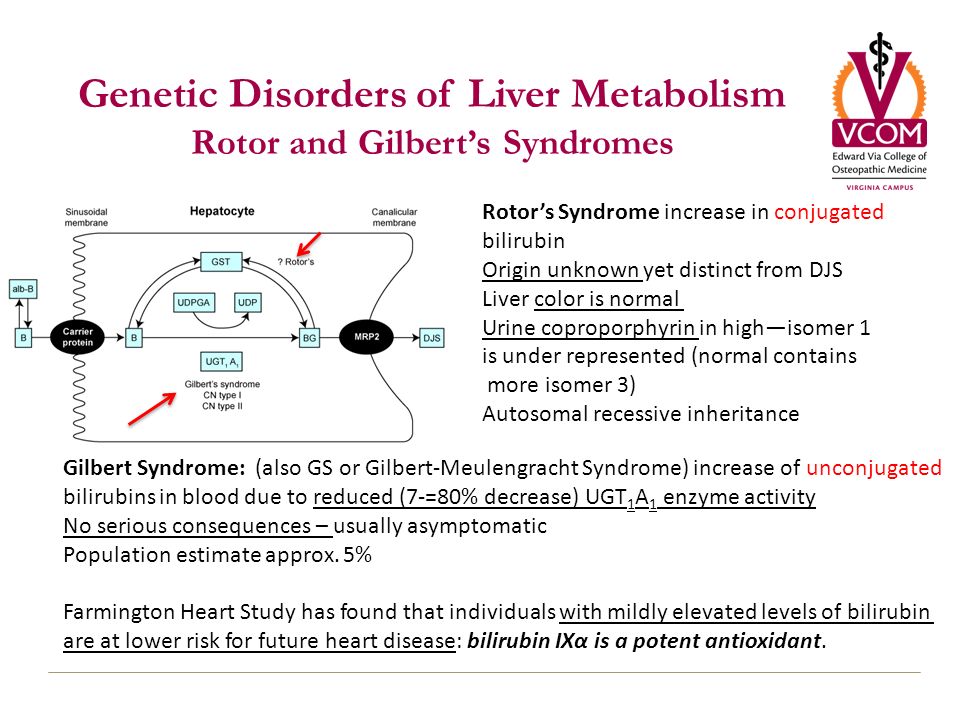 Serum GGT levels are not usually elevated in adolescents and young adults after heavy drinking. GGT levels are likely to be elevated in individuals who are aged at least 30 years or older and who consume alcohol on a regular basis. Obesity and hepatitis C infection may increase serum GGT levels [7]. Cigarette smoking and diabetes may also cause elevated serum GGT levels (see Chapter 5). False-positive results may be encountered in patients receiving therapy with barbiturates, phenytoin, phenazone, dextropropoxyphene, monoamine oxidase inhibitors, tricyclic antidepressants, warfarin, thiazide diuretics, or anabolic steroids. In addition, damage to the liver due to viral infection such as hepatitis or ischemic damage to the liver may also significantly increase serum GGT levels [9]. Danielsson et al. reported that in men, elevation of serum GGT level induced by heavy drinking (>280 g/week) was significantly reduced by coffee consumption exceeding four cups per day. A similar trend was also observed in women [10].
Serum GGT levels are not usually elevated in adolescents and young adults after heavy drinking. GGT levels are likely to be elevated in individuals who are aged at least 30 years or older and who consume alcohol on a regular basis. Obesity and hepatitis C infection may increase serum GGT levels [7]. Cigarette smoking and diabetes may also cause elevated serum GGT levels (see Chapter 5). False-positive results may be encountered in patients receiving therapy with barbiturates, phenytoin, phenazone, dextropropoxyphene, monoamine oxidase inhibitors, tricyclic antidepressants, warfarin, thiazide diuretics, or anabolic steroids. In addition, damage to the liver due to viral infection such as hepatitis or ischemic damage to the liver may also significantly increase serum GGT levels [9]. Danielsson et al. reported that in men, elevation of serum GGT level induced by heavy drinking (>280 g/week) was significantly reduced by coffee consumption exceeding four cups per day. A similar trend was also observed in women [10]. Limitations of GGT as an alcohol biomarker are summarized in Table 4.3.
Limitations of GGT as an alcohol biomarker are summarized in Table 4.3.
Table 4.3. Limitations of GGT, MCV, %CDT, and β-Hexosaminidase as Alcohol Biomarkers
| Alcohol Biomarker | Comments |
|---|---|
| GGT |
|
| MCV |
|
| %CDT |
|
| β-Hexosaminidase |
|
Fatty liver—an additional and treatable feature of the insulin resistance syndrome | QJM: An International Journal of Medicine
Abstract
To test the hypothesis that fatty liver coexists with other metabolic abnormalities of the insulin resistance syndrome, and responds to their amelioration, we prospectively studied 48 consecutive patients with chronically elevated liver enzymes and clinical, ultrasound and histological findings consistent with fatty infiltration of the liver. Most of the patients were overweight or obese (64%) with increased waist circumference which closely relates to visceral fat. Only 10% of the patients had normal glucose tolerance: 44% had diabetes mellitus, 29% impaired glucose tolerance, and 17% were hyperinsulinaemic. The most common dyslipidaemia found was hypertriglyceridaemia and/or low HDL-C (86%). Dietary intervention and follow-up (median 24 months), supplemented by oral hypoglycaemic or lipid-lowering drugs as needed, resulted not only in weight loss (mean 3.7 kg), decreased fasting blood glucose (p<0.005) and improvement in serum lipid profile (p<0.02 for both triglycerides or HDL-C) but also in an improvement of serum liver enzymes in 96%, which became normal in more than half of the patients. Thus, fatty liver was strongly associated with many features of the insulin resistance syndrome, and follow-up revealed a high potential for reversibility and a benign course.
Most of the patients were overweight or obese (64%) with increased waist circumference which closely relates to visceral fat. Only 10% of the patients had normal glucose tolerance: 44% had diabetes mellitus, 29% impaired glucose tolerance, and 17% were hyperinsulinaemic. The most common dyslipidaemia found was hypertriglyceridaemia and/or low HDL-C (86%). Dietary intervention and follow-up (median 24 months), supplemented by oral hypoglycaemic or lipid-lowering drugs as needed, resulted not only in weight loss (mean 3.7 kg), decreased fasting blood glucose (p<0.005) and improvement in serum lipid profile (p<0.02 for both triglycerides or HDL-C) but also in an improvement of serum liver enzymes in 96%, which became normal in more than half of the patients. Thus, fatty liver was strongly associated with many features of the insulin resistance syndrome, and follow-up revealed a high potential for reversibility and a benign course.
Introduction
General practitioners and specialists are frequently confronted with a finding of abnormal liver function tests (LFTs) in patients who are either asymptomatic or have vague abdominal discomfort. In 1980, Ludwig and colleagues described the entity of non-alcoholic steatohepatitis (NASH),1 characterized by histological findings of fatty changes with lobular hepatitis. The prevalence of NASH in patients who undergo liver biopsy is 1.2% to 9%.2 However, many more patients with disturbed LFTs and negative results on work-up for other diseases have histological findings of fatty infiltration without inflammation,3 or can be accurately diagnosed non-invasively by ultrasonography (US) of the liver.4 Thus, the prevalence of `milder’ forms of fatty liver has not been estimated, but is probably much higher.
In 1980, Ludwig and colleagues described the entity of non-alcoholic steatohepatitis (NASH),1 characterized by histological findings of fatty changes with lobular hepatitis. The prevalence of NASH in patients who undergo liver biopsy is 1.2% to 9%.2 However, many more patients with disturbed LFTs and negative results on work-up for other diseases have histological findings of fatty infiltration without inflammation,3 or can be accurately diagnosed non-invasively by ultrasonography (US) of the liver.4 Thus, the prevalence of `milder’ forms of fatty liver has not been estimated, but is probably much higher.
The underlying conditions and natural course of fatty liver are still controversial. Several studies have shown an association between NASH and female gender, obesity, glucose intolerance and dyslipidaemia.5–10 However, there is much variability in the incidence of these factors, ranging from 21% to 75% in the case of diabetes or glucose intolerance, 39% to 100% for obesity, and 21% to 81% for hyperlipidaemia.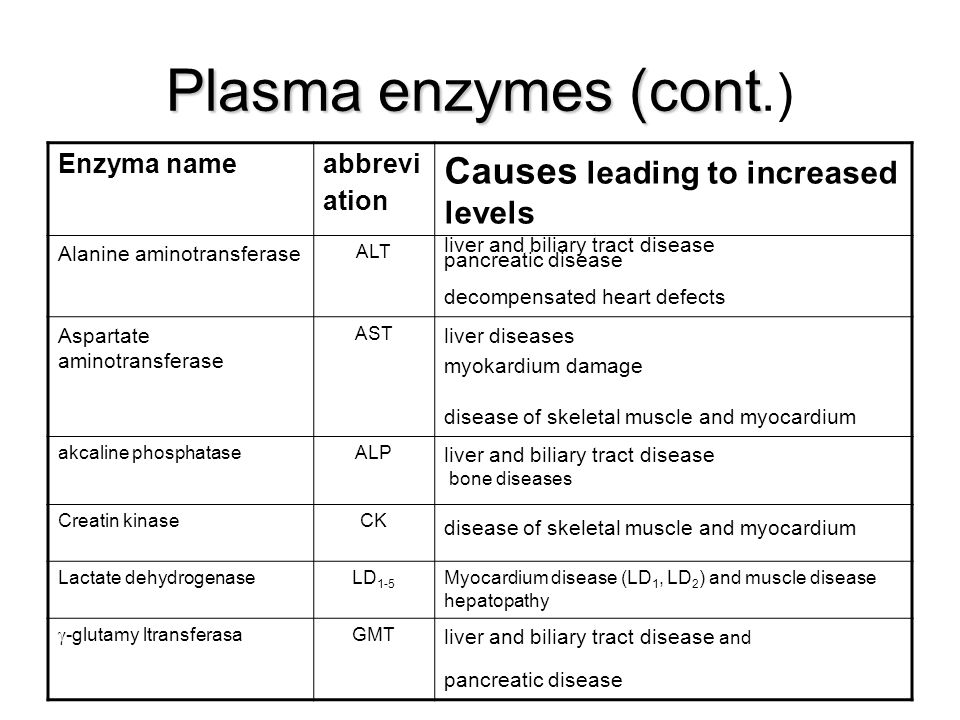 This variability has led some authors to doubt the importance of the association between NASH and obesity or diabetes.9 These inconsistencies may be due to incomplete data, since in most of the previous studies, oral glucose tolerance tests (OGTT) and detailed lipid profiles were not included. Also, some common and confounding conditions such as hepatitis C,5–7 some degree of alcohol consumption,8 or increased hepatic iron stores9 were not properly ruled out in several earlier studies. The natural course of the disease is also unclear, ranging from benign,5,7,10 to a progressive course leading to cirrhosis and hepatic failure.9–11 A favourable effect of weight loss on the course of the disease has been suggested, but the data are again inconsistent.12
This variability has led some authors to doubt the importance of the association between NASH and obesity or diabetes.9 These inconsistencies may be due to incomplete data, since in most of the previous studies, oral glucose tolerance tests (OGTT) and detailed lipid profiles were not included. Also, some common and confounding conditions such as hepatitis C,5–7 some degree of alcohol consumption,8 or increased hepatic iron stores9 were not properly ruled out in several earlier studies. The natural course of the disease is also unclear, ranging from benign,5,7,10 to a progressive course leading to cirrhosis and hepatic failure.9–11 A favourable effect of weight loss on the course of the disease has been suggested, but the data are again inconsistent.12
The aims of the present study were to perform a comprehensive metabolic work-up, including OGTT and a detailed anthropometric and lipid profile, in patients with `primary’ fatty liver, and to evaluate the clinical course, and specifically the effect on the liver, of improvement of the metabolic profile.
Methods
Patients
Patients referred to our Gastroenterology Unit because of chronically (>6 months) elevated liver enzymes, underwent a thorough work-up that included a detailed history of drugs or alcohol consumption, hepatitis B and C serology, determination of caeruloplasmin, copper, α1-antitrypsin, iron and ferritin levels, and autoantibody screening. All consecutive patients who had no data suggesting any specific aetiology (including ethanol consumption <40 g/week), and whose abdominal US examination was consistent with the diagnosis of fatty infiltration of the liver according to accepted criteria,13 were referred to the metabolic clinic for further evaluation.
Metabolic evaluation
All patients underwent anthropometric evaluation and at least three fasting blood glucose tests).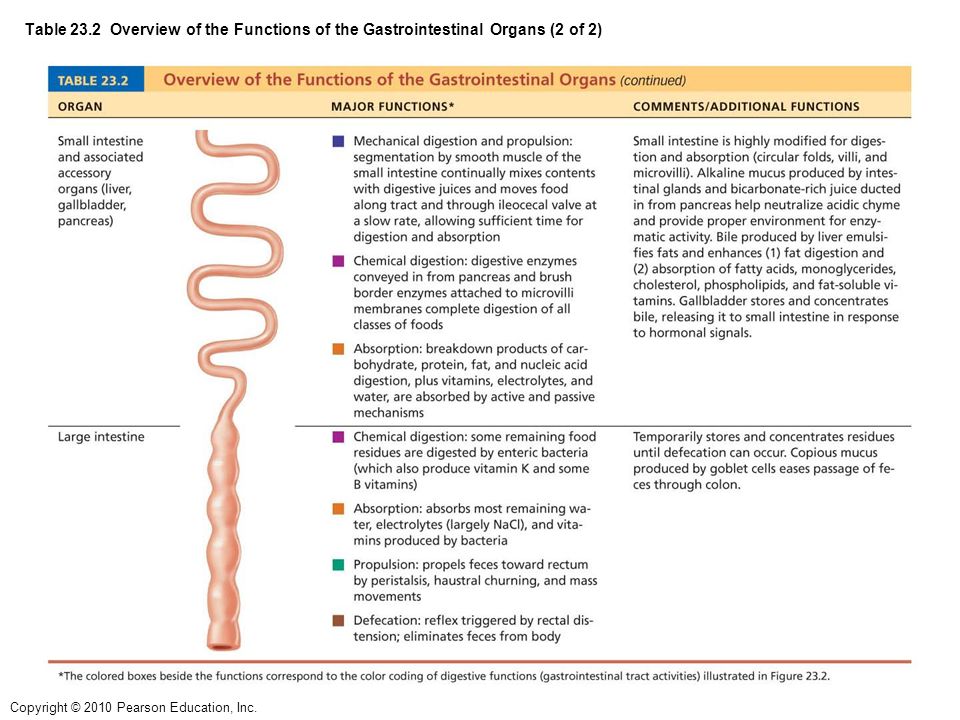 Weight, height and circumferences at the waist and hip were measured as previously described.14 Body mass index [BMI; weight (kg)/height2(m)] and waist : hip ratio [WHR] were calculated from the data. All patients not diagnosed as diabetic, based on fasting hyperglycaemia (plasma glucose≥7.0 mmol/l on more than one occasion),15 underwent OGTT. Following a 12-h fast, a standard 75-g OGTT was administered with determination of glucose and insulin at 0, 60 and 120 min. Insulin levels were determined using a monoclonal antibody (Sanofi Diagnostica Pasteur). The findings of the OGTT were interpreted as normal, impaired glucose tolerance (IGT) or diabetes (NIDDM). (IGT, plasma glucose ≥7.8 mmol/l at 2 h but <11.1 mmol/l; and diabetes ≥11.1 mmol/l).15 Patients who had a normal glucose response but an elevated fasting insulin level, exceeding the 90th percentile of its distribution among patients with normal glucose tolerance,16 were diagnosed as hyperinsulinaemic (HI).
Weight, height and circumferences at the waist and hip were measured as previously described.14 Body mass index [BMI; weight (kg)/height2(m)] and waist : hip ratio [WHR] were calculated from the data. All patients not diagnosed as diabetic, based on fasting hyperglycaemia (plasma glucose≥7.0 mmol/l on more than one occasion),15 underwent OGTT. Following a 12-h fast, a standard 75-g OGTT was administered with determination of glucose and insulin at 0, 60 and 120 min. Insulin levels were determined using a monoclonal antibody (Sanofi Diagnostica Pasteur). The findings of the OGTT were interpreted as normal, impaired glucose tolerance (IGT) or diabetes (NIDDM). (IGT, plasma glucose ≥7.8 mmol/l at 2 h but <11.1 mmol/l; and diabetes ≥11.1 mmol/l).15 Patients who had a normal glucose response but an elevated fasting insulin level, exceeding the 90th percentile of its distribution among patients with normal glucose tolerance,16 were diagnosed as hyperinsulinaemic (HI). Lipid determinations were performed twice on fasting blood samples in a Boehringer-Hitachi analyzer using Boehringer-Mannheim kits. High-density lipoprotein cholesterol (HDL-C) was determined after precipitation of low-density lipoprotein (LDL) and very-low-density lipoprotein (VLDL) with phosphotungstate. Cholesterol concentration was determined in the supernatant. Lipoprotein abnormalities were defined according to the Lipid Research Clinic data for age and gender, i.e. above the 90th percentile for total cholesterol and triglyceride levels and below the 10th percentile for HDL-C levels.17
Lipid determinations were performed twice on fasting blood samples in a Boehringer-Hitachi analyzer using Boehringer-Mannheim kits. High-density lipoprotein cholesterol (HDL-C) was determined after precipitation of low-density lipoprotein (LDL) and very-low-density lipoprotein (VLDL) with phosphotungstate. Cholesterol concentration was determined in the supernatant. Lipoprotein abnormalities were defined according to the Lipid Research Clinic data for age and gender, i.e. above the 90th percentile for total cholesterol and triglyceride levels and below the 10th percentile for HDL-C levels.17
Pathology
Liver biopsies were randomly performed and reviewed by an experienced pathologist who was blinded to the clinical details. Steatosis, fibrosis and inflammation were graded according to standard histological criteria.18
Intervention and follow-up
All patients were referred to a qualified dietician, and were followed by visits every 3–4 weeks. Subjects who had elevated triglyceride levels (above 2.3 mmol/l) and/or low HDL-C (below 0.9 mmol/l), were instructed to follow a `high-fat’ diet which provided 20% of total energy as monounsaturated fat, <10% as saturated fat, 10% as polyunsaturated fat, and 45% as carbohydrate. The other patients were counselled to use the American Heart Association diet which limits fat intake to <30%, saturated fat <10%, polyunsaturated fat <10% and monounsaturated 10–15% of total calories, with 50–60% as carbohydrates. Patients who failed to respond to at least 6 months of dietary therapy alone, received lipid-lowering drugs according to the National cholesterol Education Program guidelines.19 Patient compliance was monitored by independently administered questionnaires and their weight, LFT and metabolic profiles were tested.
Subjects who had elevated triglyceride levels (above 2.3 mmol/l) and/or low HDL-C (below 0.9 mmol/l), were instructed to follow a `high-fat’ diet which provided 20% of total energy as monounsaturated fat, <10% as saturated fat, 10% as polyunsaturated fat, and 45% as carbohydrate. The other patients were counselled to use the American Heart Association diet which limits fat intake to <30%, saturated fat <10%, polyunsaturated fat <10% and monounsaturated 10–15% of total calories, with 50–60% as carbohydrates. Patients who failed to respond to at least 6 months of dietary therapy alone, received lipid-lowering drugs according to the National cholesterol Education Program guidelines.19 Patient compliance was monitored by independently administered questionnaires and their weight, LFT and metabolic profiles were tested.
Data analysis
Data were expressed as means±SD. For comparison of the metabolic data before and after treatment, Student’s t-test was used, or where variables were not normally distributed, the Mann-Whitney test. Multiple regression analysis was performed (SPSS software version 8) to determine which of the changes in metabolic and anthropometric parameters were associated with the improvement in ALT values. Independent variables were: weight, triglyceride, glucose, cholesterol and HDL cholesterol levels.
Multiple regression analysis was performed (SPSS software version 8) to determine which of the changes in metabolic and anthropometric parameters were associated with the improvement in ALT values. Independent variables were: weight, triglyceride, glucose, cholesterol and HDL cholesterol levels.
Results
Forty-eight consecutive patients who fulfilled the criteria for `primary’ fatty liver, were evaluated. There were 27 male and 21 female patients whose mean age was 51.7±13.3 years. The mean BMI was 31.5±11.5 kg/m2 and 64% of the patients were obese (BMI>27.8 in males and >27.3 kg/m2 in females).20 Abdominal obesity (defined in males as a waist/hip ratio >0.95 and in females as >0.8),14 was found in 63% of the patients. Waist circumference was 101±6.7 and 105±7.7 cm for male and female patients, respectively, and waist/hip ratio was 1.0±0.1 for both groups. Hypertension (≥140/90 mmHg) was present in 58%, but drug therapy, where used, did not include medications known to be associated with fatty liver or dyslipidaemia.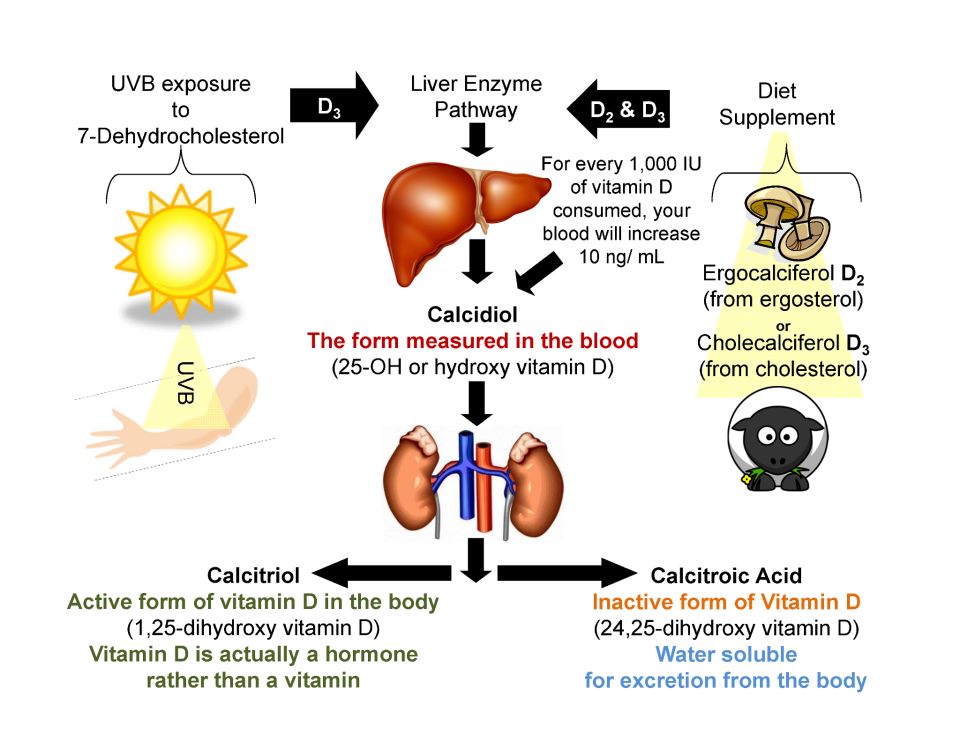
The most consistent abnormality of serum liver enzymes (Table 1), detected in almost all patients, was an elevation of about two-fold in ALT, whereas increased AST levels were noted in 77% of the patients, but to a lesser degree. Elevated GGT levels were found in 52% of the patients, sometimes accompanied by an increased serum alkaline phosphatase in 15%. None of the patients had bilirubinaemia, reduced serum albumin levels or prolongation of the prothrombin time. All patients had findings consistent with fatty infiltration by ultrasonography which is a highly accurate tool for the diagnosis of fatty liver.4,21 In 16 of the 48 patients the diagnosis was confirmed by a liver biopsy (Table 3). These patients were randomly selected for biopsy and their clinical and laboratory profiles were not significantly different from the remaining cohort (Table 3). The biopsies revealed marked steatosis in all specimens (16/16). Eight patients had inflammatory changes (mostly lobular) and six of those had associated hepatic fibrosis which was grade 3 in two patients only.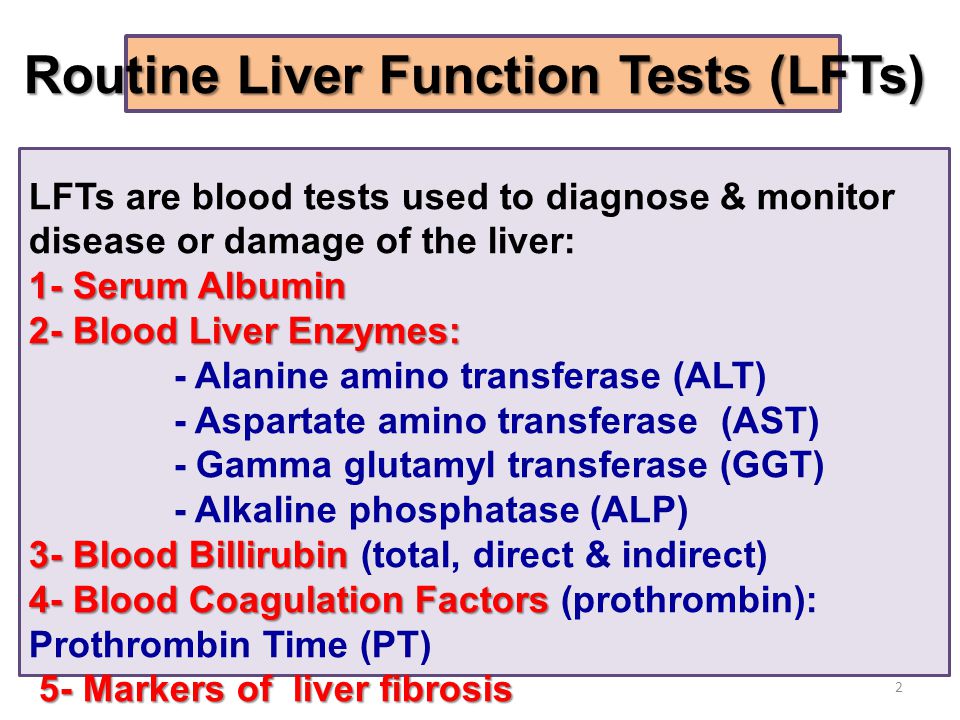 No biopsy showed liver cirrhosis.
No biopsy showed liver cirrhosis.
A detailed fasting lipid profile was obtained for all patients (Table 2). Some kind of dyslipidaemia was detected in 90% of the patients. Elevation of triglycerides with or without low HDL-C or elevated total cholesterol levels was found in 73% of the patients. Low HDL-C levels, often with elevated triglyceride or total cholesterol levels, were detected in 68% of the patients. Altogether, hypertriglyceridaemia and/or low HDL-C was found in 41/48 (86%) of cases. The relative distribution of the lipid profile abnormalities is presented in Figure 1. Fasting plasma glucose determinations or OGTT revealed diabetes in 21 cases (44%). In most of them (12/21, 57%), diagnosis of diabetes was not made prior to their presentation for the current evaluation. Of the remaining 27 patients, IGT was found in 14 patients, and a further eight patients who showed an otherwise normal glucose response to the OGTT, manifested clearly elevated fasting insulin levels (Figure 2). Altogether, 90% of the patients had some abnormality in their glucose-insulin metabolism. Only five had a normal response to an OGTT with normal fasting insulin levels (below the 90th percentile). The relative distribution of these findings is presented in Figure 2. Patients with diabetes tended to be more overweight than patients with normal glucose tolerance and normal insulin levels (BMI 106±9 vs. 95±12, p=0.05), but the liver enzymes were similar regardless of the glucose tolerance status.
Altogether, 90% of the patients had some abnormality in their glucose-insulin metabolism. Only five had a normal response to an OGTT with normal fasting insulin levels (below the 90th percentile). The relative distribution of these findings is presented in Figure 2. Patients with diabetes tended to be more overweight than patients with normal glucose tolerance and normal insulin levels (BMI 106±9 vs. 95±12, p=0.05), but the liver enzymes were similar regardless of the glucose tolerance status.
All patients were followed regularly, and the median follow-up period was 24 months (mean±SD 32.5±31.6). Thirty-eight out of 48 patients (79%) achieved weight loss (mean 3.7 kg, range 1–10 kg). Of the diabetic patients, six were treated with one or two oral hypoglycaemic agents: (glyburide, 5 patients; metformin, 4 patients), one patient was treated with insulin, and 14 received dietary treatment only. Eight patients received lipid-lowering drugs; of these five received statins and three fibric acid derivatives.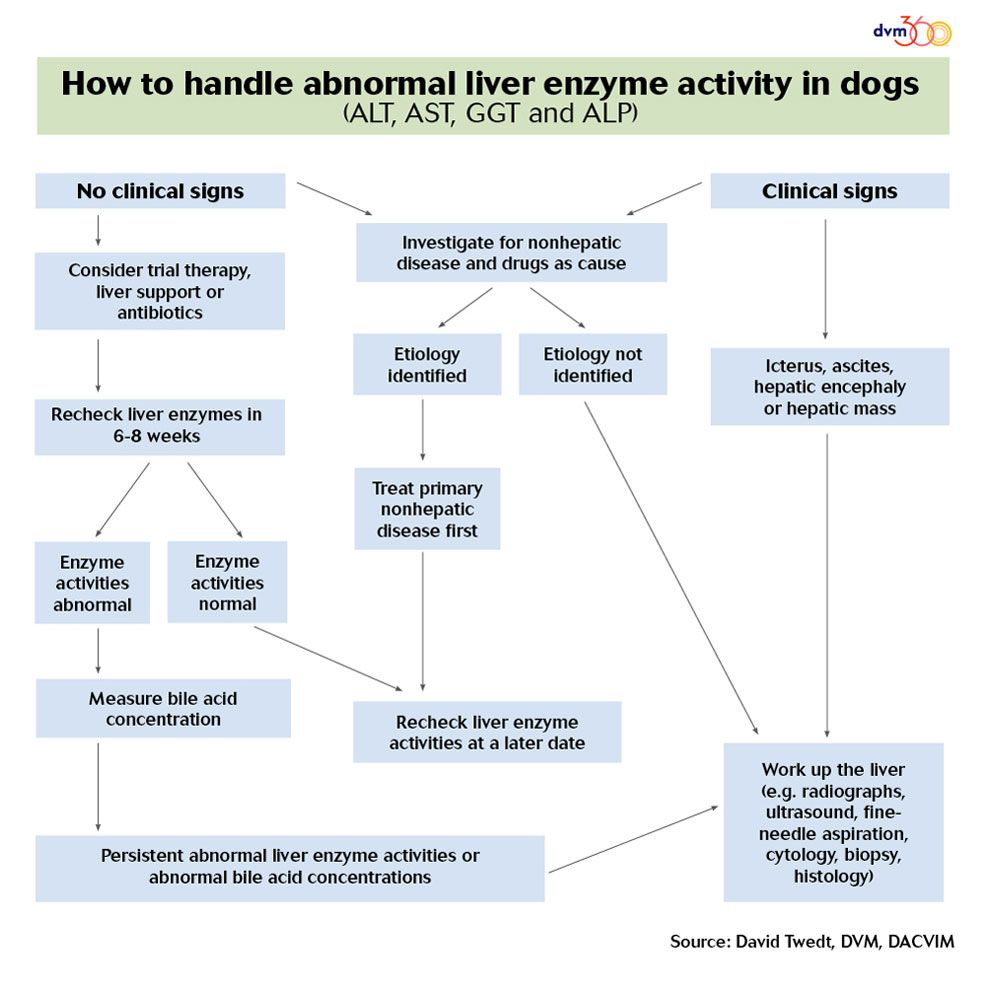 Mean fasting blood glucose was reduced from 7.2±2.4 to 6.2±1.6 mmol/l (p<0.005). Mean triglyceride levels were reduced from 4.0±3.6 to 2.4±0.9 mmol/l (p<0.002). Total cholesterol was reduced from 6.6±1.9 to 5.7±1.1 mmol/l (p<0.005), and HDL-C levels increased from 0.96±0.2 to 1.1±0.2 mmol/l (p<0.002).
Mean fasting blood glucose was reduced from 7.2±2.4 to 6.2±1.6 mmol/l (p<0.005). Mean triglyceride levels were reduced from 4.0±3.6 to 2.4±0.9 mmol/l (p<0.002). Total cholesterol was reduced from 6.6±1.9 to 5.7±1.1 mmol/l (p<0.005), and HDL-C levels increased from 0.96±0.2 to 1.1±0.2 mmol/l (p<0.002).
During the follow-up period, liver enzyme levels were reduced to some degree in all but two patients (46/48, 96%). In 25 patients (52%) they were reduced back to the normal range. The two patients who did not improve their LFTs were a 48-year-old obese male with diabetes (diagnosed by fasting hyperglycaemia) and dyslipidaemia with liver biopsy showing fatty infiltration (+2), and a 55-year-old obese woman with IGT and dyslipidaemia who refused a liver biopsy. Both patients did not lose weight and did not receive hypoglycaemic or lipid-lowering medications. None of the patients developed symptoms or laboratory features suggestive of liver function deterioration.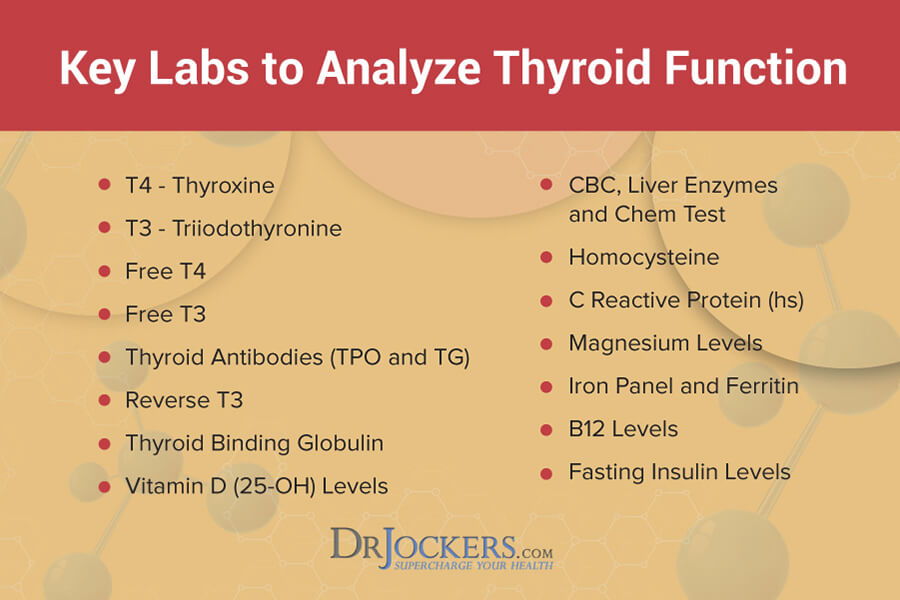 The improvement in liver enzymes was not associated with initial anthropometric or metabolic findings. The six patients who had fibrosis in their liver biopsies had a similar response as the patients who had only steatosis. Regression analysis revealed that the independent variables that were associated with improvement of ALT were the changes in HDL cholesterol levels (p<0.01) and weight (p=0.05).
The improvement in liver enzymes was not associated with initial anthropometric or metabolic findings. The six patients who had fibrosis in their liver biopsies had a similar response as the patients who had only steatosis. Regression analysis revealed that the independent variables that were associated with improvement of ALT were the changes in HDL cholesterol levels (p<0.01) and weight (p=0.05).
Discussion
Our patients with `primary’ fatty liver had clinical features compatible with the insulin resistance syndrome.22,23 These include glucose intolerance or hyperinsulinaemia (90%), a characteristic dyslipidaemia (elevated triglycerides and/or low HDL-C (86%), hypertension (58%), and obesity (64%). The pattern of fat accumulation in our patients with fatty liver was characteristic of the insulin resistance syndrome: their waist circumference was significantly increased and values >95 cm for men and >80 cm for women relate very closely to visceral fat,14,24 hyperinsulinaemia and insulin resistance.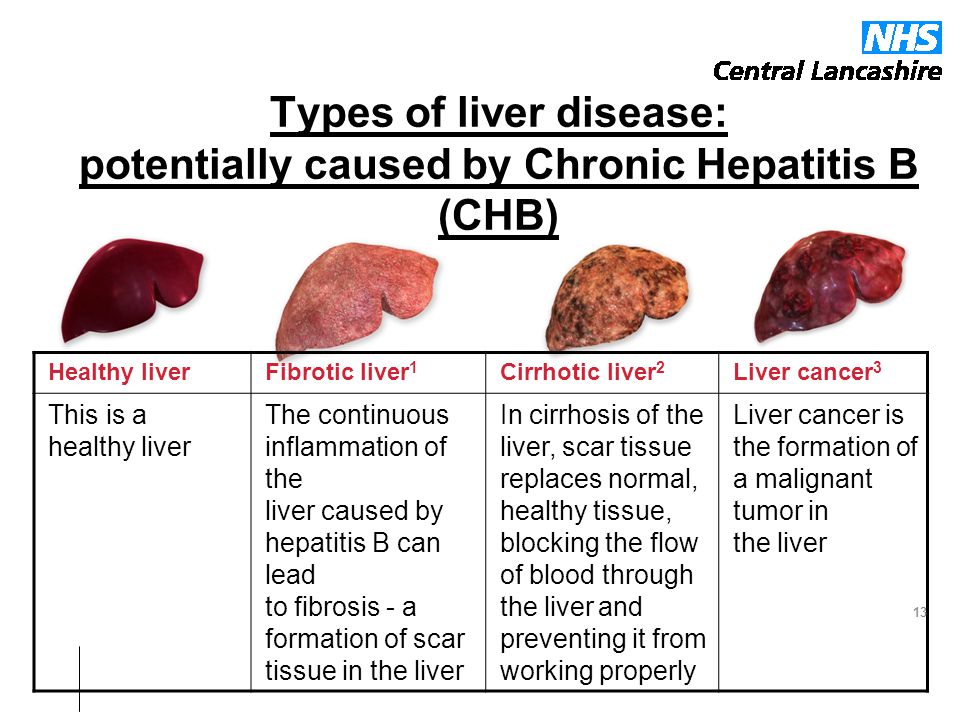 25,26 The uniformity of the metabolic profile in this study can be explained by the careful metabolic evaluation. For example, in 12/21 diabetic patients (57%), diabetes had not been diagnosed prior to the metabolic evaluation in this study. It was recently suggested that patients with NASH who are euglycaemic should be followed closely for the development of diabetes, but this was based on anecdotal experience,27 never before on a prospective study of consecutive patients presenting with NASH. Low HDL-C and/or hypertriglyceridaemia (mostly modest), which was found in the majority of our patients, is also a typical finding in patients with diabetes or insulin resistance.28 Previous studies of patients with NASH or fatty liver have not included detailed lipid profiles,5–10 nor was OGTT performed, and therefore the true prevalence of this dyslipidaemia may have been underestimated.
25,26 The uniformity of the metabolic profile in this study can be explained by the careful metabolic evaluation. For example, in 12/21 diabetic patients (57%), diabetes had not been diagnosed prior to the metabolic evaluation in this study. It was recently suggested that patients with NASH who are euglycaemic should be followed closely for the development of diabetes, but this was based on anecdotal experience,27 never before on a prospective study of consecutive patients presenting with NASH. Low HDL-C and/or hypertriglyceridaemia (mostly modest), which was found in the majority of our patients, is also a typical finding in patients with diabetes or insulin resistance.28 Previous studies of patients with NASH or fatty liver have not included detailed lipid profiles,5–10 nor was OGTT performed, and therefore the true prevalence of this dyslipidaemia may have been underestimated.
The pathogenesis of hepatic steatosis remains unclear.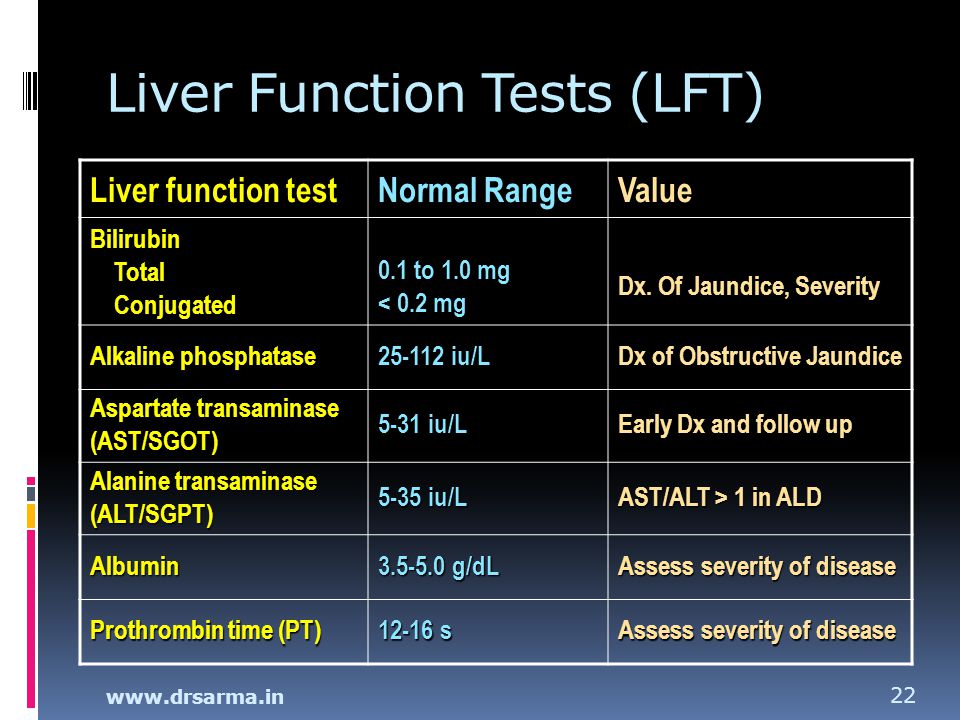 Several of the recognized associated conditions, such as intestinal bypass surgery, steroid treatment, and total parenteral nutrition, can cause a metabolic shift favouring lipogenesis rather than lipolysis, and lead to steatosis.2,12 Increased levels of free fatty acids are known to occur in patients with NIDDM or insulin resistance, because of the reduced ability of insulin to suppress lipolysis.29,30 Resistance to the suppressive effect of insulin on the production of VLDL in the liver is another postulated defect in insulin-resistant states.30 Insulin resistance is commonly associated with obesity, but can exist independently, as encountered in one of our cases, a lean female with Turner’s syndrome, a syndrome known to be associated with insulin resistance as an early defect.31 This patient had marked steatosis, and demonstrates that obesity is not a prerequisite. More substantial support for the role of insulin resistance in the pathogenesis of fatty liver comes from two previous studies that demonstrate a clear association between fatty liver and insulin levels in both adults32 and children33 with fatty liver.
Several of the recognized associated conditions, such as intestinal bypass surgery, steroid treatment, and total parenteral nutrition, can cause a metabolic shift favouring lipogenesis rather than lipolysis, and lead to steatosis.2,12 Increased levels of free fatty acids are known to occur in patients with NIDDM or insulin resistance, because of the reduced ability of insulin to suppress lipolysis.29,30 Resistance to the suppressive effect of insulin on the production of VLDL in the liver is another postulated defect in insulin-resistant states.30 Insulin resistance is commonly associated with obesity, but can exist independently, as encountered in one of our cases, a lean female with Turner’s syndrome, a syndrome known to be associated with insulin resistance as an early defect.31 This patient had marked steatosis, and demonstrates that obesity is not a prerequisite. More substantial support for the role of insulin resistance in the pathogenesis of fatty liver comes from two previous studies that demonstrate a clear association between fatty liver and insulin levels in both adults32 and children33 with fatty liver. ALT levels correlated significantly with fasting insulin levels, suggesting that hyperinsulinaemia is an important contributor to the development of fatty liver, more crucial to the pathogenesis than anthropomorphic data, blood glucose or serum lipids.33
ALT levels correlated significantly with fasting insulin levels, suggesting that hyperinsulinaemia is an important contributor to the development of fatty liver, more crucial to the pathogenesis than anthropomorphic data, blood glucose or serum lipids.33
Recently, a `two-hit’ hypothesis for the development of steatohepatitis has been proposed. The first hit produces steatosis, the second, any source of oxidative stress that increases lipid peroxidation and subsequently leads to increased liver damage.34 Factors which can produce a `second hit’ such as iron overload, alcohol, and drugs were conspicuously absent in our study group. For example, only two of our patients had (minimally) elevated iron levels, in contrast to 58% in Bacon et al..9 It was easier to exclude the effects of alcohol in our patients, since the prevalence of alcoholism and even social drinking in Israel remains very low. The careful exclusion of these factors may explain the remarkably benign clinical course.
None of the 48 patients developed signs suggestive of advanced liver disease, and in all but two patients, liver enzyme levels were significantly reduced during follow-up, becoming normal in half of the patients. These results are in accordance with several previous studies that showed a similarly benign clinical course,5,7,10 and in contrast with others who noted a progressive course leading to cirrhosis.9,11 These inconsistencies may also be due to variations in the extent and severity of the initial liver pathology. In one series, one third of the patients had significant fibrosis or cirrhosis,9 in contrast to another study where biopsies revealed only steatosis in almost all patients.10 In our group, underlying conditions were carefully excluded and the patients (according to the representative liver histology obtained in a third) had only steatosis, some inflammation (in half) and low-grade fibrosis.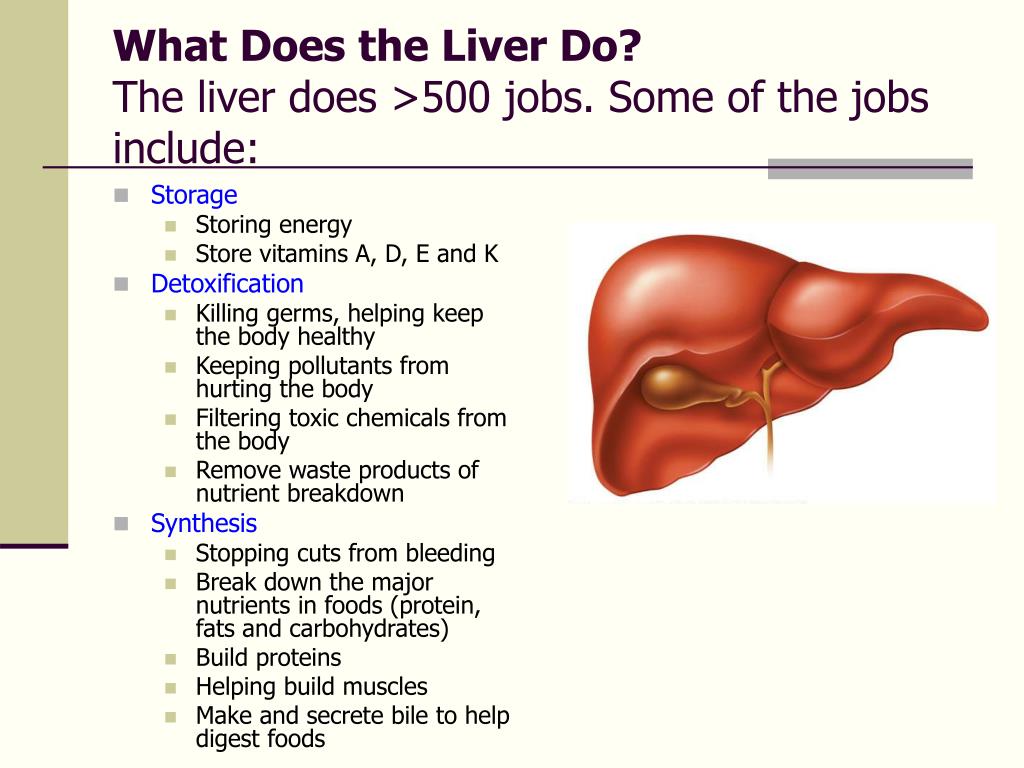 Previous studies in which the natural course of the disease is described were not aimed at examining the effect of therapeutic interventions.5–10 However, there are data suggesting that diet-induced weight reduction leads to biochemical and histological improvement.35,36 As the present study was designed to evaluate the effect on the liver of improvement of the metabolic profile, each patient was referred to a dietician for individualized counselling and follow-up. The results showed that dietary intervention was highly effective: an average moderate weight reduction of 3.7 kg was associated with a marked improvement of the metabolic parameters and a decrease, often normalization, of liver enzymes. This is in contrast to previous work showing that only a weight reduction of at least 10% could correct abnormal hepatic test results.35 Furthermore, our observations on the five patients treated with statins whose LFTs likewise improved, imply that the use of statins in patients with dyslipidaemia and disturbed LFTs due to fatty liver is appropriate.
Previous studies in which the natural course of the disease is described were not aimed at examining the effect of therapeutic interventions.5–10 However, there are data suggesting that diet-induced weight reduction leads to biochemical and histological improvement.35,36 As the present study was designed to evaluate the effect on the liver of improvement of the metabolic profile, each patient was referred to a dietician for individualized counselling and follow-up. The results showed that dietary intervention was highly effective: an average moderate weight reduction of 3.7 kg was associated with a marked improvement of the metabolic parameters and a decrease, often normalization, of liver enzymes. This is in contrast to previous work showing that only a weight reduction of at least 10% could correct abnormal hepatic test results.35 Furthermore, our observations on the five patients treated with statins whose LFTs likewise improved, imply that the use of statins in patients with dyslipidaemia and disturbed LFTs due to fatty liver is appropriate.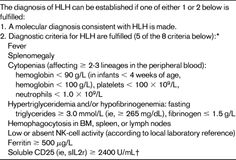
In conclusion, most of our 48 consecutive patients with `primary’ fatty liver had a characteristic clinical picture compatible with the insulin resistance syndrome including obesity with visceral fat deposition, hypertension, glucose intolerance and typical dyslipidaemia. Moreover, simple measures aimed at improving metabolic profile, such as weight reduction and the use of anti-diabetic or lipid-lowering drugs, were associated with marked reduction or normalization of liver enzyme levels in most patients, confirming the association, and suggesting that the natural course of this entity is benign and treatable.
Table 1
Serum liver enzymes of patients with `primary’ fatty liver
| Enzyme
. | Mean±SD
. | Range
. | Normal range
. | Patients with abnormality (%)
. |
|---|---|---|---|---|
The data presented are the maximal values observed at presentation, in U/l. AST, serum aspartate-aminotransferase; ALT, serum alanine-aminotransferase; GGT, serum gamma-glutamyl transpeptidase; SAP, serum alkaline phosphatase. All patients had normal prothrombin time and normal serum albumin and bilirubin levels. AST, serum aspartate-aminotransferase; ALT, serum alanine-aminotransferase; GGT, serum gamma-glutamyl transpeptidase; SAP, serum alkaline phosphatase. All patients had normal prothrombin time and normal serum albumin and bilirubin levels. | ||||
| AST | 56.6±24.7 | 15–166 | 0–37 | 77 |
| ALT | 90.7±43.9 | 36–281 | 0–41 | 92 |
| SAP | 108±73.5 | 27–444 | 53–128 | 15 |
| GGT | 98±97 | 16–486 | 0–48 | 52 |
| Enzyme
. | Mean±SD
. | Range
. | Normal range
. | Patients with abnormality (%)
. |
|---|---|---|---|---|
The data presented are the maximal values observed at presentation, in U/l. AST, serum aspartate-aminotransferase; ALT, serum alanine-aminotransferase; GGT, serum gamma-glutamyl transpeptidase; SAP, serum alkaline phosphatase. All patients had normal prothrombin time and normal serum albumin and bilirubin levels. All patients had normal prothrombin time and normal serum albumin and bilirubin levels. | ||||
| AST | 56.6±24.7 | 15–166 | 0–37 | 77 |
| ALT | 90.7±43.9 | 36–281 | 0–41 | 92 |
| SAP | 108±73.5 | 27–444 | 53–128 | 15 |
| GGT | 98±97 | 16–486 | 0–48 | 52 |
Table 1
Serum liver enzymes of patients with `primary’ fatty liver
| Enzyme
. | Mean±SD
. | Range
. | Normal range
. | Patients with abnormality (%)
. |
|---|---|---|---|---|
The data presented are the maximal values observed at presentation, in U/l. AST, serum aspartate-aminotransferase; ALT, serum alanine-aminotransferase; GGT, serum gamma-glutamyl transpeptidase; SAP, serum alkaline phosphatase. All patients had normal prothrombin time and normal serum albumin and bilirubin levels. All patients had normal prothrombin time and normal serum albumin and bilirubin levels. | ||||
| AST | 56.6±24.7 | 15–166 | 0–37 | 77 |
| ALT | 90.7±43.9 | 36–281 | 0–41 | 92 |
| SAP | 108±73.5 | 27–444 | 53–128 | 15 |
| GGT | 98±97 | 16–486 | 0–48 | 52 |
| Enzyme
. | Mean±SD
. | Range
. | Normal range
. | Patients with abnormality (%)
. |
|---|---|---|---|---|
The data presented are the maximal values observed at presentation, in U/l. AST, serum aspartate-aminotransferase; ALT, serum alanine-aminotransferase; GGT, serum gamma-glutamyl transpeptidase; SAP, serum alkaline phosphatase. All patients had normal prothrombin time and normal serum albumin and bilirubin levels. | ||||
| AST | 56.6±24.7 | 15–166 | 0–37 | 77 |
| ALT | 90.7±43.9 | 36–281 | 0–41 | 92 |
| SAP | 108±73.5 | 27–444 | 53–128 | 15 |
| GGT | 98±97 | 16–486 | 0–48 | 52 |
Table 2
Metabolic data for 48 patients with fatty liver
|
. | Mean±SD
. | Range
. |
|---|---|---|
| HDL, high-density lipoprotein; LDL, low-density lipoprotein; OGTT, oral glucose tolerance test. | ||
| * For 27 non-diabetic patients | ||
| Total cholesterol (mmol/l) | 6.6±1.9 | 4.0–15.5 |
| Triglyceride (mmol/l) | 4.0±3.6 | 1–22.8 |
| HDL cholesterol (mmol/l) | 0.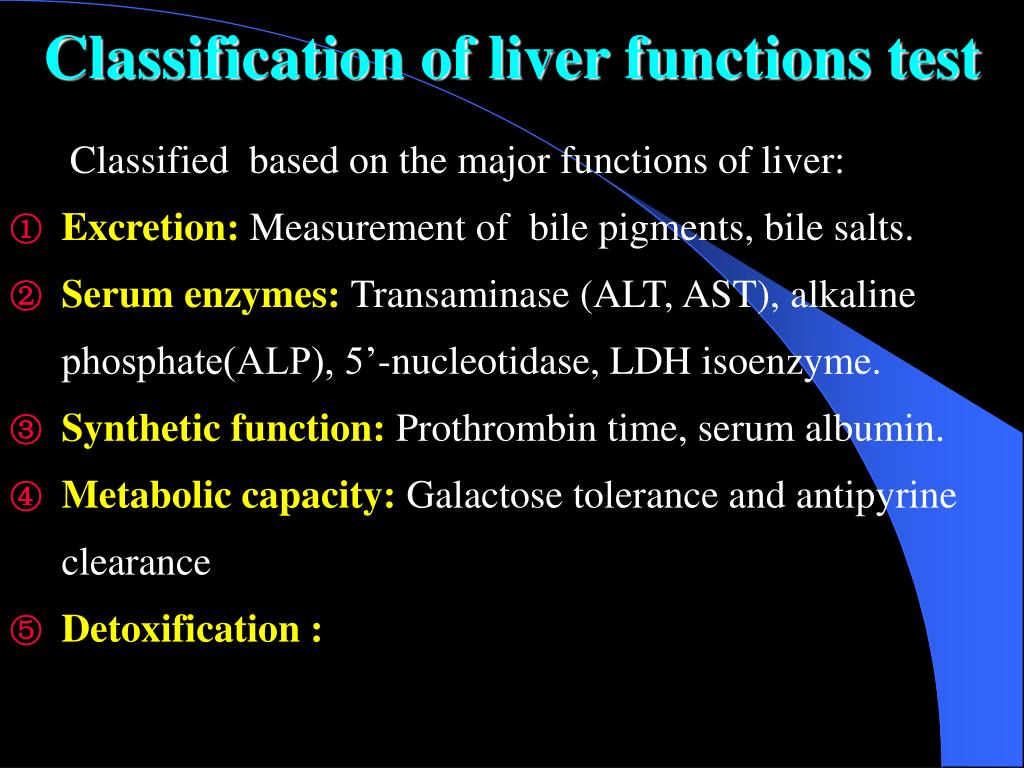 96±0.2 96±0.2 | 0.6–1.4 |
| OGTT* results: | ||
| Fasting glucose (mmol/l) | 5.7±0.8 | 4.4–6.4 |
| 2-hours glucose (mmol/l) | 7.6±2.0 | 3.9–10.9 |
| Fasting insulin (pmol/l) | 105±43 | 37–294 |
| 2 hours insulin (pmol/l) | 627±407 | 168–1776 |
|
. | Mean±SD
. | Range
. |
|---|---|---|
| HDL, high-density lipoprotein; LDL, low-density lipoprotein; OGTT, oral glucose tolerance test. | ||
| * For 27 non-diabetic patients | ||
| Total cholesterol (mmol/l) | 6.6±1.9 | 4.0–15.5 |
| Triglyceride (mmol/l) | 4.0±3.6 | 1–22.8 |
| HDL cholesterol (mmol/l) | 0.96±0.2 | 0.6–1.4 |
| OGTT* results: | ||
| Fasting glucose (mmol/l) | 5.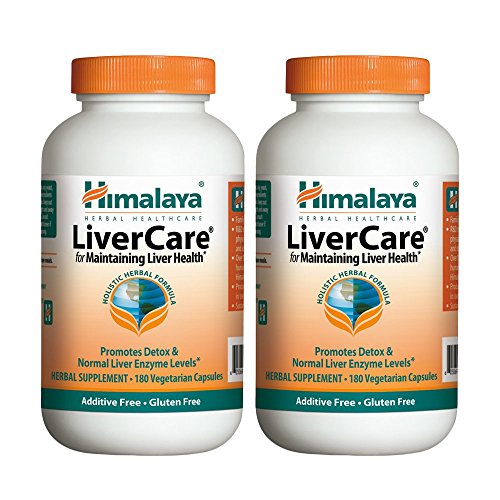 7±0.8 7±0.8 | 4.4–6.4 |
| 2-hours glucose (mmol/l) | 7.6±2.0 | 3.9–10.9 |
| Fasting insulin (pmol/l) | 105±43 | 37–294 |
| 2 hours insulin (pmol/l) | 627±407 | 168–1776 |
Table 2
Metabolic data for 48 patients with fatty liver
|
. | Mean±SD
. | Range
. |
|---|---|---|
| HDL, high-density lipoprotein; LDL, low-density lipoprotein; OGTT, oral glucose tolerance test. | ||
| * For 27 non-diabetic patients | ||
| Total cholesterol (mmol/l) | 6.6±1.9 | 4.0–15.5 |
| Triglyceride (mmol/l) | 4.0±3.6 | 1–22.8 |
| HDL cholesterol (mmol/l) | 0.96±0.2 | 0.6–1.4 |
| OGTT* results: | ||
| Fasting glucose (mmol/l) | 5.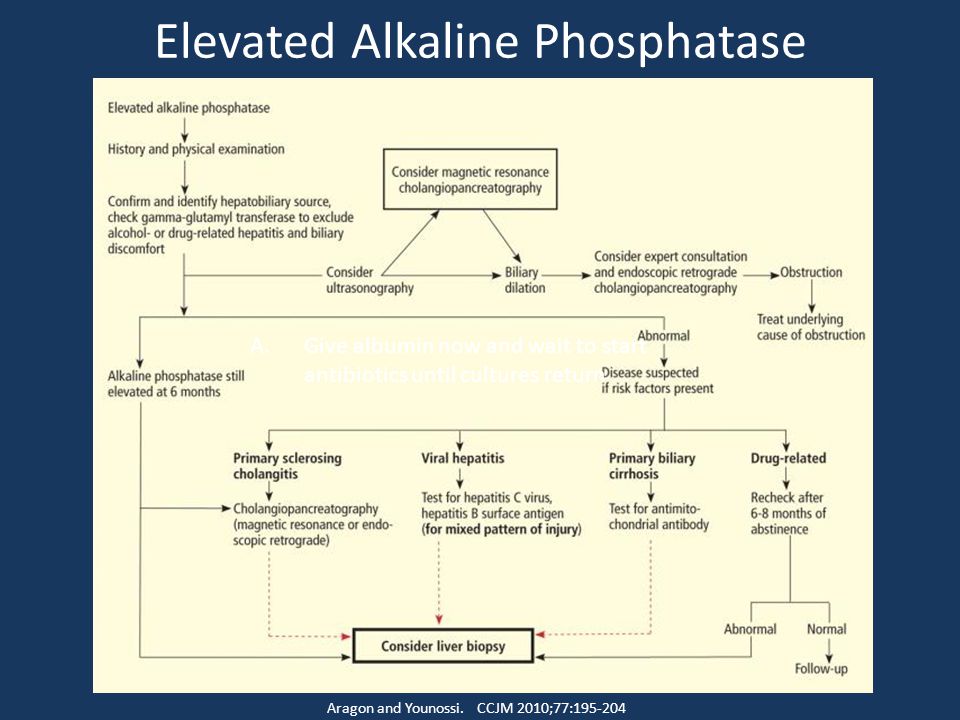 7±0.8 7±0.8 | 4.4–6.4 |
| 2-hours glucose (mmol/l) | 7.6±2.0 | 3.9–10.9 |
| Fasting insulin (pmol/l) | 105±43 | 37–294 |
| 2 hours insulin (pmol/l) | 627±407 | 168–1776 |
|
. | Mean±SD
. | Range
. |
|---|---|---|
| HDL, high-density lipoprotein; LDL, low-density lipoprotein; OGTT, oral glucose tolerance test. | ||
| * For 27 non-diabetic patients | ||
| Total cholesterol (mmol/l) | 6.6±1.9 | 4.0–15.5 |
| Triglyceride (mmol/l) | 4.0±3.6 | 1–22.8 |
| HDL cholesterol (mmol/l) | 0.96±0.2 | 0.6–1.4 |
| OGTT* results: | ||
| Fasting glucose (mmol/l) | 5.7±0.8 | 4.4–6.4 |
| 2-hours glucose (mmol/l) | 7. 6±2.0 6±2.0 | 3.9–10.9 |
| Fasting insulin (pmol/l) | 105±43 | 37–294 |
| 2 hours insulin (pmol/l) | 627±407 | 168–1776 |
Table 3
Characteristics of 16 patients who underwent liver biopsy
| Patient
. | BMI (kg/m2)
. | AST (U/l)
. | ALT (U/l)
. | SAP (U/l)
. | GGT (U/l)
. | Glucose tolerance
. | T.Chol. (mmol/l)
. | TG (mmol/l)
. | HDL (mmol/l)
. | Liver biopsy
. | ||
|---|---|---|---|---|---|---|---|---|---|---|---|---|
|
. |
. |
. |
. |
. |
. |
. 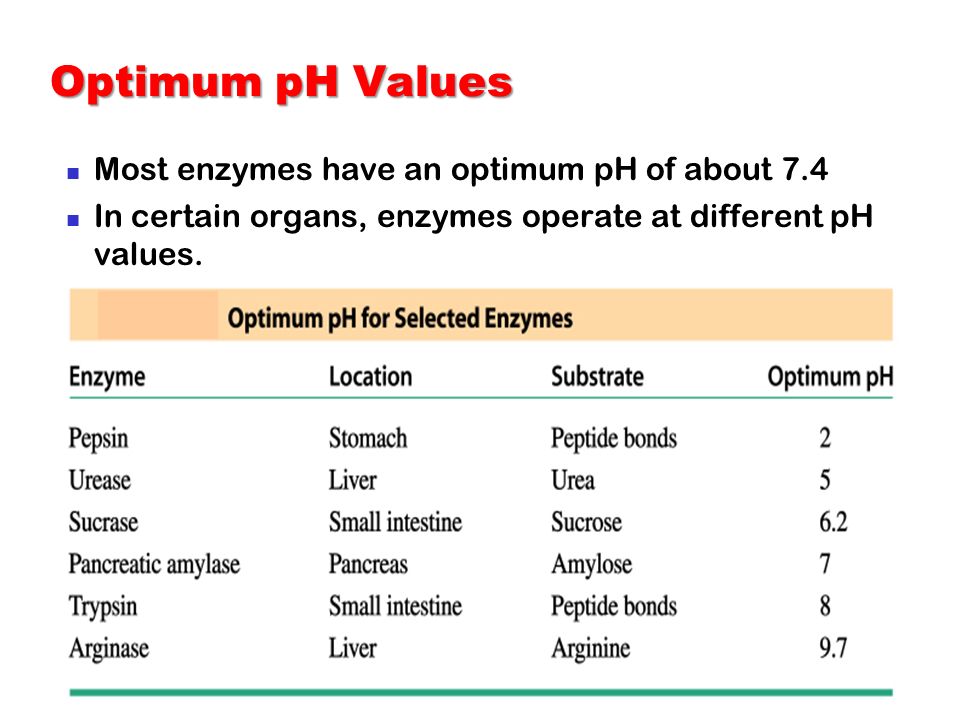 |
. |
. |
. | Steatosis
. | Inflammation
. | Fibrosis
. |
| NA, not available; IGT, impaired glucose tolerance test; HI, hyperinsulinaemia; N, normal glucose tolerance; TG, triglyceride; L, lobular; P, portal; SD, standard deviation; AST, aspartate aminotransferase; ALT, alanine aminotransferase; SAP, serum alkaline phosphatase; GGT, gamma-glutamyl transpeptidase; T.Chol., total cholesterol; HDL, high-density lipoprotein. | ||||||||||||
| 1 | 30 | 111 | 147 | 79 | 323 | DM | 6.21 | 4.78 | 0.91 | +++ | None | None |
| 2 | 26 | 27 | 40 | 300 | 107 | DM | 8.33 | 3.42 | 0.93 | +++ | None | None |
| 3 | 36 | 44 | 76 | 64 | NA | DM | 8.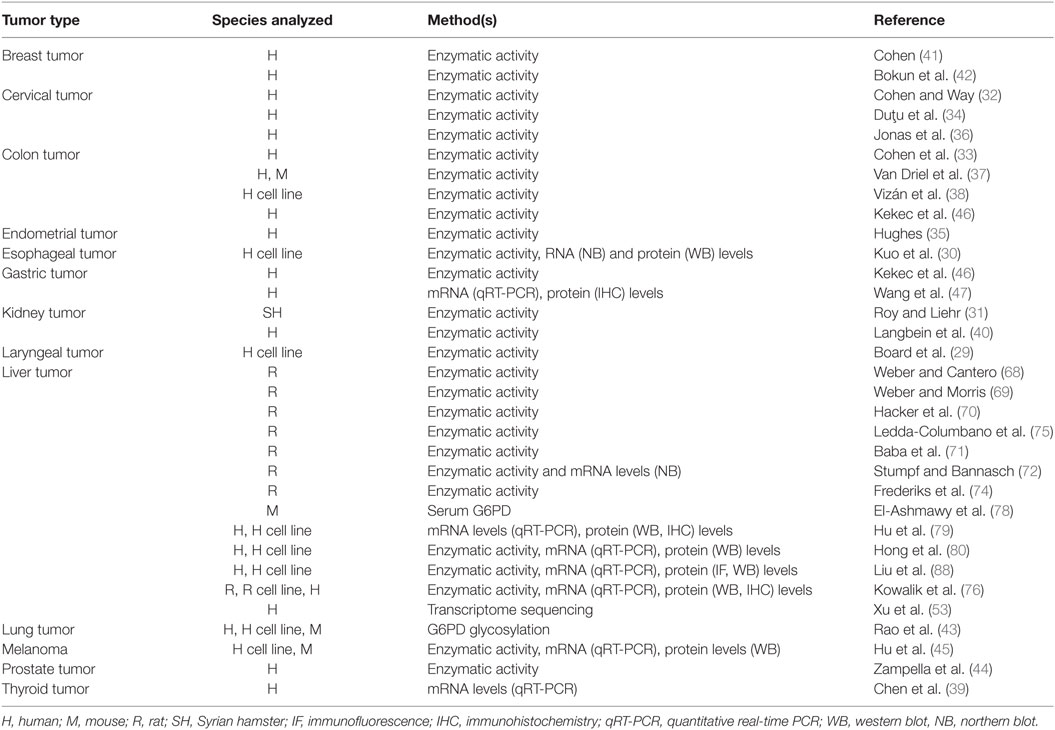 46 46 | 5.01 | 1.24 | +++ | None | None |
| 4 | 24 | 42 | 149 | 98 | 65 | HI | 10.40 | 4.73 | 1.14 | ++ | +L | None |
| 5 | 32 | 44 | 71 | 107 | 24 | IGT | 7.09 | 2.41 | 0.88 | ++ | ++L,+P | +++ |
| 6 | 30 | 53 | 85 | 95 | 133 | IGT | 4.60 | 4.45 | 0.70 | ++ | None | None |
| 7 | 26 | 105 | 176 | 61 | 56 | DM | 5.22 | 1.87 | 1.01 | ++++ | ++L | +++ |
| 8 | 37 | 148 | 140 | 75 | 103 | DM | 9.23 | 6.88 | 0.72 | +++ | +L | + |
| 9 | 25 | 65 | 118 | 124 | 114 | HI | 4. 78 78 | 4.51 | 1.24 | + | None | None |
| 10 | 29 | 59 | 57 | 203 | 317 | DM | 5.53 | 1.50 | 0.75 | +++ | +L+P | ++ |
| 11 | 31 | 56 | 114 | 99 | 40 | DM | 5.53 | 4.79 | 1.01 | ++ | None | None |
| 12 | 28 | 33 | 37 | 62 | 76 | IGT | 5.69 | 4.83 | 0.98 | +++ | +L | + |
| 13 | 26 | 150 | 281 | 131 | 182 | HI | 6.36 | 3.06 | 1.22 | ++ | None | None |
| 14 | 34 | 15 | 20 | 162 | 51 | IGT | 5.99 | 2.78 | 1.45 | ++ | +L,++P | + |
| 15 | 20 | 56 | 102 | 444 | 486 | N | 7. 03 03 | 4.02 | 1.03 | + | None | None |
| 16 | 25 | 65 | 91 | 258 | 192 | DM | 4.29 | 2.69 | 0.98 | ++ | +L,+P | None |
| Mean | 29 | 67 | 106 | 148 | 151 | 6.54 | 3.86 | 1.01 | ||||
| SD | 5 | 40 | 64 | 106 | 130 | 1.76 | 1.40 | 0.21 | ||||
| Patient
. | BMI (kg/m2)
. | AST (U/l)
. | ALT (U/l)
. | SAP (U/l)
. | GGT (U/l)
. | Glucose tolerance
. | T.Chol. (mmol/l)
. | TG (mmol/l)
. | HDL (mmol/l)
. 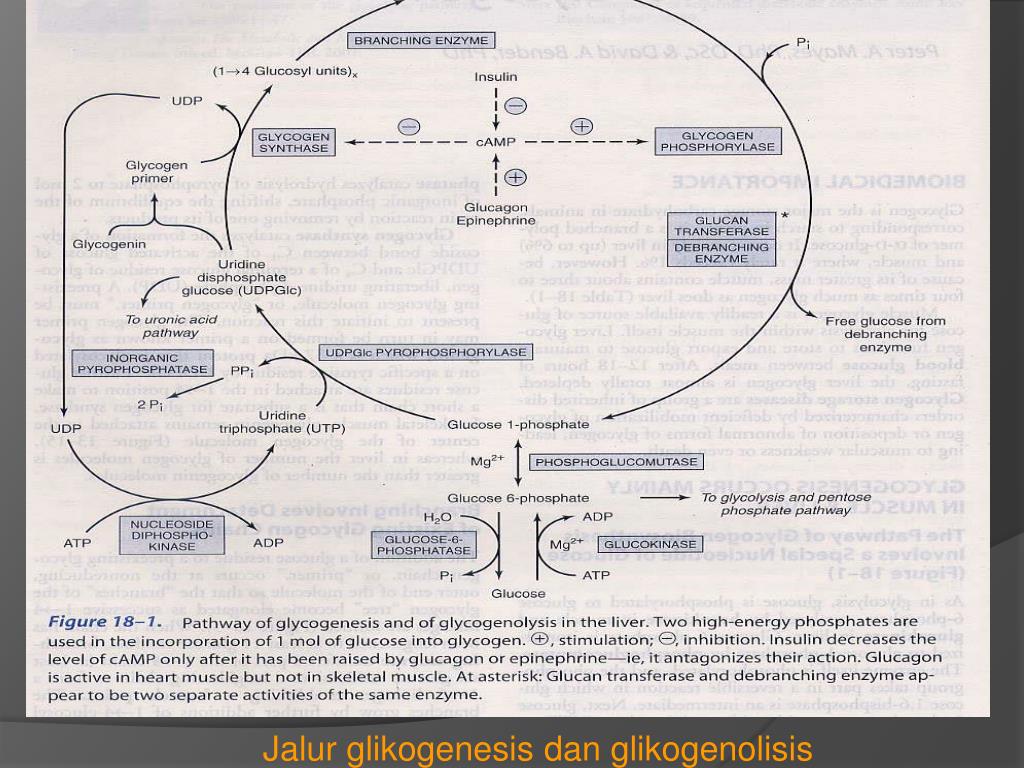 | Liver biopsy
. | ||
|---|---|---|---|---|---|---|---|---|---|---|---|---|
|
. |
. |
. |
. |
. |
. |
. |
. |
. |
. | Steatosis
. | Inflammation
. | Fibrosis
. |
| NA, not available; IGT, impaired glucose tolerance test; HI, hyperinsulinaemia; N, normal glucose tolerance; TG, triglyceride; L, lobular; P, portal; SD, standard deviation; AST, aspartate aminotransferase; ALT, alanine aminotransferase; SAP, serum alkaline phosphatase; GGT, gamma-glutamyl transpeptidase; T.Chol., total cholesterol; HDL, high-density lipoprotein. | ||||||||||||
| 1 | 30 | 111 | 147 | 79 | 323 | DM | 6. 21 21 | 4.78 | 0.91 | +++ | None | None |
| 2 | 26 | 27 | 40 | 300 | 107 | DM | 8.33 | 3.42 | 0.93 | +++ | None | None |
| 3 | 36 | 44 | 76 | 64 | NA | DM | 8.46 | 5.01 | 1.24 | +++ | None | None |
| 4 | 24 | 42 | 149 | 98 | 65 | HI | 10.40 | 4.73 | 1.14 | ++ | +L | None |
| 5 | 32 | 44 | 71 | 107 | 24 | IGT | 7.09 | 2.41 | 0.88 | ++ | ++L,+P | +++ |
| 6 | 30 | 53 | 85 | 95 | 133 | IGT | 4.60 | 4.45 | 0.70 | ++ | None | None |
| 7 | 26 | 105 | 176 | 61 | 56 | DM | 5.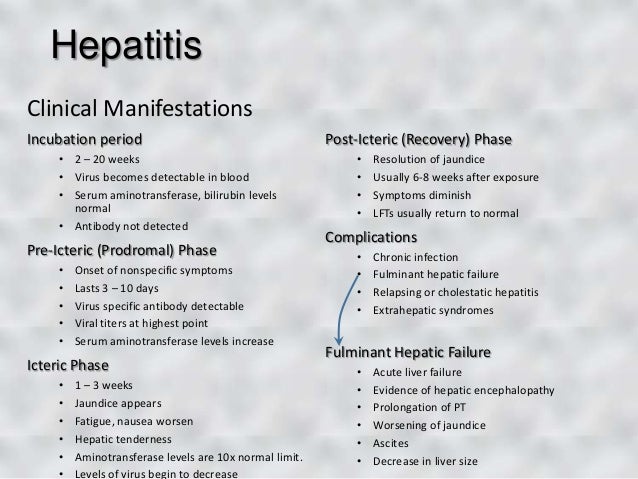 22 22 | 1.87 | 1.01 | ++++ | ++L | +++ |
| 8 | 37 | 148 | 140 | 75 | 103 | DM | 9.23 | 6.88 | 0.72 | +++ | +L | + |
| 9 | 25 | 65 | 118 | 124 | 114 | HI | 4.78 | 4.51 | 1.24 | + | None | None |
| 10 | 29 | 59 | 57 | 203 | 317 | DM | 5.53 | 1.50 | 0.75 | +++ | +L+P | ++ |
| 11 | 31 | 56 | 114 | 99 | 40 | DM | 5.53 | 4.79 | 1.01 | ++ | None | None |
| 12 | 28 | 33 | 37 | 62 | 76 | IGT | 5.69 | 4.83 | 0.98 | +++ | +L | + |
| 13 | 26 | 150 | 281 | 131 | 182 | HI | 6.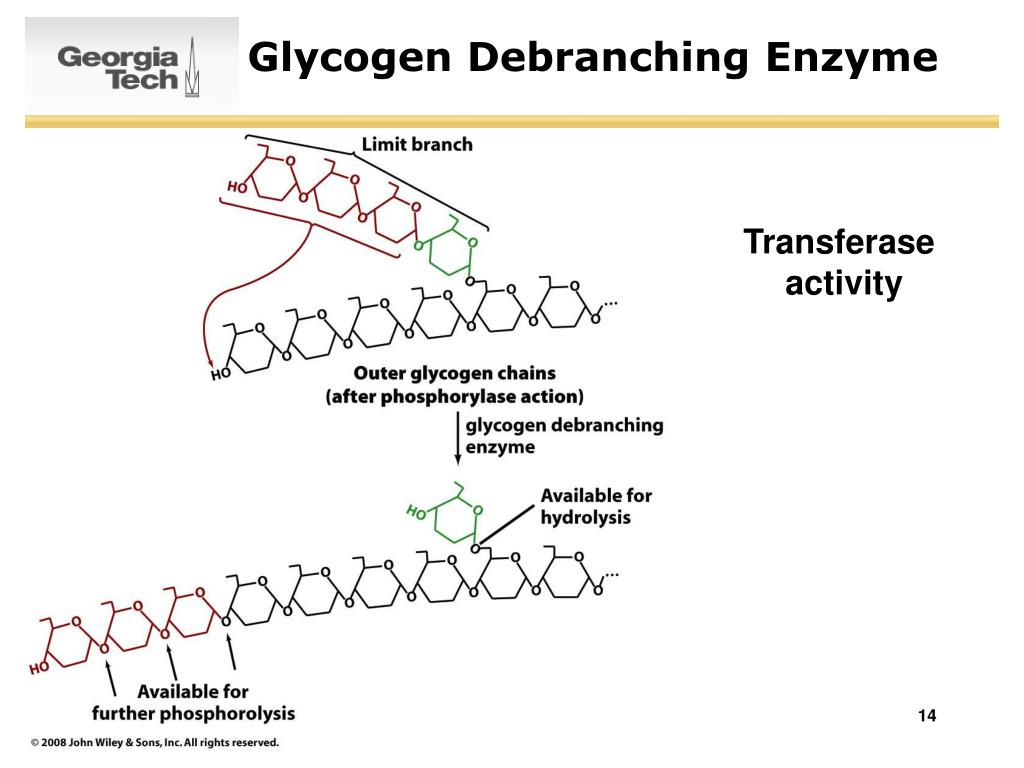 36 36 | 3.06 | 1.22 | ++ | None | None |
| 14 | 34 | 15 | 20 | 162 | 51 | IGT | 5.99 | 2.78 | 1.45 | ++ | +L,++P | + |
| 15 | 20 | 56 | 102 | 444 | 486 | N | 7.03 | 4.02 | 1.03 | + | None | None |
| 16 | 25 | 65 | 91 | 258 | 192 | DM | 4.29 | 2.69 | 0.98 | ++ | +L,+P | None |
| Mean | 29 | 67 | 106 | 148 | 151 | 6.54 | 3.86 | 1.01 | ||||
| SD | 5 | 40 | 64 | 106 | 130 | 1.76 | 1.40 | 0.21 | ||||
Table 3
Characteristics of 16 patients who underwent liver biopsy
| Patient
. .PNG) | BMI (kg/m2)
. | AST (U/l)
. | ALT (U/l)
. | SAP (U/l)
. | GGT (U/l)
. | Glucose tolerance
. | T.Chol. (mmol/l)
. | TG (mmol/l)
. | HDL (mmol/l)
. | Liver biopsy
. | ||
|---|---|---|---|---|---|---|---|---|---|---|---|---|
|
. |
. |
. |
. |
. |
. |
. |
. |
. |
. | Steatosis
. | Inflammation
. | Fibrosis
. |
NA, not available; IGT, impaired glucose tolerance test; HI, hyperinsulinaemia; N, normal glucose tolerance; TG, triglyceride; L, lobular; P, portal; SD, standard deviation; AST, aspartate aminotransferase; ALT, alanine aminotransferase; SAP, serum alkaline phosphatase; GGT, gamma-glutamyl transpeptidase; T. Chol., total cholesterol; HDL, high-density lipoprotein. Chol., total cholesterol; HDL, high-density lipoprotein. | ||||||||||||
| 1 | 30 | 111 | 147 | 79 | 323 | DM | 6.21 | 4.78 | 0.91 | +++ | None | None |
| 2 | 26 | 27 | 40 | 300 | 107 | DM | 8.33 | 3.42 | 0.93 | +++ | None | None |
| 3 | 36 | 44 | 76 | 64 | NA | DM | 8.46 | 5.01 | 1.24 | +++ | None | None |
| 4 | 24 | 42 | 149 | 98 | 65 | HI | 10.40 | 4.73 | 1.14 | ++ | +L | None |
| 5 | 32 | 44 | 71 | 107 | 24 | IGT | 7.09 | 2.41 | 0.88 | ++ | ++L,+P | +++ |
| 6 | 30 | 53 | 85 | 95 | 133 | IGT | 4. 60 60 | 4.45 | 0.70 | ++ | None | None |
| 7 | 26 | 105 | 176 | 61 | 56 | DM | 5.22 | 1.87 | 1.01 | ++++ | ++L | +++ |
| 8 | 37 | 148 | 140 | 75 | 103 | DM | 9.23 | 6.88 | 0.72 | +++ | +L | + |
| 9 | 25 | 65 | 118 | 124 | 114 | HI | 4.78 | 4.51 | 1.24 | + | None | None |
| 10 | 29 | 59 | 57 | 203 | 317 | DM | 5.53 | 1.50 | 0.75 | +++ | +L+P | ++ |
| 11 | 31 | 56 | 114 | 99 | 40 | DM | 5.53 | 4.79 | 1.01 | ++ | None | None |
| 12 | 28 | 33 | 37 | 62 | 76 | IGT | 5. 69 69 | 4.83 | 0.98 | +++ | +L | + |
| 13 | 26 | 150 | 281 | 131 | 182 | HI | 6.36 | 3.06 | 1.22 | ++ | None | None |
| 14 | 34 | 15 | 20 | 162 | 51 | IGT | 5.99 | 2.78 | 1.45 | ++ | +L,++P | + |
| 15 | 20 | 56 | 102 | 444 | 486 | N | 7.03 | 4.02 | 1.03 | + | None | None |
| 16 | 25 | 65 | 91 | 258 | 192 | DM | 4.29 | 2.69 | 0.98 | ++ | +L,+P | None |
| Mean | 29 | 67 | 106 | 148 | 151 | 6.54 | 3.86 | 1.01 | ||||
| SD | 5 | 40 | 64 | 106 | 130 | 1.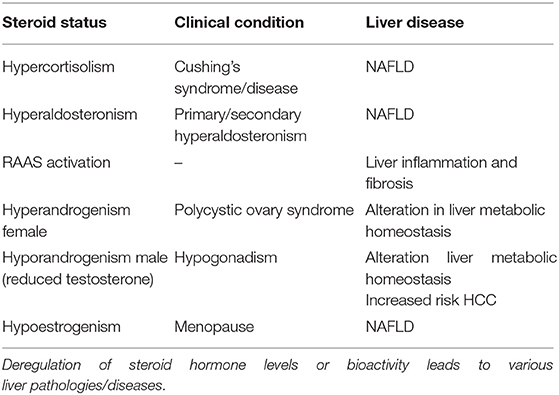 76 76 | 1.40 | 0.21 | ||||
| Patient
. | BMI (kg/m2)
. | AST (U/l)
. | ALT (U/l)
. | SAP (U/l)
. | GGT (U/l)
. | Glucose tolerance
. | T.Chol. (mmol/l)
. | TG (mmol/l)
. | HDL (mmol/l)
. | Liver biopsy
. | ||
|---|---|---|---|---|---|---|---|---|---|---|---|---|
|
. |
. |
. |
. |
. |
. |
. |
. |
. |
. | Steatosis
. | Inflammation
. | Fibrosis
. |
NA, not available; IGT, impaired glucose tolerance test; HI, hyperinsulinaemia; N, normal glucose tolerance; TG, triglyceride; L, lobular; P, portal; SD, standard deviation; AST, aspartate aminotransferase; ALT, alanine aminotransferase; SAP, serum alkaline phosphatase; GGT, gamma-glutamyl transpeptidase; T. Chol., total cholesterol; HDL, high-density lipoprotein. Chol., total cholesterol; HDL, high-density lipoprotein. | ||||||||||||
| 1 | 30 | 111 | 147 | 79 | 323 | DM | 6.21 | 4.78 | 0.91 | +++ | None | None |
| 2 | 26 | 27 | 40 | 300 | 107 | DM | 8.33 | 3.42 | 0.93 | +++ | None | None |
| 3 | 36 | 44 | 76 | 64 | NA | DM | 8.46 | 5.01 | 1.24 | +++ | None | None |
| 4 | 24 | 42 | 149 | 98 | 65 | HI | 10.40 | 4.73 | 1.14 | ++ | +L | None |
| 5 | 32 | 44 | 71 | 107 | 24 | IGT | 7.09 | 2.41 | 0.88 | ++ | ++L,+P | +++ |
| 6 | 30 | 53 | 85 | 95 | 133 | IGT | 4.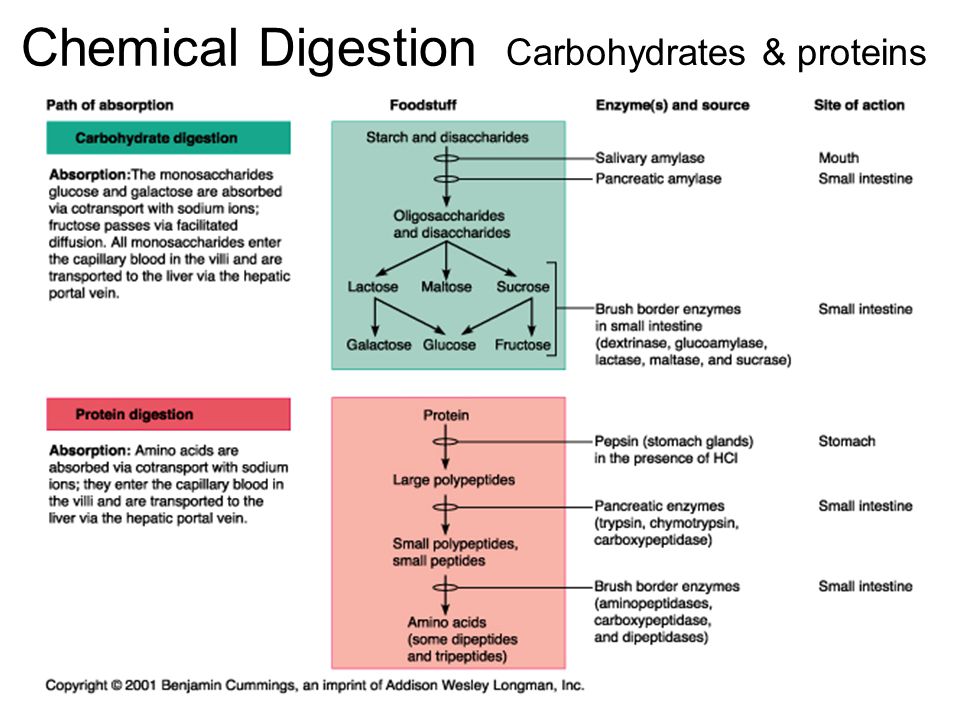 60 60 | 4.45 | 0.70 | ++ | None | None |
| 7 | 26 | 105 | 176 | 61 | 56 | DM | 5.22 | 1.87 | 1.01 | ++++ | ++L | +++ |
| 8 | 37 | 148 | 140 | 75 | 103 | DM | 9.23 | 6.88 | 0.72 | +++ | +L | + |
| 9 | 25 | 65 | 118 | 124 | 114 | HI | 4.78 | 4.51 | 1.24 | + | None | None |
| 10 | 29 | 59 | 57 | 203 | 317 | DM | 5.53 | 1.50 | 0.75 | +++ | +L+P | ++ |
| 11 | 31 | 56 | 114 | 99 | 40 | DM | 5.53 | 4.79 | 1.01 | ++ | None | None |
| 12 | 28 | 33 | 37 | 62 | 76 | IGT | 5.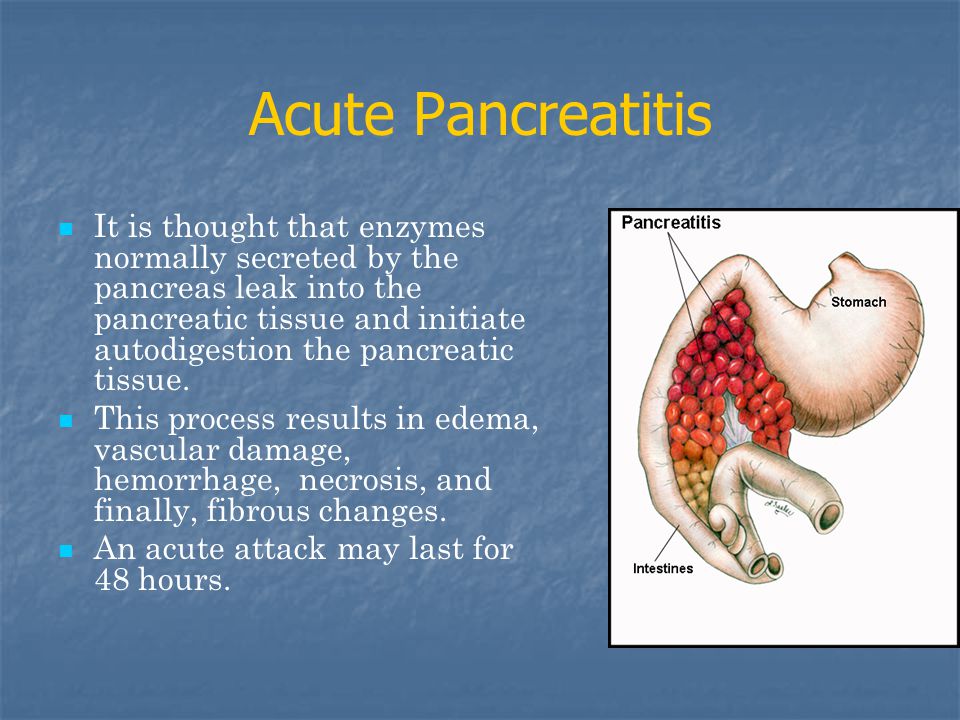 69 69 | 4.83 | 0.98 | +++ | +L | + |
| 13 | 26 | 150 | 281 | 131 | 182 | HI | 6.36 | 3.06 | 1.22 | ++ | None | None |
| 14 | 34 | 15 | 20 | 162 | 51 | IGT | 5.99 | 2.78 | 1.45 | ++ | +L,++P | + |
| 15 | 20 | 56 | 102 | 444 | 486 | N | 7.03 | 4.02 | 1.03 | + | None | None |
| 16 | 25 | 65 | 91 | 258 | 192 | DM | 4.29 | 2.69 | 0.98 | ++ | +L,+P | None |
| Mean | 29 | 67 | 106 | 148 | 151 | 6.54 | 3.86 | 1.01 | ||||
| SD | 5 | 40 | 64 | 106 | 130 | 1. 76 76 | 1.40 | 0.21 | ||||
Figure 1.
Distribution of lipid profiles in patients with fatty liver. TG, triglycerides; HDL, high-density lipoprotein cholesterol; T. CHOL, total cholesterol. Lipoprotein abnormalities were defined according to the Lipid Research Clinic data for age and tender (levels above the 90th percentile for total cholesterol and triglyceride levels or below the 10th percentile for high-density lipoprotein cholesterol level were considered abnormal).
Figure 1.
Distribution of lipid profiles in patients with fatty liver. TG, triglycerides; HDL, high-density lipoprotein cholesterol; T. CHOL, total cholesterol. Lipoprotein abnormalities were defined according to the Lipid Research Clinic data for age and tender (levels above the 90th percentile for total cholesterol and triglyceride levels or below the 10th percentile for high-density lipoprotein cholesterol level were considered abnormal).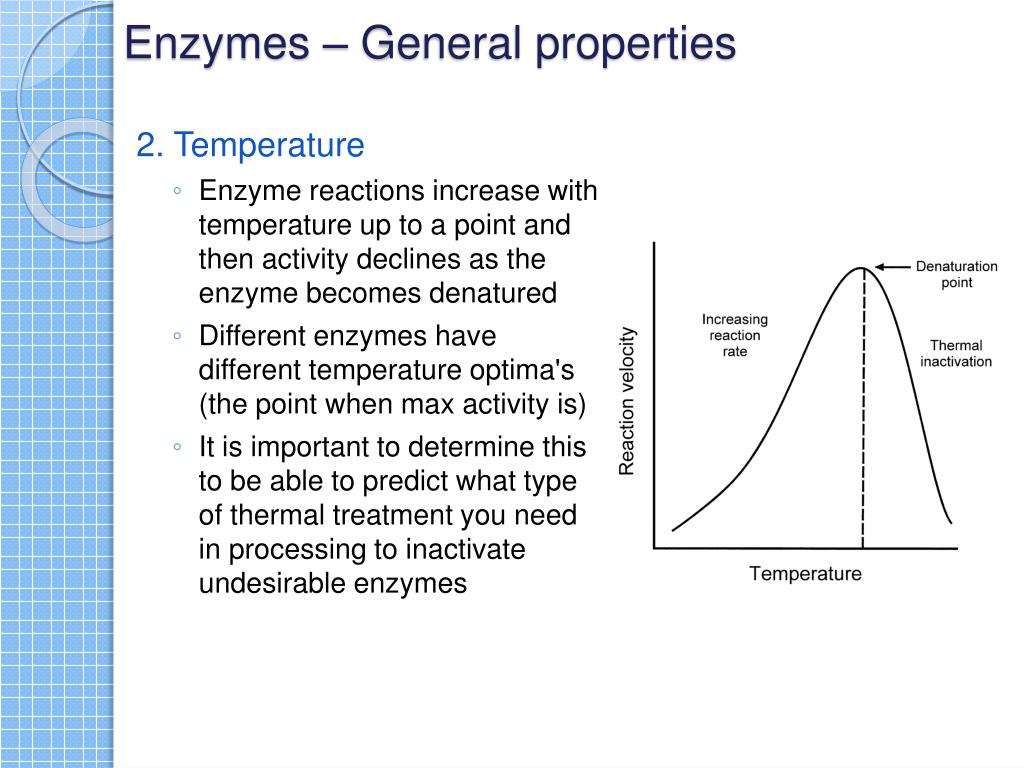
Figure 2.
Distribution of glucose tolerance in patients with fatty liver. Normal, normal response to OGTT; IGT, impaired glucose tolerance test; DM, diabetes mellitus. Hyperinsulinemia was defined by fasting insulin level, exceeding the 90th percentile of its distribution among patients with normal glucose tolerance.
Figure 2.
Distribution of glucose tolerance in patients with fatty liver. Normal, normal response to OGTT; IGT, impaired glucose tolerance test; DM, diabetes mellitus. Hyperinsulinemia was defined by fasting insulin level, exceeding the 90th percentile of its distribution among patients with normal glucose tolerance.
The authors thank Dorit Karsh for her help with the statistical analysis and Rina Stanover for her assistance in preparing the manuscript.
References
1
Ludwig J, Viggiano TR, McGill DB, Ott BJ. Nonalcoholic steatohepatitis: Mayo Clinic Experience with a hitherto unnamed disease.
Mayo Clin Proc
1980
;
55
:
434
–8.2
Sheth SG, Gordon FD, Chopra S. Nonalcoholic steatohepatitis.
Ann Intern Med
1997
;
126
:
137
–45.3
Ludwig J, McGill DB, Lindor KD. Review: nonalcoholic steatohepatitis.
Gastroenterol Hepatol
1997
;
12
:
398
–403.4
Saverymuttu SH, Joseph AEA, Maxwell JD. Ultrasound scanning in the detection of hepatic fibrosis and steatosis.
Br Med J
1986
;
292
:
13
–15.5
Powell EE, Cooksley WGE, Hanson R, Searle J, Halliday JW, Powell LW. The natural history of nonalcoholic steatohepatitis: Follow-up study of forty-two patients for up to 21 years.
Hepatology
1990
;
11
:
74
–80.6
Itoh S, Youngel T, Kawagoe K. Comparison between nonalcoholic teatohepatitis and alcoholic hepatitis.
Am J Gastroenterol
1987
;
82
:
650
–4.7
Lee RG. Nonalcoholic steatohepatitis: A study of 49 patients.
Hum Pathol
1989
;
20
:
594
–8.8
Wanless IR, Lentz JS. Fatty liver hepatitis (steatohepatitis) and obesity: Autopsy study with analysis of risk factors.
Hepatology
1990
;
12
:
1106
–10.9
Bacon BR, Farahvash MJ, Janney CG, Neuschwander-Tetri BA. Nonalcoholic steatohepatitis: An expanded clinical entity.
Gastroenterology
1994
;
107
:
1103
–9.10
Teli MR, James OFW, Burt AD, Bennet MK, Day CP. The natural history of nonalcoholic fatty liver: A follow-up study.
Hepatology
1995
;
22
:
1714
–9.11
Abdelmalek M, Ludwig J, Lindor KD. Two cases from the spectrum of nonalcoholic steatohepatitis.
J Clin Gastroenterol
.
1995
;
20
:
127
–30.12
Okolo III P, Diehl AM. Nonalcoholic steatohepatitis and focal fatty liver. In: Feldman M, Scharschmidt BF, Sleisenger MH, eds. Gastrointestinal Disease: Pathophysiology, Diagnosis, Management. Philadelphia, WB Saunders, 1998:1215–20.
Philadelphia, WB Saunders, 1998:1215–20.
13
Quinn SF, Gosink BB. Characteristic sonographic signs of hepatic fatty infiltration.
Am J Roentgenol
1985
;
145
:
753
–5.14
Lean MEJ, Han TS, Morrison CE. Waist circumference as a measure for indicating need for weight management.
Br Med J
1995
;
311
:
158
–61.15
The Expert Committee on the Diagnosis and Classification of Diabetes Mellitus. Report of the expert committee on the diagnosis and classification of diabetes mellitus.
Diabetes Care
1997
;
20
:
1183
–97.16
Meigs JB, D’Agostino RB, Wilson PWF, Cupples LA, Nathan DM, Singer DE. Risk variable clustering in the insulin resistance syndrome: the Framingham Offspring Study.
Diabetes
1997
;
46
:
1594
–600.17
Heiss G, Tamir I, Davis CE, Tyroler HA, Rifkind BM, Schonfeld G, et al. Lipoprotein-cholesterol distributions in selected North American populations: The Lipid Research Clinics Program Prevalence Study.
Circulation
1980
;
61
:
302
–15.18
Desmet VJ, Gerber M, Hoofnagle JH, Manns M, Scheuer PJ. Classification of chronic hepatitis: diagnosis, grading and staging.
Hepatology
1994
;
19
:
1513
–20.19
Summary of the second report of the National Cholesterol Education Program (NCEP) Expert Panel on Detection Evaluation, and Treatment of High Blood Cholesterol in Adults.
JAMA
1993
;
269
:
3015
–23.20
Daly PA, Solomon CG, Manson JE. Risk modification in the obese patient. In: Manson JE, Ridker PM, Gaziano MJ, Hennekens Ch, eds. Prevention of myocardial infarction. New York, Oxford University Press, 1996.
21
Hultcrantz R, Gabrielsson N. Patients with persistent elevation of aminotransferases: investigation with ultrasonography, radionuclide imaging and liver biopsy.
J Intern Med
1993
;
223
:
7
–12.22
Reaven GM. Role of insulin resistance in human disease.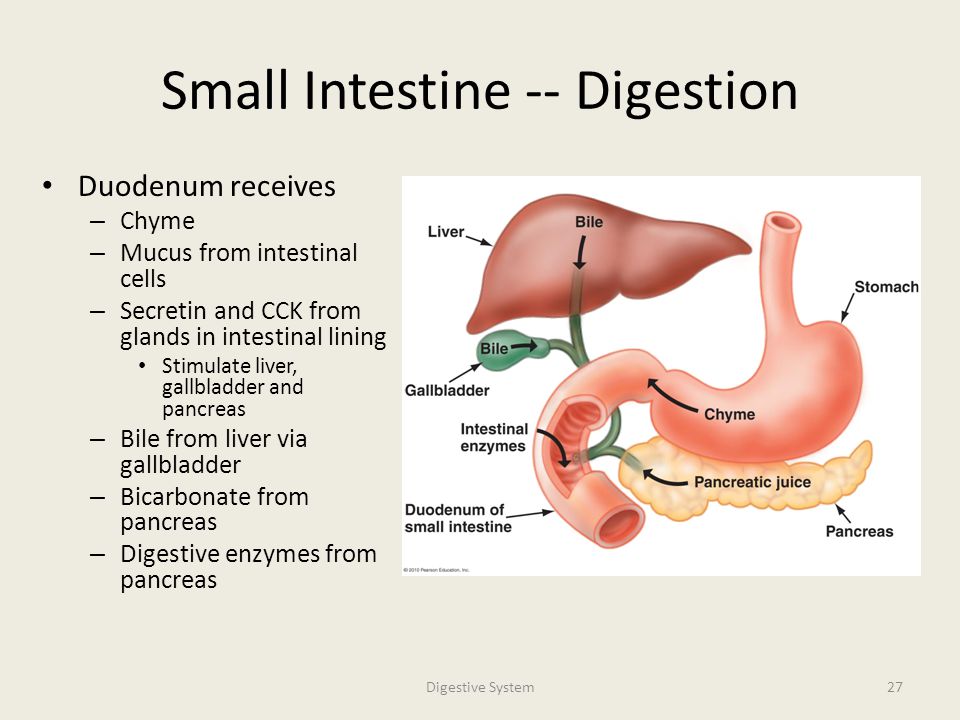
Diabetes
1988
;
37
:
1595
–607.23
DeFronzo RA, Ferrannini E. Insulin resistance. A multifaceted syndrome responsible for NIDDM, obesity, hypertension, dyslipidemia, and atherosclerotic cardiovascular disease.
Diabetes Care
1991
;
14
:
173
–94.24
Pounder D, Carson D, Davison M, Orihara Y. Evaluation of indices of obesity in men: descriptive study.
Br Med J
1998
;
316
:
1428
–9.25
Macor C, Ruggeri A, Mazzonetto P, Federspil G, Cobelli C, Vettor R. Visceral adipose tissue impairs insulin secretion and insulin sensitivity but not energy expenditure in obesity.
Metabolism
1997
;
46
:
123
–9.26
Matsuzawa Y, Shiml, Nakamura T, Keno Y, Tokunaga K. Pathophysiology and pathogenesis of visceral fat obesity.
Diabetes Res Clin Pract
1994
;
24
:
S111
–16.27
Akpunonu BE, Federman DJ. Nonalcoholic steatohepatit.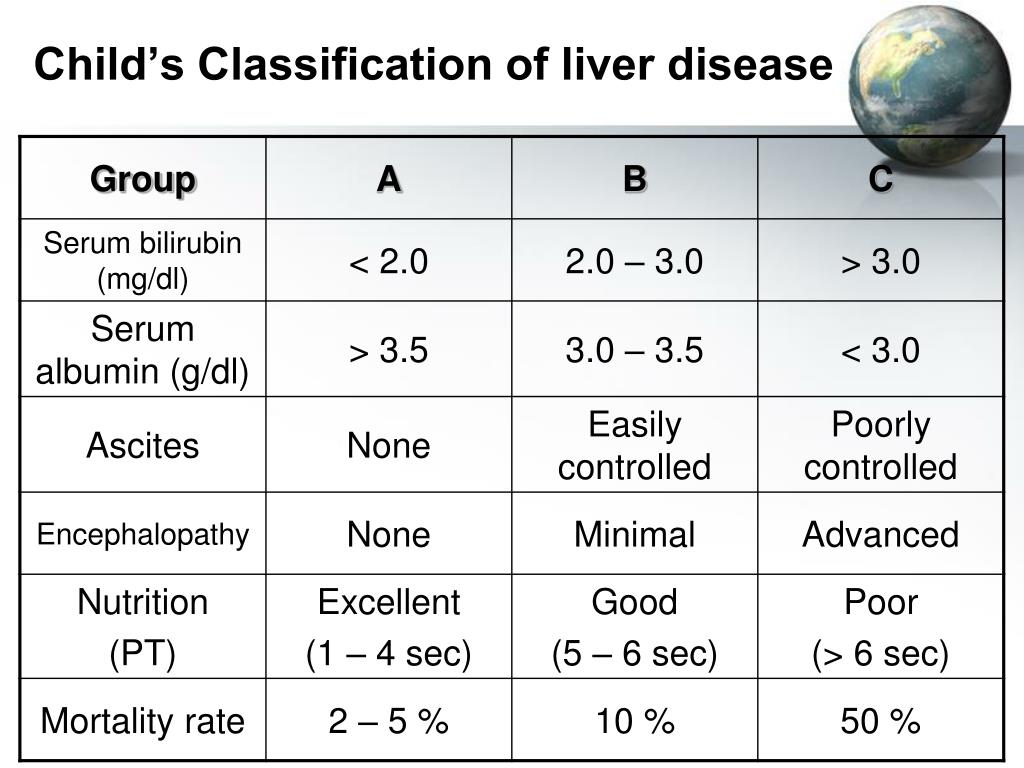
Ann Intern Med
1997
;
127
:
410
.28
Howard BV. Lipoprotein metabolism in diabetes mellitus.
J Lipid Res
1987
;
28
:
613
–28.29
Walker M, Berrish TS, Stewart MW, Humphriss DB, Barriocanal L, Alberti KG. Metabolic heterogeneity in impaired glucose tolerance.
Metabolism
1997
;
46
:
914
–7.30
Lewis GF, Steiner G. Acute effects of insulin in the control of VLDL production in humans: Implications for the insulin-resistant states.
Diabetes Care
1996
;
19
:
390
–3.31
Caprio S, Boulware S, Diamond M, Sherwin RS, Carpenter TO, Rubin K, et al. Insulin resistance: an early metabolic effect of Turner’s syndrome.
J Clin Endocrinol Metab
1991
;
72
:
832
–6.32
Oehler G, Bleyl H, Matthes KJ. Hyperinsulinemia in hepatic steatosis.
Int J Obes
1982
;
6(Suppl 1)
:
137
–44. 33
33
Kawasaki T, Hashimoto N, Kikuchi T, Takahashi H, Uchiyama M. The relationship between fatty liver and hyperinsulinemia in obese Japanese children.
J Ped Gastroenterol
1997
;
24
:
317
–21.34
Day CP, James OFW. Steatohepatitis: A tale of two `hits’?
Gastroenterology
1998
;
114
:
842
–5.35
Palmer M, Schaffner F. Effect of weight reduction on hepatic abnormalities in overweight patients. G 19??; 99:1408–13.
36
Drenick EJ, Simmons F, Murphy JF. Effect on hepatic morphology of treatment of obesity fasting, reducing diets and small-bowel bypass.
N Engl J Med
1970
;
282
:
829
–34.
© Association of Physicians 1999
Association between serum liver enzymes and hypertension: a cross-sectional study in Bangladeshi adults | BMC Cardiovascular Disorders
Kannel WB. Hypertensive risk assessment: cardiovascular risk factors and hypertension.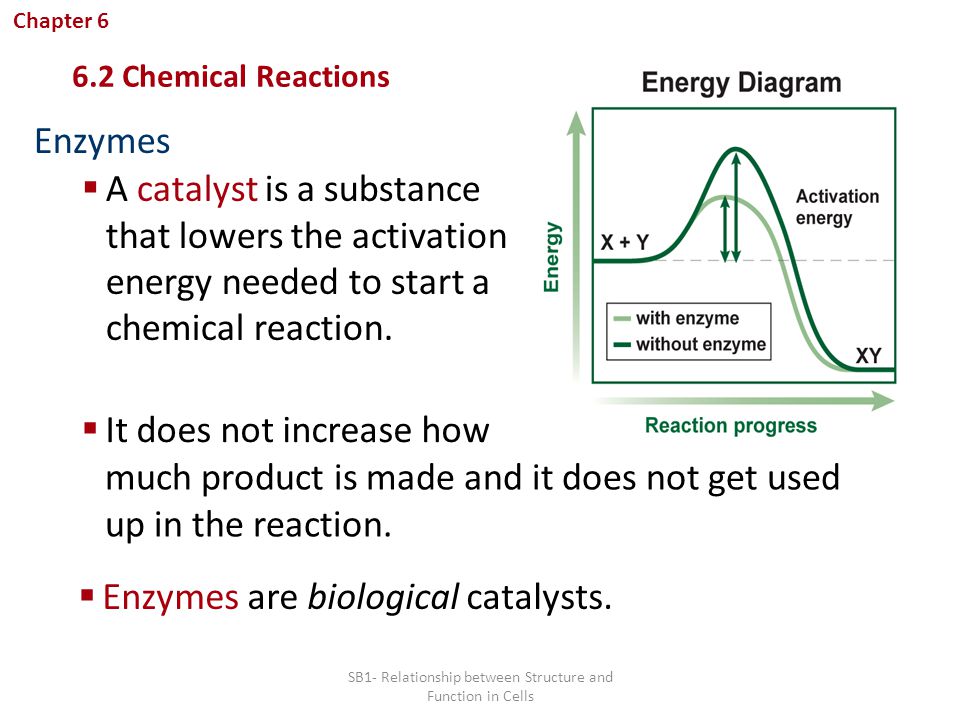 J Clin Hypertens Greenwich. 2004;6:393–9.
J Clin Hypertens Greenwich. 2004;6:393–9.
PubMed
Article
PubMed Central
Google Scholar
Kearney PM, Whelton M, Reynolds K, Whelton PK, He J. Worldwide prevalence of hypertension: a systematic review. J Hypertens. 2004;22:11.
CAS
PubMed
Article
PubMed Central
Google Scholar
Lim SS, Vos T, Flaxman AD, Danaei G, Shibuya K, Adair-Rohani H, et al. A comparative risk assessment of burden of disease and injury attributable to 67 risk factors and risk factor clusters in 21 regions, 1990–2010: a systematic analysis for the global burden of disease study 2010. Lancet. 2012;380:2224–60.
PubMed
PubMed Central
Article
Google Scholar
Alwan A. Global status report on noncommunicable diseases 2010: World Health Organization; 2011.
Neupane D, McLachlan CS, Sharma R, Gyawali B, Khanal V, Mishra SR, et al. Prevalence of hypertension in member countries of South Asian Association for Regional Cooperation (SAARC): systematic review and meta-analysis. Medicine (Baltimore). 2014;93:e74.
Prevalence of hypertension in member countries of South Asian Association for Regional Cooperation (SAARC): systematic review and meta-analysis. Medicine (Baltimore). 2014;93:e74.
Article
Google Scholar
Singh RB, Suh IL, Singh VP, Chaithiraphan S, Laothavorn P, Sy RG, et al. Hypertension and stroke in Asia: prevalence, control and strategies in developing countries for prevention. J Hum Hypertens. 2000;14:749–63.
CAS
PubMed
Article
PubMed Central
Google Scholar
Ali N, Mahmood S, Manirujjaman M, Perveen R, Al Nahid A, Ahmed S, et al. Hypertension prevalence and influence of basal metabolic rate on blood pressure among adult students in Bangladesh. BMC Public Health. 2017;18:58.
PubMed
PubMed Central
Article
Google Scholar
Chowdhury MAB, Uddin MJ, Haque MR, Ibrahimou B. Hypertension among adults in Bangladesh: evidence from a national cross-sectional survey. BMC Cardiovasc Disord. 2016;16:22.
Hypertension among adults in Bangladesh: evidence from a national cross-sectional survey. BMC Cardiovasc Disord. 2016;16:22.
PubMed
PubMed Central
Article
CAS
Google Scholar
Hong X, Wongtongkam N, Ward PR, Xiao S, Wang S, Peng Q, et al. An association of serum ALT with elevated blood pressure in senior adults: a case-control study. Clin Exp Hypertens N Y N 1993. 2016;38:691–5.
CAS
Google Scholar
Corless JK, Middleton HM. Normal liver function: a basis for understanding hepatic disease. Arch Intern Med. 1983;143:2291–4.
CAS
PubMed
Article
PubMed Central
Google Scholar
Hanley AJG, Williams K, Festa A, Wagenknecht LE, D’Agostino RB, Kempf J, et al. Elevations in markers of liver injury and risk of type 2 diabetes: the insulin resistance atherosclerosis study. Diabetes. 2004;53:2623–32.
2004;53:2623–32.
CAS
PubMed
Article
PubMed Central
Google Scholar
Clark JM, Brancati FL, Diehl AM. The prevalence and etiology of elevated aminotransferase levels in the United States. Am J Gastroenterol. 2003;98:960–7.
CAS
PubMed
Article
PubMed Central
Google Scholar
Clark JM, Diehl AM. Nonalcoholic fatty liver disease: an underrecognized cause of cryptogenic cirrhosis. JAMA. 2003;289:3000.
PubMed
Article
PubMed Central
Google Scholar
Jiang S, Jiang D, Tao Y. Role of gamma-glutamyltransferase in cardiovascular diseases. Exp Clin Cardiol. 2013;18:53–6.
CAS
PubMed
PubMed Central
Google Scholar
Lee D-H, Jacobs DR, Gross M, Kiefe CI, Roseman J, Lewis CE, et al. Gamma-glutamyltransferase is a predictor of incident diabetes and hypertension: the coronary artery risk development in young adults (CARDIA) study.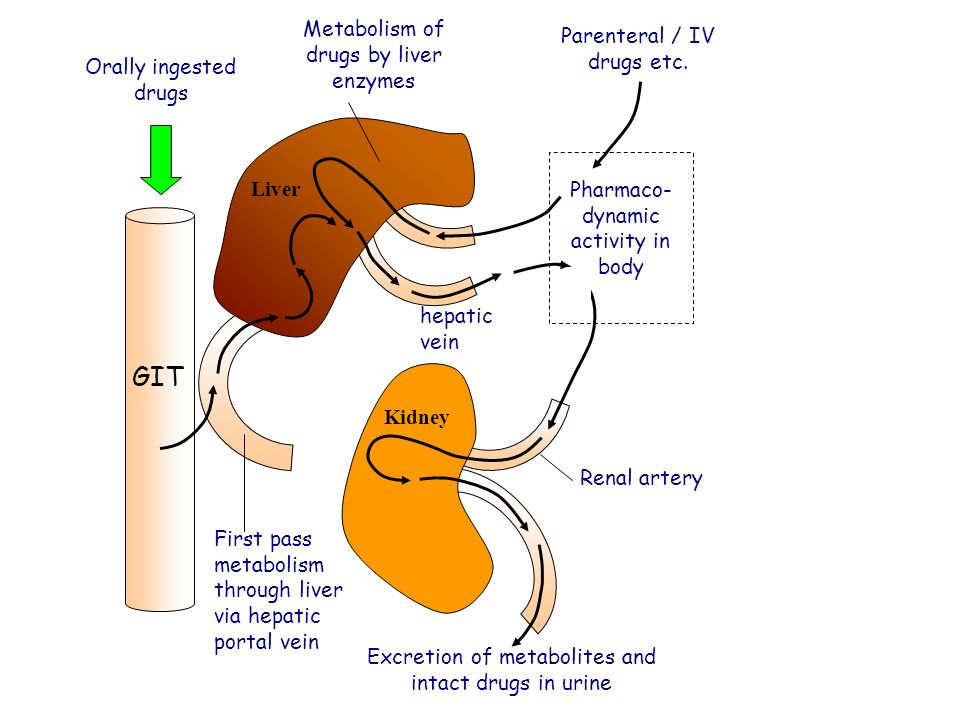 Clin Chem. 2003;49:1358–66.
Clin Chem. 2003;49:1358–66.
CAS
PubMed
Article
PubMed Central
Google Scholar
Nannipieri M, Gonzales C, Baldi S, Posadas R, Williams K, Haffner SM, et al. Liver enzymes, the metabolic syndrome, and incident diabetes: the Mexico City diabetes study. Diabetes Care. 2005;28:1757–62.
CAS
PubMed
Article
PubMed Central
Google Scholar
Sattar N, Scherbakova O, Ford I, O’Reilly DSJ, Stanley A, Forrest E, et al. Elevated alanine aminotransferase predicts new-onset type 2 diabetes independently of classical risk factors, metabolic syndrome, and C-reactive protein in the west of Scotland coronary prevention study. Diabetes. 2004;53:2855–60.
CAS
PubMed
Article
PubMed Central
Google Scholar
Adams LA, Harmsen S, St Sauver JL, Charatcharoenwitthaya P, Enders FB, Therneau T, et al. Nonalcoholic fatty liver disease increases risk of death among patients with diabetes: a community-based cohort study. Am J Gastroenterol. 2010;105:1567–73.
Nonalcoholic fatty liver disease increases risk of death among patients with diabetes: a community-based cohort study. Am J Gastroenterol. 2010;105:1567–73.
PubMed
PubMed Central
Article
Google Scholar
Ekstedt M, Franzén LE, Mathiesen UL, Thorelius L, Holmqvist M, Bodemar G, et al. Long-term follow-up of patients with NAFLD and elevated liver enzymes. Hepatol Baltim Md. 2006;44:865–73.
CAS
Article
Google Scholar
Ong JP, Pitts A, Younossi ZM. Increased overall mortality and liver-related mortality in non-alcoholic fatty liver disease. J Hepatol. 2008;49:608–12.
PubMed
Article
PubMed Central
Google Scholar
Bonnet F, Gastaldelli A, Natali A, Roussel R, Petrie J, Tichet J, et al. Gamma-glutamyltransferase, fatty liver index and hepatic insulin resistance are associated with incident hypertension in two longitudinal studies. J Hypertens. 2017;35:493–500.
J Hypertens. 2017;35:493–500.
CAS
PubMed
Article
PubMed Central
Google Scholar
Dan S, Banerjee I, Roy H, Roy S, Jana T, Dan S. Association between serum gamma-glutamyl transferase level and hypertension in Indian adults: a population based cross-sectional study. North Am J Med Sci. 2012;4:496.
Article
Google Scholar
Lee D-H, Ha M-H, Kim J-R, Gross M, Jacobs DR. Gamma-glutamyltransferase, alcohol, and blood pressure. A four year follow-up study. Ann Epidemiol. 2002;12:90–6.
PubMed
Article
PubMed Central
Google Scholar
Stranges S, Trevisan M, Dorn JM, Dmochowski J, Donahue RP. Body fat distribution, liver enzymes, and risk of hypertension: evidence from the Western New York study. Hypertension. 2005;46:1186–93.
CAS
PubMed
PubMed Central
Article
Google Scholar
Ali N, Rahman S, Islam S, Haque T, Molla NH, Sumon AH, et al. The relationship between serum uric acid and lipid profile in Bangladeshi adults. BMC Cardiovasc Disord. 2019;19:42.
PubMed
PubMed Central
Article
Google Scholar
Ali N, Perveen R, Rahman S, Mahmood S, Rahman S, Islam S, et al. Prevalence of hyperuricemia and the relationship between serum uric acid and obesity: a study on Bangladeshi adults. PLoS One. 2018;13:e0206850.
PubMed
PubMed Central
Article
CAS
Google Scholar
Haque T, Rahman S, Islam S, Molla NH, Ali N. Assessment of the relationship between serum uric acid and glucose levels in healthy, prediabetic and diabetic individuals. Diabetol Metab Syndr. 2019;11:49.
PubMed
PubMed Central
Article
CAS
Google Scholar
Schumann G, Klauke R. New IFCC reference procedures for the determination of catalytic activity concentrations of five enzymes in serum: preliminary upper reference limits obtained in hospitalized subjects. Clin Chim Acta. 2003;327:69–79.
CAS
PubMed
Article
PubMed Central
Google Scholar
Tietz NW, Shuey DF. Reference intervals for alkaline phosphatase activity determined by the IFCC and AACC reference methods. Clin Chem. 1986;32:1593–4.
CAS
PubMed
Article
PubMed Central
Google Scholar
Chobanian AV. National heart, lung, and blood institute; national high blood pressure education program coordinating committee. seventh report of the joint national committee on prevention, detection, evaluation, and treatment of high blood pressure. Hypertension. 2003;42:1206–52.
CAS
Article
Google Scholar
Whelton PK, Carey RM, Aronow WS, Casey DE, Collins KJ, Dennison Himmelfarb C, et al. 2017 ACC/AHA/AAPA/ABC/ACPM/AGS/APhA/ASH/ASPC/NMA/PCNA Guideline for the Prevention, Detection, Evaluation, and Management of High Blood Pressure in Adults: A Report of the American College of Cardiology/American Heart Association Task Force on Clinical Practice Guidelines. Hypertension. 2018;71 Available from: https://www.ahajournals.org/doi/10.1161/HYP.0000000000000065. [cited 2020 Feb 1].
Ha KH, Kim HC, Park S, Ihm SH, Lee HY. Gender differences in the association between serum γ-Glutamyltransferase and blood pressure change: a prospective community-based cohort study. J Korean Med Sci. 2014;29:1379–84.
CAS
PubMed
PubMed Central
Article
Google Scholar
Chun H, Park SK, Ryoo J-H. Association of serum γ-glutamyltransferase level and incident prehypertension in Korean men. J Korean Med Sci. 2013;28:1603–8.
CAS
PubMed
PubMed Central
Article
Google Scholar
Kawamoto R, Kohara K, Tabara Y, Kusunoki T, Otsuka N, Miki T. Association between serum gamma-glutamyl transferase level and prehypertension among community-dwelling men. Tohoku J Exp Med. 2008;216:213–21.
CAS
PubMed
Article
PubMed Central
Google Scholar
Shankar A, Li J. Association between serum gamma-glutamyltransferase level and prehypertension among US adults. Circ J. 2007;71:1567–72.
CAS
PubMed
Article
PubMed Central
Google Scholar
Zhu Y, Gong Y, Zhu R, Liu X, Sun Y, Wang Y, et al. Relationship between serum gamma-Glutamyltransferase levels and prehypertension in Chinese adults: the cardiometabolic risk in Chinese study. J Clin Hypertens. 2014;16:760–5.
CAS
Article
Google Scholar
López-Suárez A, Guerrero JMR, Elvira-González J, Beltrán-Robles M, Cañas-Hormigo F, Bascuñana-Quirell A. Nonalcoholic fatty liver disease is associated with blood pressure in hypertensive and nonhypertensive individuals from the general population with normal levels of alanine aminotransferase. Eur J Gastroenterol Hepatol. 2011;23:1011–7.
PubMed
Article
CAS
PubMed Central
Google Scholar
Musso G, Gambino R, De Michieli F, Durazzo M, Pagano G, Cassader M. Adiponectin gene polymorphisms modulate acute adiponectin response to dietary fat: possible pathogenetic role in NASH. Hepatol Baltim Md. 2008;47:1167–77.
CAS
Article
Google Scholar
Preetha S. Estimation of liver function test in hypertension patients. J Pharm Sci Res. 2016;8:869.
Google Scholar
Shimizu Y, Nakazato M, Sekita T, Kadota K, Yamasaki H, Takamura N, et al. Association between alkaline phosphatase and hypertension in a rural Japanese population: the Nagasaki Islands study. J Physiol Anthropol. 2013;32:10.
PubMed
PubMed Central
Article
Google Scholar
Aneni EC, Oni ET, Martin SS, Blaha MJ, Agatston AS, Feldman T, et al. Blood pressure is associated with the presence and severity of nonalcoholic fatty liver disease across the spectrum of cardiometabolic risk. J Hypertens. 2015;33:1207–14.
CAS
PubMed
Article
PubMed Central
Google Scholar
Sung K-C, Wild SH, Byrne CD. Development of new fatty liver, or resolution of existing fatty liver, over five years of follow-up, and risk of incident hypertension. J Hepatol. 2014;60:1040–5.
PubMed
Article
PubMed Central
Google Scholar
Lee D-H, Blomhoff R, Jacobs DR. Review is serum gamma glutamyltransferase a marker of oxidative stress? Free Radic Res. 2004;38:535–9.
CAS
PubMed
Article
PubMed Central
Google Scholar
Touyz RM. Reactive oxygen species, vascular oxidative stress, and redox signaling in hypertension: what is the clinical significance? Hypertension. 2004;44:248–52.
CAS
PubMed
Article
PubMed Central
Google Scholar
Eslami S, Sahebkar A. Glutathione-S-transferase M1 and T1 null genotypes are associated with hypertension risk: a systematic review and meta-analysis of 12 studies. Curr Hypertens Rep. 2014;16:432.
PubMed
Article
CAS
PubMed Central
Google Scholar
Mansego ML, Solar GDM, Alonso MP, Martínez F, Sáez GT, Escudero JCM, et al. Polymorphisms of antioxidant enzymes, blood pressure and risk of hypertension. J Hypertens. 2011;29:492–500.
CAS
PubMed
Article
PubMed Central
Google Scholar
90,000 Hepatitis C: risk groups, symptoms, treatment
Hepatitis C is an infectious liver disease resulting from infection with the hepatitis C virus (HCV), which spreads primarily through contact with the blood of an infected person. Hepatitis C can be acute or chronic.
Acute hepatitis is an inflammatory process in the liver that occurs during the first 6 months after infection with the hepatitis C virus.For most people, acute hepatitis C leads to chronic infection.
Chronic hepatitis C is a long-term illness that occurs when the hepatitis C virus remains in the body. The chronic form can last a lifetime and lead to serious liver problems, including cirrhosis (scarring of the liver) or liver cancer.
According to various estimates, up to 5 million people in Russia are carriers of this viral infection. Most people do not know they are infected because they do not feel sick.
Approximately 75% -85% of people who are infected with the hepatitis C virus develop chronic infection.
Chronic viral hepatitis C (CVHC) is a serious illness that can lead, in the long term, to health problems, including cirrhosis of the liver, hepatic failure, liver cancer, or death. CVHC today is one of the main causes of cirrhosis and hepatocellular carcinoma (HCC) – liver cancer.
How is hepatitis spread?
Hepatitis C develops after the blood of an infected person enters the body of a healthy person.Today, most people are infected with the hepatitis C virus by sharing needles and other drugs to inject drugs. Until 1992, when blood screening began, hepatitis C was also widely spread through blood transfusions and organ transplants. People may also be infected with the hepatitis C virus through medical intervention, with untreated instruments, or at birth from a mother infected with hepatitis C. toothbrushes.It is also possible to become infected after sexual contact with a person infected with the hepatitis C virus.
Transmission of hepatitis C (and other infectious diseases) is possible during tattooing or piercing, if all hygiene rules and norms are not observed. This often happens in prisons or in non-specialized institutions.
The risk of sexual transmission is considered low. The risk is higher for those who have multiple partners, have comorbid sexually transmitted diseases, or are infected with HIV.
Hepatitis C has not spread through cutlery, hugging, kissing, shaking hands, by airborne droplets, food or water. The hepatitis C virus is not transmitted from mosquito and pet bites.
Who is at risk?
Some people are at increased risk of infection:
90,022 90,023 injecting drug users;
90,023 patients who have received donated blood, blood products or organs;
90,023 persons receiving hemodialysis;
90,023 people who have pierced or tattooed with non-sterile instruments;
90,023 healthcare professionals with hepatitis C virus positive patients;
90,023 HIV-infected persons;
90,023 children born to mothers infected with the hepatitis C virus.
Less at risk:
90 022 90 023 persons who have had sexual contact with a person infected with the hepatitis C virus;
90,023 people using personal hygiene items such as razors and toothbrushes that may contain blood particles from an infected person.
What is the risk of passing the hepatitis C virus from a pregnant woman to her baby?
Hepatitis C and pregnancy is one of the most pressing issues. Hepatitis C is rarely passed from a pregnant woman to a child.About 4 out of 100 babies born to mothers with hepatitis C become infected with the virus. However, the risk is greater if the mother has HIV infection or high levels of the virus in her blood.
What are the symptoms of acute hepatitis C?
Approximately 70% -80% of patients with acute hepatitis C do not have any symptoms. Some people, however, may experience mild to severe illness sometime after infection, including:
fever, fatigue, loss of appetite, nausea, vomiting, abdominal pain, dark urine, lighter stool, joint pain, jaundice (yellow skin color or sclera of the eyes).
If symptoms occur, on average, 6-7 weeks after infection, although the duration can vary from 2 weeks to 6 months. However, many people who are infected with the hepatitis C virus do not have any symptoms. Even if the carrier of hepatitis C does not notice any symptoms of the disease, then he can be the spread of the virus to other people. Many people who are infected with the hepatitis C virus do not know they are infected because they do not feel sick.
What are the symptoms of chronic hepatitis C?
Most people with chronic hepatitis C do not have any symptoms.However, if a person has been infected for many years, their liver may be damaged. In many cases, the symptoms of this disease do not appear until the liver problems develop. Hepatitis C is often diagnosed in asymptomatic individuals by routine blood tests to assess liver function or liver enzymes (involved in protein synthesis).
As a rule, individuals with chronic hepatitis C are characterized by a wave-like change in the level of liver enzymes, and they can periodically return to normal or be almost normal.Some people who are infected have normal liver enzyme levels for more than one year, even if they have liver damage. If the liver enzymes are normal, it should be checked several times over a period of 6-12 months. If your enzymes are consistently normal, your doctor may recommend testing them less frequently, such as once a year.
Who Should Get Tested for Hepatitis C?
Talk to your doctor about testing for hepatitis C if:
- You have used drugs in the past;
- you received hemodialysis;
- there are abnormalities in liver function tests;
- you are a healthcare professional and have had contact with patients’ blood;
- you are infected with HIV;
- If you are pregnant, you need to get tested for hepatitis C.
90,023 you had surgery before 1989;
90,023 You had a blood transfusion or organ transplant before 1989;
Diagnosis of hepatitis C includes several different blood tests. The doctor may order one or more of these tests. As a rule, first of all, a screening test is done, which shows the presence of antibodies to the hepatitis C virus (antibodies to hepatitis C are proteins contained in the blood that are produced by the body in response to the virus). A positive antibody test means that the body has been exposed to the virus. If the antibody test is positive, then the doctor will most likely order a test for the virus itself.
CHVGS TREATMENT
The goal of CVHC treatment is sustained virological response (SVR). This term means the prolonged absence of signs of liver inflammation with an undetectable level of the virus in the blood. Some patients with SVR completely get rid of the virus, while others achieve long-term remission of the disease. Unfortunately, there are currently no available diagnostic methods that guarantee the complete removal of the virus from the body, so all cured patients must undergo PCR tests annually and cannot become blood and organ donors.Each person should discuss treatment options with an infectious disease specialist. People with chronic hepatitis C should be screened regularly to assess liver health and are considered candidates for antiviral therapy. In the treatment of hepatitis C, a combination of two drugs, interferon and ribavirin, is used. However, not every person with chronic hepatitis C infection requires treatment. In addition, the drugs can cause serious side effects in some people.
People with chronic hepatitis C should be supervised by an experienced physician.They should avoid alcohol as it can cause additional liver damage. Be sure to check with a healthcare professional before taking any over-the-counter medications, dietary supplements or other medications, as they can harm the liver. Ask your doctor about vaccinations against hepatitis A and hepatitis B.
People infected with hepatitis C cannot be fired from their jobs for this reason, unless their job involves exposure to blood or blood products.
Are there vaccines that can prevent hepatitis C?
While there are only vaccines for hepatitis, A and hepatitis B.Although scientific research in this area is underway.
If markers of hepatitis are found, you need to contact an infectious disease doctor at the polyclinic at your place of residence. If necessary, you can get a referral to the diagnostic and treatment department of the SKIB GBUZ. You can sign up for a consultation by calling (861) 255-11-12, or online. You should have an extract from the hospital (if you were hospitalized), a passport and an insurance policy.
90,000 High cholesterol
Patient Education Program
Basic Information:
Millions of people around the world have high blood cholesterol levels.This condition is described by the medical term hyperlipidemia. Elevated cholesterol levels increase the risk of myocardial infarction and stroke. This course explains what cholesterol is, how elevated levels lead to heart disease, and what can be done (with and without medication) to lower cholesterol.
1. What are lipids and cholesterol?
Cholesterol, fatty acids and triglycerides are types of fats (lipids).This lesson explains what lipids are and shows why they are important to life.
Description
There are three types of lipids: cholesterol, fatty acids and triglycerides. Fatty acids are of two types: saturated and unsaturated. Unsaturated fatty acids can be monounsaturated or polyunsaturated.
Cholesterol
Cholesterol is normally present in all tissues of the body. The human body is made up of millions of cells. Their walls include lipids, including cholesterol.Without cholesterol, our cells would not be able to function properly. Cholesterol is also one of the basic building blocks of bile salts (which help digest fats), vitamin D, and hormones. Cholesterol comes from two sources. Approximately 70% is synthesized by the body itself, mainly in the liver. Another 30% comes from food. We all consume food that contains cholesterol.
Fatty acids
Other important types of lipids are fatty acids and triglycerides.Like cholesterol, they are essential components of cell walls.
Fatty acids are formed in the body, but some of them must be ingested. Fatty acids are of two types: saturated and unsaturated. Unsaturated fatty acids can be monounsaturated or polyunsaturated.
Lipoproteins
Lipids are needed by all body tissues, so they are transported by the blood using chemicals called lipoproteins.These lipoproteins can bind to various cell structures in the body and release lipids as needed. The two main categories of lipoproteins that carry cholesterol in the body are called High Density Lipoproteins (HDL) and Low Density Lipoproteins (LDL). These are described in more detail in the next section
2. What is the difference between HDL and LDL cholesterol?
HDL and LDL are the main lipoproteins used for the transport of cholesterol in the body.HDL cholesterol is often called “good” and LDL cholesterol is “bad.” This section explains why.
Description
Lipoproteins – such as high density lipoproteins (HDL) and low density lipoproteins (LDL) – are the main carriers of cholesterol. They bind to cholesterol, transfer it to another part of the body, and then release it if necessary.
LPNP
LDL can carry 60 – 70% of blood cholesterol. One of the unpleasant features of LDL is their tendency to “stick” to the walls of blood vessels.Therefore, LDL is the main class of lipoproteins found in atherosclerosis (a disease that builds up deposits on the walls of the arteries), and high levels of LDL cholesterol are an important risk factor for cardiovascular disease.
This will be described in more detail in the next section. Because of this, LDL cholesterol is often referred to as “bad” cholesterol.
HDL
HDL is the smallest class of lipoproteins, which carries 20-30% of blood cholesterol.HDL binds excess cholesterol and returns it to the liver for processing and / or removal from the body. Thus, unlike LDL, HDL removes cholesterol from the circulating blood. High HDL is believed to lower the risk of heart disease, which is why HDL cholesterol is often referred to as “good.”
Ratio
The ratio of LDL to HDL is often used to assess the risk of cardiovascular disease in a patient. High values reflect the predominance of LDL cholesterol (bad) and indicate a high risk.Low values reflect the predominance of HDL (good) cholesterol and indicate low risk.
3. What is dyslipidemia?
Dyslipidemia is a condition in which the levels of lipids in the blood are altered, for example, high cholesterol levels. This section explains what dyslipidemia is and points out two of its causes.
Description
Besides cholesterol, there are other important classes of lipids, including fatty acids and triglycerides.The set of lipids and their levels in each patient is usually referred to as his lipid profile. The body regulates the levels of these lipids, which depend on each other. Most people have normal levels of these lipids. However, in some people, the amounts of certain types of lipids may fall outside the normal range. This condition is called dyslipidemia. So what can cause dyslipidemia? Dyslipidemia can be either primary or secondary. Primary dyslipidemia is caused by genetic or hereditary disorders, and these conditions are quite rare.Secondary dyslipidemias are much more common. They are caused by another medical condition, certain drugs, hormones, or lifestyle factors (such as fatty foods, obesity, and insufficient physical activity). Undoubtedly, it is much easier to treat secondary dyslipidemia.
4. Elevated cholesterol is the cause of the disease
An increase in cholesterol levels can lead to the formation of plaque on the walls of the arteries – atherosclerosis. As a result, the movement of blood through the vessels may be impaired, and in some cases rupture of the affected vessel may occur.Depending on the organ in which this happens, such a process can cause a serious complication, such as a stroke or heart attack. This tutorial explains how this happens.
Description
Atherosclerosis is a process of formation of fatty or fibrous deposits in the form of plaques on the walls of blood vessels. In this case, the lumen of the blood vessel narrows over time, and its wall becomes denser.
So what is the role of high cholesterol in the formation of these plaques?
Plaque
Plaque formation begins with damage to the inner lining of a blood vessel.This damage can result from smoking, high blood pressure, or too high blood glucose levels (such as in diabetes). This damage allows LDL to penetrate into the walls of blood vessels. Immune cells also enter the vessel wall and, absorbing LDL, turn into foam cells. Clusters
foam cells under the microscope look like fat strips. The foam cells produce chemicals that form a fibrous layer on the surface of the fatty strip, resulting in an atheromatous plaque.What disorders do these plaques lead to? There are three main events caused by the presence of atherosclerotic plaques.
Ischemia
Growing plaque can narrow the lumen of a blood vessel, restricting tissue blood flow and oxygen supply. This condition is called ischemia.
Embolism
Small pieces of plaque can break off and circulate in the blood, blocking other vessels. This is called an embolism. The rupture of the plaque can also lead to the release of stored cholesterol into the bloodstream.The contents of the plaque can also cause a blood clot to form at the rupture site.
Aneurysm
Plaque formation on the walls of blood vessels can weaken the walls of blood vessels, resulting in spherical expansions called aneurysms. As the aneurysm grows, the walls of the vessel become thinner and weaker; the likelihood of rupture and life-threatening hemorrhage increases. These three processes can have serious consequences, depending on where in the body they occur.Move the cursor over the three areas of the body shown.
5. What does your lipid profile mean
Your doctor may order a lipid profile test if you suspect you have dyslipidemia. In this case, the blood test will determine the levels of basic lipids and lipoproteins. Before taking blood for this test, you should not eat for 12 hours, as many of these lipids rise after meals.
Description
In the study of the lipid profile, the content of triglycerides, total cholesterol, HDL (sometimes written “HDL cholesterol”) and LDL (sometimes written “LDL cholesterol”) are determined.The LDL / HDL ratio is often reported in the study report. In the United States, the unit for measuring lipid levels is milligrams per deciliter (mg / dl), and in Europe and Russia, millimoles per liter (mmol / L). Recommended levels vary from country to country and change frequently. In Russia, the European guidelines for the prevention of CVD are used. According to these recommendations, the optimal lipid values are: total cholesterol <5 mmol / L (<200 mg / dL), LDL cholesterol <3.0 mmol / L (<115 mg / dL), HDL cholesterol> 1.0 mmol / L in men (> 40 mg / dL) and> 1.2 mmol / L in women (> 46 mg / dL), triglycerides <1.7 mmol / L (<155 mg / dL).
In patients with coronary artery disease and / or atherosclerosis of peripheral arteries, carotid arteries, as well as in the presence of diabetes mellitus, the recommended level of total cholesterol is <4.5 mmol / l, and "bad" cholesterol <2.6 mmol / l.
Rollover Text:
Triglycerides (TG): Triglycerides are not as closely related to disease as cholesterol. However, normal levels should not exceed 1.7 mmol / L (150 mg / L), and your doctor may prescribe medication if they find you have more than 200 mg / L (2.3 mmol / L).
Total cholesterol: Ideally, total cholesterol should be below 5.2 mmol / L (200 mg / dL).
HDL cholesterol: Good cholesterol should ideally be above 1.1 mmol / L (45 mg / dL) in men and 1.4 mmol / L (55 mg / dL) in pre-menopausal women. Levels above 60 mg / dL (1.55 mmol / L) are particularly beneficial and reduce the risk of cardiovascular disease.
LDL Cholesterol: The level of this “bad cholesterol” should ideally be below 2.6 mmol / L (100 mg / dL).
The ratio of LDL cholesterol to HDL cholesterol: A ratio below 3.5 is considered normal. A ratio of 5.0 or higher should be alarming. This attitude is often considered to be an indicator of a high risk of cardiovascular disease.
6. What is your risk of heart attack?
High cholesterol is only one of many risk factors associated with atherosclerosis and cardiovascular events such as myocardial infarction. This section describes these risk factors.
Description
A risk factor is a symptom (such as obesity or smoking) that increases the likelihood of developing a disease. Risk factors that indicate the possibility of developing heart disease are subdivided into manageable and unmanageable. Unmanageable factors are factors that a person cannot influence, for example, age (the risk of cardiovascular disease increases with age), heredity, gender and ethnicity. Controllable risk factors are those that can be changed.Among them – smoking, obesity, diet, lack of physical activity, dyslipidemia, high
blood pressure and diabetes. Answer the following questions and press enter to see a numerical estimate of your risk factors. If you are not sure about the answer, leave it blank. Click “continue” when you’re done with this section. The risk of coronary heart disease increases significantly when multiple risk factors are present because the effects of individual factors are multiplied rather than cumulative.This diagram shows how the relative risks are combined. For example, if a person smokes, his relative risk is 1.6, i.e. the likelihood of developing cardiovascular disease, which can lead to a heart attack, is 1.6 times higher than that of a nonsmoker. If the same person also has high blood pressure, the relative risk rises to 4.5. If the same person has high cholesterol levels, the relative risk rises sharply to 16. Therefore, the more risk factors you eliminate, the lower your risk of cardiovascular disease.
7. How can you lower your cholesterol level?
There are many ways to reduce cholesterol levels. Most of these are associated with lifestyle changes such as dietary changes and increased physical activity. Such changes are described in this section.
Description
A list of foods and dishes is shown here. Check the ones that you regularly eat or drink. Click “continue” when you’re done with this section.Shown here is a diagram describing the different types of lipids.
Rollover Text:
Fats / Lipids: Eat less fatty foods. Fat should be less than 30% of your calories. (For a person consuming 2,000 calories per day, this means a daily intake of no more than 65 grams of fat).
Cholesterol: Cholesterol is found only in food of animal origin, i.e. in meat, dairy products, but not in fruits, vegetables, or nuts.Limit your cholesterol intake to no more than 300 milligrams (mg) per day.
Fatty acids / triglycerides (TG): Unlike cholesterol, they are
are found in food of animal and plant origin. Saturated Fat: These are the worst fats. Saturated fats are dense at room temperature. They are found in animal fats and some oils of tropical plants (including palm and coconut).These fats raise LDL cholesterol levels. Saturated fat should make up less than 10% of your calories.
Unsaturated fat: Unsaturated fat is better than saturated fat.
Unsaturated fats are found in plants. They have a liquid consistency at room temperature.
Polyunsaturated fats: Sunflower, corn and soybean oils contain polyunsaturated fats.
Monounsaturated Fat: These are the best fats.Examples: rapeseed and rice oils. This type of fat helps raise HDL cholesterol levels.
8. What medications can be used?
There are currently 5 main classes of drugs that can lower lipid levels. Statins are the most commonly used drugs. In addition, resins (also known as bile acid sequestrants), cholesterol absorption inhibitors, fibrates, and niacin are available. This section describes these drugs.
Description
Statins
Statins are the most commonly used lipid-lowering drugs.Cholesterol is produced in all cells of the body, but most of it is formed in the liver. Therefore, reducing the production of cholesterol by the liver has become the main goal of drug therapy. To understand the mechanism of action of statins, you need to know the pathways of cholesterol synthesis. Cholesterol is formed as a result of a multi-stage process, and statins inhibit one of its stages. The main enzyme that controls this process is HMG CoA reductase. Statins affect the activity of this enzyme and block the pathway of cholesterol synthesis in the body.Therefore, the body produces less cholesterol, and its level in the patient’s blood decreases. Several statins are currently available. Talk to your doctor about the various statins and their benefits. There are also other drugs that lower cholesterol and triglyceride levels. They can be used alone or in combination with statins.
Resins
Resins bind salts of bile acids, after which they are excreted in the feces. The liver responds to the loss of bile salts by using more cholesterol to synthesize new bile salts, and thus lowering cholesterol levels in the body.
Cholesterol absorption inhibitors
Likewise, cholesterol absorption inhibitors limit cholesterol absorption in the intestine and thereby lower lipid levels.
Fibrates
Fibrates are another example of nonstatin drugs for the treatment of dyslipidemia. These drugs lower LDL levels somewhat, but are mainly used to correct high triglycerides and low HDL levels.
Nicotinic acid
Finally, nicotinic acid, which belongs to the group of PP vitamins, lowers LDL cholesterol and triglycerides, while increasing HDL cholesterol.It is an effective remedy for raising HDL cholesterol levels.
Thank you!
We hope you enjoyed this course. If you think that you or someone close to you have this disease, consult your doctor.
Medicinal liver damage
00:00
Oksana Mikhailovna Drapkina , Executive Director of Internet Sessions, Secretary of the Interdepartmental Council for Therapy of the Russian Academy of Medical Sciences:
– Professor Elena Nikolaevna Shirokova.”Medicinal lesions of the liver.”
Elena Nikolaevna Shirokova , Doctor of Medical Sciences, Professor:
– Medicinal liver damage represent various clinical and morphological variants of liver damage that develop in response to drug intake.
This topic is becoming more and more relevant due to the fact that a huge number of new drugs appear on the market, effective, needed by our patients.At the same time, we are increasingly faced with reactions to these drugs.
The difficulty in diagnosing medicinal liver lesions lies in the fact that they very often proceed under the guise of various hepatopathies. They do not have a characteristic clinical picture.
Medicinal liver damage occurs with a frequency of from one case per 1000 patients to one case per 100,000 patients who are taking drugs in therapeutic doses. Currently, there are over 1000 registered drugs that have the ability to cause liver damage.
Medicinal lesions of the liver do not have a characteristic clinical picture. This can be a completely asymptomatic lesion, or a bright clinical manifestation up to the development of liver failure. As a rule, patients may complain of itching, lack of appetite, watery eyes, nausea, and in some cases diarrhea.
From laboratory data, the following indicators come to our aid. This is gamma glutamyl transpeptidase. Its increase indicates that the biotransformation system was activated, activated, as a rule, for several weeks before the increase in this indicator.Naturally, other reasons for the increase in gamma-HT should be excluded.
It should be noted that this indicator remains normal while taking “Swallow”. In some cases, contraceptives. Alanine transaminase increases, as a rule, in conjunction with aspartic transaminase and indicates inflammatory liver damage. The de Ritis coefficient (the ratio of the level of aspartic transaminase to the level of alanine transaminase) is usually less than one (inflammatory response).
A decrease in cholinesterase indicates that the patient has a decreased synthetic liver function as a result of toxicity. An increase in alkaline phosphatase levels indicates the development of cholestasis.
It is believed that the determination of the first three parameters of the level of gamma-HT, alanine transaminase, cholinesterase is a fairly rational test that has 95% sensitivity in the diagnosis of medicinal liver lesions. Research also the level of the fourth parameter (alkaline phosphatase) increases the sensitivity up to 96%.
03:00
At present, it is customary to operate with the classification of medicinal liver lesions, which is based on an increase in the level of basic biochemical samples. Allocate hepatocellular, cholestatic and mixed drug liver damage.
If the level of alanine transaminase is increased more than 5 times from the upper limit of the norm, and the R index, which is defined as the ratio of the level of alanine transaminase to the level of alkaline phosphatase, is greater than or equal to 5, it is customary to speak of hepatocellular liver damage.
If the level of alkaline phosphatase is increased by more than 2 times, and the R index is less than or equal to 2, we are talking about cholestatic liver damage.
If both alanine transaminase and alkaline phosphatase increase more than 2 times from the upper limit of the norm, and the R index is in the range from 2 to 5, then we are talking about mixed liver damage.
It should be said that cholestatic liver lesions last longer, that is, they resolve more slowly than hepatocellular lesions.At the same time, the severity of hepatocellular lesions is higher than that of cholestatic ones.
Data from the register of American and Spanish authors who analyzed patients with drug-induced liver damage. In both cases (in the American registry, the medical records of 300 patients were analyzed, in the Spanish – more than 600 patients), hepatocellular lesions predominate.
In the American study, their share is 57%, and in the Spanish – 55%. Cholestatic lesions are more modest.This is 23% in the American study, and 25% in the Spanish. Mixed lesions – 20% and 21%, respectively.
05:02
An interesting fact is that the phenotype of drug liver damage is influenced by the age of the patient. According to Spanish authors, published in the journal Hepatology in 2005, it was shown that cholestatic lesions develop more often in men over 60 years of age. At the same time, hepatocellular lesions often develop in women under 60 years of age.
The severity of the course and outcome of drug damage to the liver is largely determined by the type of lesion.The cumulative survival rate for cholestatic and mixed drug liver damage is significantly and reliably higher than the survival rate for patients with hepatocellular liver damage.
Mortality in a study of Spanish authors with hepatocellular liver damage was 7%. While with cholestatic – 5%, with mixed lesion – 2%.
A similar distribution was obtained according to Swedish authors: 12.7% in hepatocellular lesions, in cholestatic lesions – 7.8%.
In a Spanish study, predictors of fulminant hepatic failure with the development of drug damage were identified. They turned out to be: a high level of bilirubin, the presence of hepatocellular lesions and the female sex.
Another ratio. This is data from the American Registry for the Study of Medicinal Liver Disorders. Here, mortality predominated among cholestatic lesions – 14.3 versus 7.5 in hepatocellular lesions.
But in fairness, it must be said that this group of patients with cholestatic liver damage had deaths that were not associated with the development of liver failure, but with a number of other reasons.Although with the development of liver failure (naturally, an excess of the level of bilirubin), the risk of developing renal failure and the addition of infectious complications increases. It also complicates the patient’s prognosis.
According to Swedish authors, an independent predictor of poor prognosis, both in hepatocellular and cholestatic drug damage of the liver, determined the level of bilirubin in the blood serum.
07:46
Until now, there is no unambiguous answer to the question of which drug damage to the liver should be considered chronic.It has been shown that fibrosis can develop as early as 3 months after the onset of drug-induced liver damage. So it is logical to consider 3 months as the time interval after which we can talk about the development of chronic drug damage to the liver.
At the same time, it was shown that cholestatic lesions flow much more slowly and resolve more slowly. Here the terms are longer – 6 months or more. At the moment, it is believed that persistent liver damage (in the case of hepatocellular) should be considered: if the increase in the level of liver function tests exceeds an interval of 3 months.6 months persistence for cholestatic lesion.
Chronic liver damage while taking a medicinal product should be discussed when the altered parameters of liver function tests are recorded for more than 12 months.
Data from a Spanish study of long-term follow-up of patients with drug-induced liver damage. A total of 258 patients took part in the study. The cure was observed in half of the patients (53%), the chronic course of the drug lesion of the liver took in 47%.Of these, resolution in the period up to a year was observed in 35% of patients. Persistence for more than a year – in more (65%). Long-term resolution of them was observed in 48%, and long-term persistence – in more than half of the patients (52%).
Interesting results: of these 52% (out of 38 people), 10 were diagnosed with autoimmune hepatitis. Apparently, the drug lesion, taking the drug acted as a trigger factor for the manifestation of autoimmune hepatitis. Among the remaining 28, 10 were diagnosed with hepatocellular lesion, 18 had cholestatic or mixed lesions.
10:12
There are two types of drug reactions in response to drug intake. Type A is a dose-dependent, predictable reaction characterized by a direct damaging effect. As an example, the effect of alcohol surrogates or paracetamol (actually the only drug for which a toxic dose-dependent effect is described).
The second type of reaction B is a dose-independent, unpredictable reaction. As a rule, we are faced in our histological practice with type B reactions, hypersensitivity reactions.They, in turn, are divided into allergic reactions, pseudo-allergic reactions and reactions that proceed according to the type of idiosyncrasy. The last two are the most common reactions in the practice of the therapist.
As for the morphological equivalent of drug damage to the liver, as a result of direct hepatotoxicity, we can observe the development of necrosis, steatosis and cholestasis. In some cases, we are faced with the development of a tumor process. In idiosyncratic reactions, we are faced with the development of cholestasis and necrosis, or necrosis and steatosis.
In practice, it is often difficult to isolate any one type of liver damage. As a rule, we are faced with a combined defeat.
As an illustration, I give a histological preparation of the development of cholestatic hepatitis. Degenerative changes in the epithelium of the bile ducts are presented. But if we appeal to the opinion of only a morphologist, then, naturally, we will not get an answer to the question: what was the triggering trigger factor for the development of these liver changes.
What happens when a drug enters the hepatocyte? By diffusion of sinusoids through the membrane, the drug enters the liver. It is transported by proteins into the endoplasmic reticulum, where biotransformation processes take place.
It is customary to subdivide them into two phases. The first phase is the hydroxylation oxidation reaction. As a result, intermediate metabolites are formed. Some of them may be toxic.
Reactions of the second phase are reactions associated with glucuronic acid, sulfate, glutathione.Sulfation reactions, glucuronidation, that is, the transfer of drugs into non-toxic substances, into substances that are already easily excreted into the blood or bile. Moreover, the activity of transporters on the hepatocyte biliary policy depends on the degree of saturation with the transported substance and occurs with the participation of ATP.
13:02
(Slide Show).
This diagram illustrates a number of transporters of the hepatocyte apical membrane that allow the clearance of various substances from the hepatocyte into the bile ducts.At the top left is an export bile acid pump (called BSEP), which is encoded by the ABCB11 gene. He is responsible for the transport of bile acids.
If the function of this carrier is disturbed, then there is an accumulation of bile acids, cholestasis, damage to the hepatocyte. The multidrug resistance transporter MRP2 is primarily responsible for the transport of conjugated bound bilirubin. It also transports a number of organic anions and hepatocytes in the bile duct.
Carrier MDR3 is a carrier of multidrug resistance.Acts as an intermediate phase for phosphatidylcholine. It transfers phosphatidylcholine, which forms mixed micelles of cholesterol bile.
Drugs, mainly cations, are carried by a multidrug resistance vector called MDR1. If there is some kind of genetic predisposition, which is represented by nonsense or missense mutations, then under the influence of xenobiotics, disturbances in the work of these transporters are detected. This, accordingly, leads to the accumulation of toxic components in the hepatocyte and to the death of the hepatocyte.
In case of accumulation of toxic components, medicinal metabolites, bile acids in the hepatocyte, alternative routes of excretion are included. On the basolateral membrane, there are representatives of multidrug resistance proteins. In particular, these are MRP3, MRP4.
Under normal conditions, when the liver is functioning normally and nothing threatens it, they are actually inactive. But if the work of other carriers of the apical membrane is disrupted, then they take on new functions.They begin to work with tripled strength.
15:08
With regard to the effect of direct toxicity of various metabolites of medicinal substances that occur in the liver, hepatocyte. They realize their action. They can damage DNA. They can damage lipids and proteins. They can activate the process of lipid peroxidation, deplete ATP stores, promote the formation of free radicals, disrupt the normal cytoskeleton, and so on.
How are these reactions of direct toxicity of reactive metabolites occurring? There is a destruction of cross-links between the protein, the breakdown of microfilaments occurs, which disrupts the transport of cell division.DNA fragmentation triggers the “Caspase” cascade, which leads to apoptosis, to programmed cell death.
In addition to the presented actions of toxic metabolites, other mechanisms of drug damage to the liver are described. In particular, due to the violation of calcium homeostasis, there is a violation of the assembly of fibrilactin on the surface of the hepatocyte membrane. Air bubbles are formed. Air bubbles in the cell membrane lead to disruption of its integrity, which leads to cell lysis.
The letter B denotes the processes that occur on the apical polis of the hepatocyte.Transport membranes, multidrug resistance proteins can be damaged. This contributes to the accumulation of toxic elements, bile acids in the hepatocyte and also leads to liver damage.
Toxic metabolites formed with the participation of cytochrome P450 are transported by transporters of the endoplasmic reticulum to the surface of the hepatocyte. They can act as antigenic targets for various cytokines.
Interaction with tumor necrosis factor receptors IFAZ leads to the launch of the “Caspase” cascade and to programmed cell death (to apoptosis).A number of drugs can affect mitochondrial function by inhibiting beta-oxidation. Disruption of free fatty acid metabolism leads to the accumulation of lactate and free radicals. This disrupts mitochondrial function.
17:37
Mechanisms that influence the development of oxidative stress. On the one hand, this is a pharmacological effect. These are reactive oxygen species that are produced by reactive drug metabolites. On the other hand, it is a reactive oxygen species that can be produced by bile acids.
Genetic characteristics also matter. Mitochondria have an enzyme called superoxide dismutase. It is the main scavenger of superoxide, the main protector of the cell from destruction. There is also peroxidase, which promotes the conversion of hydrogen peroxide, reduction to form water. It is the second main protector of the cell’s mitochondria.
If there are some genetic features that lead to disruption of the work of these enzymes, then in conjunction with pharmacological effects and exposure to external factors, this leads to damage to the cell.
What should be done in the event of a drug-induced liver injury? Of course, immediate withdrawal of the drug is required. In the presence of a hypersensitivity reaction, glucocorticosteroids are indicated. If cholestasis develops, then here the undisputed leader is “Ursodeoxycholic acid”.
Based on what we have now learned about the possible mechanisms for the development of drug damage to the liver, the use of drugs that have, respectively, an antioxidant, metabolic effect, including essential phospholipids, is pathogenetically justified.
I would like to dwell on this part in more detail. It is known that hepatocytes, other cells and various organelles have membranes, which mainly consist of lipids (52 – 54%). 42 – 46% are proteins. Carbohydrates act as antennas for tissue-specific receptors.
The surface area of the membrane of the hepatocyte and organelles is 33,000 square kilometers. This is 5 times the area of a football field. Moreover, the share of the basaloteral membrane accounts for 85%.The rest is the apical membrane.
20:16
The main components of the membrane are phospholipids. 65% are their share. Phospholipids have different structures. Basically, these are phosphoric esters of glycerin. Depending on the composition, choline-containing phospholipids are located on the outer layer of the membrane. The inner layer is amino-containing phospholipids.
This ratio provides the membrane flexibility, its fluidity, which allows the membrane to exercise its properties.Phospholipids form a membrane framework that is essential for proper functioning. It is known that phospholipids form a double layer in the aquatic environment. Moreover, the hydrophilic parts of the molecule are located on the outer and inner sides of the membrane. Inside there are hydrophobic parts.
This ensures continuity and fluidity of the membrane. Provides both lateral movement of phospholipids and proteins, and movement by the “flip-flop” mechanism between the outer and inner layers of the membrane.
How do essential phospholipids work? Why are these drugs attractive for the treatment of medicinal liver damage?
Essential phospholipids are known to have membrane-protective properties.They normalize the fluidity of cell membranes. They contribute to the repair of hepatocytes, restoring damaged structures so that the diseased liver does not spend (this is an energy-intensive process) its energy on the restoration of damaged cell membranes.
In addition, essential phospholipids normalize redox processes, that is, they have an antioxidant effect. Protect cells from oxidative stress. This is actually the cornerstone of the development of drug damage to the liver – hepatocyte damage.
It is important that essential phospholipids have an antifibrotic effect, acting on stellate cells and procollagen production.
22:31
Enzymes of the respiratory tract of mitochondria, which are designed to protect the cell from damage. Their activity, their activity is directly related to the level of phospholipids. The level of enzyme activity is also in direct proportion to the content of polyunsaturated fatty acids in phospholipid molecules.
It is important that the intake of essential phospholipids allows you to quickly cope with pathological changes in biochemical parameters.In addition, these drugs can be prescribed prophylactically together with those drugs that often lead to the development of drug damage to the liver.
As you well know, in a number of cases we cannot refuse to prescribe anti-tuberculosis and anticancer therapy. Here we need helpers – drugs that could neutralize the toxic effects of these drugs. Essential phospholipids work well in this situation as well.
In conclusion, I would like to emphasize once again that a systematic approach is required to determine the causes of hepatotoxicity.A careful analysis of clinical and anamnestic laboratory and instrumental data is required in order to judge what caused the liver damage.
Currently, a number of universal molecular mechanisms of the development of medicinal liver damage have been identified. In practice, it is advisable for a doctor to use the biochemical classification of medicinal liver lesions.
Drug-induced cholestasis is milder, but resolves much more slowly than hepatocellular liver damage.
As a therapeutic tactic (of course, if there is such an opportunity), cancel the drug that caused the drug damage to the liver. Glucocorticosteroids for hypersensitivity reactions. “Ursodeoxycholic acid” in the development of cholestatic lesions. Drugs with an antioxidant effect, membrane-protective effect, including essential phospholipids, are also indicated in the treatment of drug damage to the liver.
Thank you for your attention.
Pancreatitis
Chronic pancreatitis
Pancreatitis is acute and chronic.Acute pancreatitis belongs to the section of emergency surgery.
What is Chronic Pancreatitis?
Chronic pancreatitis is inflammation of the pancreas that lasts a long period of time and does not improve over time.
The pancreas is an organ located retroperitoneally behind the stomach. It produces enzymes that help digest food (exocrine function). The gland also produces hormones that, in particular, control blood sugar levels (endocrine function).
Pancreatitis occurs when the pancreas becomes inflamed. Pancreatitis is considered chronic when the inflammation persists for months or years.
Chronic pancreatitis can lead to permanent scarring and damage to the pancreatic parenchyma. Calcium stones and cysts can develop in the pancreas, which can block the ducts that carry digestive enzymes and juices to the gastrointestinal tract. Exocrine insufficiency is accompanied by digestive disorders, and endocrine insufficiency can lead to diabetes.
What Causes Chronic Pancreatitis?
There are many different causes of chronic pancreatitis. The most common cause is long-term alcohol abuse. Approximately 70 percent of cases are alcohol-related.
Other reasons include:
an autoimmune disease that occurs when the body mistakenly attacks healthy cells and tissues
narrow pancreatic duct,
blockage of the pancreatic duct by gallstones or pancreatic stones
cystic fibrosis, which is a hereditary disorder
high levels of calcium in the blood, called hypercalcemia
high levels of triglyceride fats in the blood, called hypertriglyceridemia
Who is at risk of getting chronic pancreatitis?
Alcohol abuse increases your risk of developing chronic pancreatitis.Smoking is thought to increase the risk of pancreatitis among alcoholics. In some cases, a family history of chronic pancreatitis increases the risk.
Chronic pancreatitis most often develops in people between the ages of 30 and 40. This disease is also more common in men than in women.
What are the symptoms of chronic pancreatitis?
You may not notice any symptoms at first. The changes in the pancreas can get started before you start to feel unwell.
When symptoms occur, these may include:
upper abdominal pain
diarrhea
nausea and vomiting
dyspnea
unexplained weight loss
excessive thirst and fatigue
As the disease progresses, more serious symptoms may occur, such as:
Painful attacks can last for hours or even days.Some people find that eating or drinking can make their pain worse. As the disease progresses, the pain may become constant.
How is Chronic Pancreatitis Diagnosed?
In the early stages of chronic pancreatitis, changes in the pancreas are difficult to see on a blood test. For this reason, blood tests are usually not used to diagnose disease. However, they can be used to measure the level of pancreatic enzymes in the blood.Your doctor may ask you for a stool sample to check your fat levels. Fatty stools can be a sign that your body is not properly absorbing nutrients.
Radiological techniques are the most reliable way for your doctor to diagnose. Your doctor may ask you to do the following tests to look for signs of pancreatic inflammation:
Ultrasound
How is Chronic Pancreatitis Treated?
Treatment for chronic pancreatitis aims to reduce pain and improve digestive function.Damage to the pancreas cannot be repaired, but with proper care, you can manage many of the symptoms. Treatment for pancreatitis may include medication, endoscopic therapy, or surgery.
Drug use
Possible medications your doctor may prescribe for chronic pancreatitis include:
pain reliever
artificial digestive enzymes if your enzyme levels are too low to metabolize food normally
insulin if diabetes develops
systemic steroids, if you have autoimmune pancreatitis, which occurs when the immune system attacks the pancreas
Endoscopy
Some procedures use an endoscope to relieve pain and clear blockages in the ducts.Endoscopy allows your doctor to dissect narrowings, remove stones from the pancreas, and place small stent tubes.
Surgery
Most people don’t need surgery. However, if you have severe pain, do not respond to drug therapy, only surgery can help to effectively solve the problem. Surgery can be used to unblock the pancreatic duct or widen it if it is too narrow. During the operation, the surgeon widely opens the pancreatic duct, removes non-viable or affected tissues, duct stones (cleans the duct system).The operation is usually completed by suturing the intestine to the duct to ensure the drainage of pancreatic juice and prevent the development of recurrence of the disease.
It is important to avoid drinking alcohol after you have been diagnosed with chronic pancreatitis, even if alcohol was not the cause of your illness. You should also avoid smoking as it can increase your risk of developing pancreatic cancer. You may need to limit the amount of fat in your diet and take vitamins.
What are the possible complications of chronic pancreatitis?
Chronic pancreatitis can cause numerous complications. You are at greater risk of developing complications if you continue to drink alcohol after being diagnosed.
Malabsorption of nutrients is one of the most common complications. Since your pancreas doesn’t produce enough digestive enzymes, your body doesn’t absorb nutrients properly.This can lead to weight loss and dystrophy.
The development of diabetes mellitus is another possible complication. Pancreatitis damages the cells that make insulin and glucagon, which control the amount of sugar in your blood. This can lead to high blood sugar levels. About 45 percent of people with chronic pancreatitis will develop diabetes.
Some people also develop pseudocysts, fluid-filled growths that can form inside or outside the pancreas.Pseudocysts are dangerous because they can block important ducts and blood vessels. In some cases, suppuration of pseudocysts may occur.
Long-term perspective. Forecast.
The prognosis depends on the severity and cause of the disease. Other factors can affect your chances of recovery, including your age at diagnosis and whether you continue to drink alcohol or smoke cigarettes.
Prompt diagnosis and treatment can improve the prognosis.Call your doctor directly if you notice any symptoms of pancreatitis.
Biochemical blood test – causes, diagnosis and treatment
What are the indications for the appointment of a biochemical blood test?
A biochemical blood test is important for the diagnosis of almost all diseases, therefore it is prescribed in the first place.
What indicators are included in the standard biochemical blood test?
Glucose (in blood)
The main test in the diagnosis of diabetes mellitus.This analysis is very important in the selection of therapy and in assessing the effectiveness of diabetes treatment. A decrease in glucose levels is observed in some endocrine diseases and liver dysfunctions.
Normal blood glucose values:
| Age | Glucose level, mmol / l |
|---|---|
| <14 years | 3.33 – 5.55 |
| 14 – 60 years | 3.89 – 5.83 |
| 60 – 70 years | 4.44 – 6.38 |
| > 70 years | 4.61 – 6.10 |
Total bilirubin
Yellow blood pigment, which is formed as a result of the breakdown of hemoglobin, myoglobin and cytochromes.The main reasons for an increase in the amount of total bilirubin in the blood: damage to liver cells (hepatitis, cirrhosis), increased breakdown of erythrocytes (hemolytic anemia), impaired outflow of bile (for example, cholelithiasis).
Normal values of total bilirubin: 3.4 – 17.1 μmol / l.
Direct bilirubin (conjugated bilirubin, bound)
Fraction of total blood bilirubin. Direct bilirubin increases with jaundice, which develops due to a violation of the outflow of bile from the liver.
Normal values of direct bilirubin: 0 – 7.9 μmol / L.
Indirect bilirubin (unconjugated bilirubin, free)
Difference between indicators of total and direct bilirubin. This indicator rises with an increase in the breakdown of erythrocytes – with hemolytic anemia, malaria, massive hemorrhages in the tissue, etc.
Normal values for indirect bilirubin: <19 μmol / L.
AsAT (AST, aspartate aminotransferase)
One of the main enzymes synthesized in the liver.Normally, the content of this enzyme in blood serum is low, since most of it is found in hepatocytes (liver cells). An increase is observed in diseases of the liver and heart, as well as with prolonged use of aspirin and hormonal contraceptives.
Normal AST values:
- Women – up to 31 U / l;
- Men – up to 37 U / l.
ALAT (ALT, alanine aminotransferase)
An enzyme synthesized in the liver. Most of it is found and works in liver cells, so the normal concentration of ALT in the blood is low.An increase is observed with mass death of liver cells (for example, with hepatitis, cirrhosis), severe heart failure and blood diseases.
Normal ALT values:
- Women – up to 34 U / l;
- Men – up to 45 U / l.
Gamma-GT (gamma-glutamyltransferase)
An enzyme found mainly in the cells of the liver and pancreas. An increase in its amount in the blood is observed with diseases of these organs, as well as with prolonged intake of alcohol.
Normal gamma-GT values:
- Women – up to 38 U / l;
- Men – up to 55 U / l.
Phosphatase alkaline
An enzyme widely distributed in human tissues. The hepatic and bone forms of alkaline phosphatase, the activity of which is determined in the blood serum, are of the greatest clinical importance.
Normal values of alkaline phosphatase: 30-120 U / L.
Cholesterol (total cholesterol)
The main blood lipid, which enters the body with food, and is also synthesized by liver cells.
Normal cholesterol levels: 3.2-5.6 mmol / l.
Low density lipoprotein (LDL)
One of the most atherogenic, “harmful” lipid fractions. LDL is very rich in cholesterol and, transporting it to vascular cells, are retained in them, forming atherosclerotic plaques.
Normal LDL values: 1.71-3.5 mmol / L.
Triglycerides
Neutral fats in blood plasma, an important indicator of lipid metabolism.
Normal values of triglycerides: 0.41-1.8 mmol / l.
Total protein
An indicator reflecting the total amount of proteins in the blood. Its decrease is observed in some diseases of the liver and kidneys, accompanied by increased excretion of protein in the urine. Increase – with blood diseases and infectious and inflammatory processes.
Normal values for total protein: 66-83 g / l.
Albumin
The most important protein in the blood, accounting for about half of all whey proteins.A decrease in the content of albumin can also be a manifestation of some diseases of the kidneys, liver, intestines. An increase in albumin is usually associated with dehydration.
Normal values of albumin: 35-52 g / l
Potassium (K +)
Electrolyte contained mainly inside cells. An increase in the level of potassium in the blood is most often observed in acute and chronic renal failure, a sharp decrease in the amount of excreted urine or its complete absence, most often associated with severe kidney disease.
Normal values of potassium: 3.5-5.5 mmol / L.
Sodium (Na +)
Electrolyte contained mainly in the extracellular fluid, and to a lesser extent – inside the cells. He is responsible for the work of nervous and muscle tissue, digestive enzymes, blood pressure, water metabolism.
Normal sodium values: 136-145 mmol / L.
Chlorine (Cl-)
One of the main electrolytes found in the blood in an ionized state and plays an important role in maintaining water-electrolyte and acid-base balance in the body.
Normal chlorine values: 98-107 mmol / l.
Creatinine
A substance that plays an important role in the energy metabolism of muscle and other tissues. Creatinine is completely excreted by the kidneys, therefore, the determination of its concentration in the blood is of greatest clinical importance for the diagnosis of kidney disease.
Normal creatinine values:
- Women – 53 – 97 μmol / L;
- Men – 62 – 115 μmol / L.
Urea
Substance that is the end product of protein metabolism in the body.Urea is excreted by the kidneys, therefore, the determination of its concentration in the blood gives an idea of the functional abilities of the kidneys and is most widely used for the diagnosis of renal pathology.
Normal values of urea: 2.8-7.2 mmol / l.
Uric acid
One of the end products of protein metabolism in the body. Uric acid is completely excreted by the kidneys. P An increase in the concentration of uric acid occurs in kidney stones, other kidney diseases occurring with renal failure.
Normal values of uric acid:
- Men – 210 – 420 μmol / L;
- Women – 150 – 350 μmol / L.
C-reactive protein (CRP)
A sensitive blood element that reacts faster than others to tissue damage. The presence of reactive protein in blood serum is a sign of an inflammatory process, trauma, penetration of foreign microorganisms into the body – bacteria, parasites, fungi. The more acute the inflammatory process, the more active the disease, the higher the C-reactive protein in the blood serum.
Normal values for C-reactive protein: 0 – 5 mg / l.
Iron (serum iron)
A vital trace element, which is part of hemoglobin, is involved in the transport and storage of oxygen and plays an important role in the processes of hematopoiesis.
Normal serum iron values:
- Women – 8.95 – 30.43 μmol / L;
- Men – 11.64 – 30.43 μmol / L.
How do I prepare for the study?
One day before taking blood for biochemistry, it is necessary to exclude alcohol intake, 1 hour before – smoking.It is advisable to take blood on an empty stomach in the morning. At least 12 hours should elapse between the last meal and blood collection. Juice, tea, coffee, chewing gum are not allowed. You can drink water. It is necessary to exclude increased psycho-emotional and physical stress.
What are the deadlines for the analysis?
1 day.
How are the results of a biochemical blood test evaluated?
The use of different diagnostic methods by different clinics leads to unequal results, and the units of measurement may also differ.Therefore, to correctly decipher the result of a biochemical blood test, a consultation with the attending physician is required.
90,000 Liver. Xenobiotics. Kidneys. Blood | Zaporizhzhya State Medical University
Time limit: 0
0 of 54 questions completed
Questions:
- 1
- 2
- 3
- 4
- 5
- 6
- 7
- 8
- 9
- 10
- 11
- 12
- 13
- 14
- 15
- 16
- 17
- 18
- 19
- 20
- 21
- 22
- 23
- 24
- 25
- 26
- 27
- 28
- 29
- 30
- 31
- 32
- 33
- 34
- 35
- 36
- 37
- 38
- 39
- 40
- 41
- 42
- 43
- 44
- 45
- 46
- 47
- 48
- 49
- 50
- 51
- 52
- 53
- 54
Information
Testing “ Croc 1.General medical training “on the topics” Liver biochemistry. Metabolism of foreign compounds (xenobiotics). The transformation of medicinal substances in the body. Microsomal oxidation. The chemical composition of blood. Blood proteins. Blood enzymes. Buffer systems of blood. Coagulation system of the blood. Blood chemistry. Water-electrolyte exchange. Physicochemical properties of urine. The chemical composition of urine in normal conditions and in pathological processes. Urinalysis “
You have already taken the test before.You cannot start it again.
Test loading …
You must login or register in order to start the test.
You must complete the following tests to start this one:
Correct answers: 0 out of 54 9.0003
Your time:
Time has elapsed
You scored 0 out of 0 points (0)
90,721 90,730 90,723 90,732 Average result 90,733
- 1
- 2
- 3
- 4
- 5
- 6
- 7
- 8
- 9
- 10
- 11
- 12
- 13
- 14
- 15
- 16
- 17
- 18
- 19
- 20
- 21
- 22
- 23
- 24
- 25
- 26
- 27
- 28
- 29
- 30
- 31
- 32
- 33
- 34
- 35
- 36
- 37
- 38
- 39
- 40
- 41
- 42
- 43
- 44
- 45
- 46
- 47
- 48
- 49
- 50
- 51
- 52
- 53
- 54
Question 1 of 54
The patient complains of shortness of breath after exercise.Objectively: anemia, the presence of paraprotein in the area of gammaglobulins. What indicator in urine should be determined to confirm the diagnosis of myeloma?
Question 2 of 54
A biochemical urine test was performed in a patient with progressive muscular dystrophy.The appearance of which substance in large quantities in the urine can confirm muscle disease in this patient?
Question 3 of 54
As a result of exhausting muscular work, the buffering capacity of the blood significantly decreased in the worker.The intake of what acidic substance into the blood can explain this phenomenon?
Question 4 of 54
A 27-year-old patient has pathological changes in the liver and brain.In the blood plasma, a sharp decrease was found, and in the urine, an increase in the copper content. Diagnosed with Wilson’s disease. What enzyme activity in blood serum should be investigated to confirm the diagnosis?
Question 5 of 54
With hepatitis, myocardial infarction in the blood plasma of patients, the activity of alanine and aspartate aminotransferases sharply increases.What are the reasons for the increase in the activity of these enzymes in the blood?
Question 6 of 54
In the patient’s liver, detoxification of natural metabolites and xenobiotics is impaired.Which cytochrome activity can be reduced?
Question 7 of 54
A study of the patient’s blood revealed a significant increase in the activity of MB-forms of CPK (creatine phosphokinase) and LDH-1.What is the most likely pathology?
Question 8 of 54
A patient with muscle tissue crushing was delivered to the traumatology department.What biochemical indicator of urine will be increased in this case?
Question 9 of 54
When a dentist applied hydrogen peroxide to the oral mucosa, intense foam appeared.What enzyme is responsible for this effect?
Question 10 of 54
The patient went to the emergency room for suppuration of the cut wound.To cleanse the wound from purulent discharge, the doctor washed it with a 3% solution of hydrogen peroxide. In this case, no foam was formed. What is the reason for the lack of action of the drug?
Question 11 of 54
A 62-year-old woman complains of frequent pain in the chest and spine, rib fractures.The doctor suggested multiple myeloma (plasmacytoma). Which of the following laboratory parameters will have the greatest diagnostic value?
Question 12 of 54
In the process of metabolism in the human body, reactive oxygen species are formed, including the superoxide anion radical.What enzyme is used to inactivate this anion?
Question 13 of 54
In the patient’s blood, the concentration of albumin is 2.8 g / l, an increased concentration of lactate dehydrogenase 5 (LDH5).What organ disease does this indicate?
Question 14 of 54
In the patient’s blood, an increase in the activity of LDH1, LDH2, AsAT, creatine kinase was found.In which organ of the patient is the development of the pathological process most likely?
Question 15 of 54
A 58-year-old man has a clinical picture of acute pancreatitis.An increase in the urine of which of the following substances will confirm the diagnosis?
Question 16 of 54
A patient with thrombophlebitis was prescribed complex therapy, which affects different stages of thrombus formation.Which of the named means helps to restore the patency of the vessel?
Question 17 of 54
A woman with primary hyperparathyroidism has recurrent bouts of renal colic.Ultrasound examination showed the presence of small kidney stones. What is the most likely reason for the formation of these stones?
Question 18 of 54
The patient has cirrhosis of the liver.The study of which of the listed substances, which are excreted in the urine, can characterize the state of the antitoxic function of the liver?
Question 19 of 54
A laboratory study of the blood of a 44-year-old patient revealed that the plasma protein content is 40 g / l.How will this affect transcapillary water exchange?
Question 20 of 54
In diabetes mellitus, ketosis occurs due to the activation of fatty acid oxidation processes.What violations of acid-base balance can lead to excessive accumulation of ketone bodies in the blood?
Question 21 of 54
A patient with symptoms of encephalopathy was admitted to a neurological hospital and a correlation was found between the increase in encephalopathy and substances entering the general bloodstream from the intestine.What compounds formed in the intestine can cause endotoxemia?
Question 22 of 54
In the study of the patient’s blood serum, an increase in the level of alanyl aminotransferase (ALT) and aspartate aminotransferase (AST) was found.What changes in the body at the cellular level can lead to a similar situation?
Question 23 of 54
A 4-year-old child with signs of prolonged protein starvation was admitted to the clinic: growth retardation, anemia, edema, mental retardation.The reason for the development of edema in this child is a decrease in synthesis:
Question 24 of 54
In a patient 12 hours after an acute attack of chest pain, a sharp increase in the AST activity in the blood serum was found.Indicate the pathology for which this displacement is characteristic:
Question 25 of 54
The amount of blood plasma proteins changed in a person performing heavy physical work in conditions of high ambient temperature.What exactly is the case in this case?
Question 26 of 54
A patient undergoing treatment for viral hepatitis B developed signs of liver failure.What changes in the blood, indicating a violation of protein metabolism, are most likely to be observed in this case?
Question 27 of 54
A 38-year-old patient has rheumatism in the active phase.Determination of what laboratory indicator of blood serum is of diagnostic value in this pathology?
Question 28 of 54
A 16-year-old boy has a reduced function of synthesis of some proteins in the liver due to a lack of vitamin K.This could result in a violation of:
Question 29 of 54
A patient with a suspected diagnosis of progressive muscular dystrophy underwent a urinalysis.What compound in the urine confirms the diagnosis?
Question 30 of 54
A 62-year-old woman complains of frequent pain in the chest and spine, rib fractures.The doctor suggested multiple myeloma (plasmacytoma). Which of the following laboratory parameters will have the greatest diagnostic value?
Question 31 of 54
A 49-year-old patient, a driver by profession, complains of unbearable compressive pains behind the sternum, “radiating” to the neck area.Pain started 2 hours ago. Objectively: a serious condition, pallor, weakened heart sounds. Laboratory examinations showed high activity of creatine kinase and LDH1. What disease are these symptoms typical for?
Question 32 of 54
There are several tens of proteins in the blood plasma of a healthy person.When the body becomes ill, new proteins appear, in particular the “acute phase protein”. This protein is:
Question 33 of 54
A laboratory study of the blood of a 44-year-old patient revealed that the plasma protein content is 40 g / l.How will this affect transcapillary water exchange?
Question 34 of 54
A patient complaining of polyuria and polydipsia has sugar in the urine.Plasma sugar is normal. What is the mechanism of glucosuria associated with in a patient?
Question 35 of 54
A patient suffering from chronic hepatitis was loaded with sodium benzoate to assess the detoxifying function of the liver.What substance is excreted in the urine judged on the detoxifying function of the liver?
Question 36 of 54
A 55-year-old man was taken to the intensive care unit unconscious.According to relatives, it became known that he mistakenly drank an alcohol solution of an unknown manufacturer. According to the survey, methyl alcohol poisoning was diagnosed. What antidote should be used in this case?
Question 37 of 54
A biochemical analysis of the blood of a patient with hepatolenticular degeneration (Wilson-Konovalov disease) revealed a decrease in the ceruloplasmin content.In this patient, the concentration of such ions in the blood serum will be reduced:
Question 38 of 54
A 49-year-old patient with acute pancreatitis was threatened with pancreatic necrosis, which was accompanied by the entry of active pancreatic proteinases into the blood and tissues and the breakdown of tissue proteins.What protective factors of the body can inhibit these processes?
Question 39 of 54
An electrophoretic study of the blood serum of a patient with pneumonia showed an increase in one of the protein fractions of the blood.Indicate it:
Question 40 of 54
In a 40-year-old man, due to increased hemolysis of erythrocytes, the iron content in blood plasma increased.What protein ensures its deposition in tissues?
Question 41 of 54
An increase in the activity of hyaluronidase was found in the patient’s blood serum.Determination of what biochemical index of blood serum will confirm the assumption about the pathology of connective tissue?
Question 42 of 54
When examining a 56-year-old woman with type 1 diabetes mellitus, a violation of protein metabolism was revealed, which in laboratory blood tests manifests itself as aminoacidemia, and clinically – a slowdown in wound healing and a decrease in antibody synthesis.Which of the following mechanisms causes the development of aminoacidemia?
Question 43 of 54
The patient has a reduced indican content in the blood serum, as well as a reduced daily urinary excretion.Dysfunction of which organ is the cause of this?
Question 44 of 54
A 45-year-old man was admitted to the hospital with a diagnosis of viral hepatitis.The following changes will be observed in the proteinogram of the blood of this patient:
Question 45 of 54
Biochemical analysis of the infant’s erythrocytes revealed a pronounced deficiency of glutathione peroxidase and a low level of reduced glutathione.What pathological condition can this child develop?
Question 46 of 54
Neutralization of xenobiotics (drugs, epoxides, areneoxides, aldehydes, nitro derivatives, etc.)and endogenous metabolites (estradiol, prostaglandins, leukotrienes) occurs in the liver by their conjugation with:
Question 47 of 54
In case of toxic damage to liver cells with impairment of its functions, the patient developed edema.What changes in the composition of blood plasma are the leading cause of the development of edema?
Question 48 of 54
A number of factors of the hemostasis system are activated by the addition of calcium ions to them.What structural component in their composition provides for the addition of calcium ions?
Question 49 of 54
In the process of fibrinolysis, the blood clot is absorbed.The breakdown of insoluble fibrin occurs by its hydrolysis under the action of the proteolytic enzyme prlasmin, which is present in the blood in the inactive form of plasminogen. Plasminogen is activated with the participation of an enzyme:
Question 50 of 54
Which of the following is the substrate of the activated Christmas factor in the process of blood coagulation?
Question 51 of 54
In a 40-year-old man under stress, it was found that the total blood coagulation time was 2 minutes, which is an effect on hemocoagulation, first of all:
Question 52 of 54
A 35-year-old patient developed liver failure after hepatitis.Violation of which of the liver functions triggers the mechanism of edema formation?
Question 53 of 54
Biochemical analysis of the infant’s erythrocytes revealed a pronounced deficiency of glutathione peroxidase and a low level of reduced glutathione.What kind of anemia can this child develop?
Question 54 of 54
The main complication of diabetes mellitus is the development of ketoacidosis due to the accumulation of ketone bodies in the blood serum.What form of acid-base balance disturbance does this take place?
90,000 transcript of the analysis, the norm, how to check the organ and which ones to pass?
The liver performs important functions in the human body, and the failure of its work negatively affects the activity of all systems.Pathologies of this organ are quite common, especially at the present time. Hepatitis, cirrhosis and other diseases must be detected at an early stage, only then there is a chance to cure them.
There are many methods for diagnosing liver diseases, the attending physician determines the examination plan. Liver tests are necessarily included in the list of diagnostic measures. Consider the algorithm for the preparation and conduct of liver tests, as well as the results of the analysis for various pathologies.
Specificity of the method
This analysis is a study of the biochemical composition of the patient’s blood.A change in the level of certain substances in the blood is an important diagnostic step in the identification and differentiation of many hepatic pathologies.
The most important indicators for liver tests:
- ALT, as well as AST.
- GGTP.
- Bilirubin level.
- Indicators of Albumin.
- ALF.
- Total protein.
Blood test liver function tests
Under what conditions it is necessary to donate blood for liver function tests:
- if a person has symptoms of liver pathologies, pain in the right side, bouts of nausea, periodic or constant increase in temperature for no apparent reason, skin rashes, abdominal swelling, heaviness in the stomach after eating, and others.
Yellowness of the skin and sclera of the eyes speaks of jaundice and directly indicates that not everything is in order with the liver;
- alcohol addiction. When alcoholic beverages are abused, people doom their liver to hard work, which the body does not always cope with. During the binge period, the liver is not able to remove all toxic elements from the body, which provokes various diseases of this gastrointestinal tract. If alcoholism in a person has been diagnosed for a long time, hepatocytes (liver cells) are destroyed and the organ gradually dies;
- stagnation in the excretion of bile through the ducts and other disorders of the gallbladder and ducts, in particular, cholecystitis and cholelithiasis;
Stagnation in the excretion of bile
- liver pathologies of viral origin, the main of which are hepatitis of all types;
- long-term medication intake.Most often, this negatively affects the state of the liver and its activity. A disease that doctors call drug hepatitis can develop;
- infection of the liver with parasites;
- with pancreatitis.
Any inflammatory processes of the gastrointestinal tract, as well as any painful sensations in the epigastric region, are the reason for prescribing an analysis for liver function tests to the patient. However, despite the high information content of the method, it cannot be the only reason for prescribing therapy and requires additional examinations: instrumental and laboratory.
Key indicators
To understand what liver tests are needed for, it is worth finding out the specifics of the main indicators:
ALT (alanine aminotransferase) is an enzyme synthesized by liver cells. The rate of this indicator varies from 0.2 to 0.68 mmol / centiLiter. If the level of ALT during the analysis is increased, this indicates the destruction of hepatocytes. Such violations often occur against the background of cirrhosis, inflammation of the organ or its defeat by metastases.
When a decrease in the level of bilirubin and an increase in ALT are found in liver tests, this indicates an enhanced work of the immune system, which destroys viral hepatitis, but at the same time it destroys liver cells. In such a situation, it is almost impossible to save the patient, only an organ transplant can help.
- AST (aspartate aminotransferase) is a hepatic enzyme involved in the metabolism of amino acids and aspartic acid in the human body. An increased level of the enzyme indicates liver damage.
ALT and AST for liver diseases
- GGTP (gamma-glutamyl transpeptidase) – an increase in the level of this enzyme in the liver and biliary tract also indicates various pathologies of the hepatic region, such as oncological processes, organ damage with alcohol or drugs, hepatitis, cirrhosis.
This indicator cannot reliably indicate the nature of the disease; in addition, it is necessary to make an ultrasound diagnosis of the abdominal cavity.
- Bilirubin – appears in the blood as a result of the breakdown of erythrocytes, the work of which is to transfer hemoglobin.An increase in bilirubin can indicate many pathologies of the hepatic region, including the presence of hepatitis of all forms, organ cirrhosis, oncology, and poisoning. There is an indirect type of bilirubin and a direct one.
Albumin is a type of human protein that is extremely important for the body, since it is able to control the liquid component of the blood and prevent the formation of tissue swelling. If a person develops liver disease, the content of this substance in the blood is significantly reduced.
The norm of albumin
If an increase in the level of albumin is recorded, then this usually occurs with severe diarrhea, accompanied by loss of water, as well as with inflammation with an increase in temperature indicators.
ALP, or alkaline phosphatase, is an element that is directly involved in the movement of fluoride through the body.
An increase in the level of this substance can normally be observed in women during the period of bearing a child or adolescents, but this indicator usually rises sharply and significantly with liver ailments.Such diseases can be of a different nature: oncological processes in the organ, hepatitis, metastases and others. If the patient has anemia, then the Thin level in the analysis will be reduced.
- Total protein – is present in the body of every person. With a decrease in the indicator of this element, we can talk about chronic liver pathologies, and with an increase – about dehydration or excessive physical exertion.
Normal values
There are standards by which physicians evaluate the results of liver function tests.For men and women, these values are the same, only the period of pregnancy in the fairer sex can affect the change in these data (Table 1).
Table 1 – Normal values of liver function tests for adults
90,721 90,730 90,723 90,724 Indicator 90,725
As for children, this category of patients has its own standards that directly depend on the specific age of the child (Table 2).
Table 2 – Norms of liver function tests in children
90,721 90,730 90,723 90,724 Indicator 90,725
Child’s age up to 1 year – 54 units / liter.
From 1 to 3 years – 33 units / liter.
From 6 to 15 years old – 39 units / liter.
After 1 year – 54 units / l.
From 1 to 3 years – 29 units / liter.
From 6 to 15 years old – 39 units / liter.
From 1 to 15 years old – from 3.4 to 20.7 μmol / L.
From 1 year – from 80 to 470 IU / l.
From 1 to 10 years – from 65 to 360 IU / L.
From 10 to 15 years old – from 80 to 440 IU / L.
From 1 year – from 6 to 60 units / l.
After 15 years – from 6 to 23 units / l.
To establish the cause of the change in liver function tests, it is necessary to carry out additional diagnostics.In particular, some tests are carried out to identify the biochemical composition of the blood: thymol test, sublimate test, the study of the level of fibrinogen, which will be discussed below.
How do I prepare for the analysis?
For the test result to be reliable, it is necessary to properly prepare. There are special rules for patients to follow. This will prevent the possibility of error.
When the result might not be correct:
- The influence of some medications that a person takes constantly, therefore, before the procedure, you need to inform the doctor about the medications you are taking.
- With a strong squeeze of the hand from which blood is taken, a medical tourniquet.
- Overweight, obesity.
- Refusal to eat food of animal origin (vegetarians).
- Complete lack of physical activity or inactivity of a person.
- The period of bearing a child.
After the test is taken, doctors recommend eating a little dark chocolate, 1-2 bananas, or drinking tea with sugar and pastries.
It should always be borne in mind that the liver quickly reacts to the slightest changes in the body, therefore, violation of the rules for passing these tests can adversely affect the accuracy of the result.
How to prepare:
- donate blood on an empty stomach. The last meal should be no later than 8-10 hours before the sample. For this reason, the study is always scheduled for the morning;
- 24 hours before the analysis, excessive physical activity is prohibited, it can be hard work or sports, it does not matter;
- if the sample needs to be done by a person who abuses alcohol, then the study is not carried out during the binge period. When a doctor prescribed therapy for an alcohol addict, then such a category of patients should completely abandon alcohol, at least a day before the analysis, since even a meager dose of such drinks will not affect the test result in the best way;
- smoking is unacceptable before the study for 2-3 hours, nicotine affects the analysis parameters;
- in the evening before testing, the patient’s dinner should be light, without fatty and fried.
There are cases when the attending doctor prescribes repeated liver tests, if the previous study seemed to the specialist incorrect.
Additional procedures
To determine the functions of the liver, some other studies are also used, which help to confirm or deny the results obtained with liver tests and to avoid error.
Thymol and sublimate samples
Thymol test is one of the additional blood tests that characterize the synthesizing properties of the liver.In this organ, a large number of protein compounds appear that perform various functions: they regulate the oncotic pressure of the blood, affect its coagulability, maintain an optimal pH level, and also transport useful elements to other systems and tissues.
There are 5 fractions of such compounds, the ratio of which helps the thymol test. With this analysis, doctors can identify pathology at an early stage, when symptoms have not yet appeared.
Under what conditions does the indicator increase:
- Hepatitis of all forms, including medicinal or alcoholic, serious liver damage in the form of cirrhosis and cancer, fatty hepatosis and other disorders in this area.
- Disorder of protein metabolic processes of a hereditary nature.
- Pathologies of the urinary system, which are accompanied by the loss of protein compounds such as albumin along with urine output. Such diseases include pyelonephritis, glomerulonephritis, amyloidosis and others.
- Diseases of the systemic type: rheumatoid arthritis, systemic lupus erythematosus (SLE), dermatomyositis.
- Multiple myeloma.
- Ailments affecting the digestive tract: pancreatitis, diarrhea, and enteritis.
- Oncology of any area of the body.
- Abuse of animal fats.
When evaluating the result of the thymol test, the specialist will necessarily study the ALP, bilirubin, cholesterol levels, as well as the level of transaminases. Among other things, it is necessary to conduct zinc-sulfate and sublimate tests.
Sublimate sample is similar to thymol, since it also belongs to sedimentary. With the help of such an analysis, laboratory technicians identify the volume of mercury chloride solution, which must be injected into the blood taken from the patient, with the addition of isotonic sodium solution. As a result of this mixing, a strong turbidity of the blood under study appears.
Sublimate test
This test shows the ability of protein compounds to be present in blood serum in suspension.The results of such an analysis help to identify pathologies of the liver and gallbladder, chronic hepatitis, cirrhosis of the organ. With an increase in indicators, the doctor may also suspect diseases of a rheumatic nature.
Fibrinogen level detection
Fibrinogen levels are also important for screening a person with suspected liver disease. This substance is a protein found in the blood. It is the main material for blood clot formation and is synthesized by the liver.
As soon as the plasma department of blood coagulation is activated, thrombin begins to act, which converts fibrinogen into monomers. After the entire transformation process, these elements fall out like insoluble filaments, which are fibrin-polymer, and a thrombus is formed from it.
What pathologies the doctor suspects when prescribing an analysis for fibrinogen:
- ailments of the cardiovascular system;
- liver disease;
- hemophilia;
- identification of complications of certain diseases;
- inflammation in the body of unexplained genesis.
Pregnant women must donate blood for fibrinogen every trimester. Also, the analysis is often prescribed in preparation for surgical intervention on the gastrointestinal tract.
Fibrotest
This test is performed on people suspected of having liver fibrosis. Such a pathological process in the organ leads to the replacement of healthy connective tissue. The more advanced this disease, the more difficult it is for the liver to function, up to a complete stop of its work.With the help of a fibrotest, doctors manage to identify not only the ailment itself, but also its stage. This analysis is divided into 2 types:
- Fibrotest – shows the presence and stage of liver tissue scarring.
- Acti Test – detects organ necrosis and the degree of its activity, as well as inflammation resulting from this pathology.
Fibrotest
Fibrotest quite accurately shows the presence of even small areas of scarring, so it is often performed. To whom fibrotest is prescribed:
- People with any form of hepatitis.
- Persons who abuse alcoholic beverages.
- Overweight patients.
- Diabetics.
Having studied the indicators of all these samples, it will be easier for the doctor to determine the type of pathology that has arisen in the patient, as well as to prescribe treatment correctly and in a timely manner.
Patient experience
Consider patient feedback on liver tests:
Ulyana Kolotko, 44 years old: “I have hepatitis, it was discovered recently. I went to the doctor with complaints of pain in the right side, constant abdominal discomfort, especially after eating, nausea.The doctor immediately sent me to take liver tests. The result confirmed my worst fear. It is amazing that you can see the disease so quickly from the blood. Of course, then there were other examinations, they confirmed this terrible diagnosis. ”
Vladimir Pinchuk, 54 years old: “I passed the tests for liver tests by accident, I just wanted to be examined completely, as it hurt in my right side. My AST, ALT and bilirubin levels were off scale, which alerted my doctor. It turned out that I had cholecystitis and also fatty liver hepatosis.I will be treated for a long time, but there is hope for recovery. ”
Maria Borschova, 31 years old: “My brother has hepatitis B, so he constantly takes these liver tests. I can say that the result of these analyzes is always important. The doctor adjusts the treatment, prescribes an ultrasound scan and other methods of examination, based on the indicators of these samples. You cannot refuse diagnostics if it is offered by specialists. My brother refused when he first had the first symptoms of hepatitis and wasted the time. Now he runs, surrenders everything his doctor says, but the disease is already progressing with might and main.
Many people doubt the information content and reliability of liver tests, but errors in the results and their interpretation are rare. However, this is possible, therefore, it is additionally necessary to do an ultrasound of the liver and other organs, this will confirm or refute the testimony of the analysis.
Sometimes, instead of ultrasound, an MRI procedure is prescribed, which is the most accurate and informative diagnostic method. We must not forget that serious diseases of this organ may not appear for a long time, and only a timely examination will reveal a violation.
See also:
Rate this article!
Be the first to vote
Loading…
Share on networks!
Project expert (therapist, rheumatologist)
Education:
- 2009 – 2014, Donetsk State Medical University. M. Gorky
- 2014 – 2017, Zaporozhye State Medical University (ZDMU)
- 2017 – present, Doing an internship in obstetrics and gynecology
Attention! All information on the site is posted for information purposes. Do not self-medicate. At the first signs of illness – consult a doctor for advice.
Do you have any questions after reading this article? Or you see an error in the article, write to the project expert.
Read more:
.





 J Hepatol 2014; 60 (2): 282–289.
J Hepatol 2014; 60 (2): 282–289.
